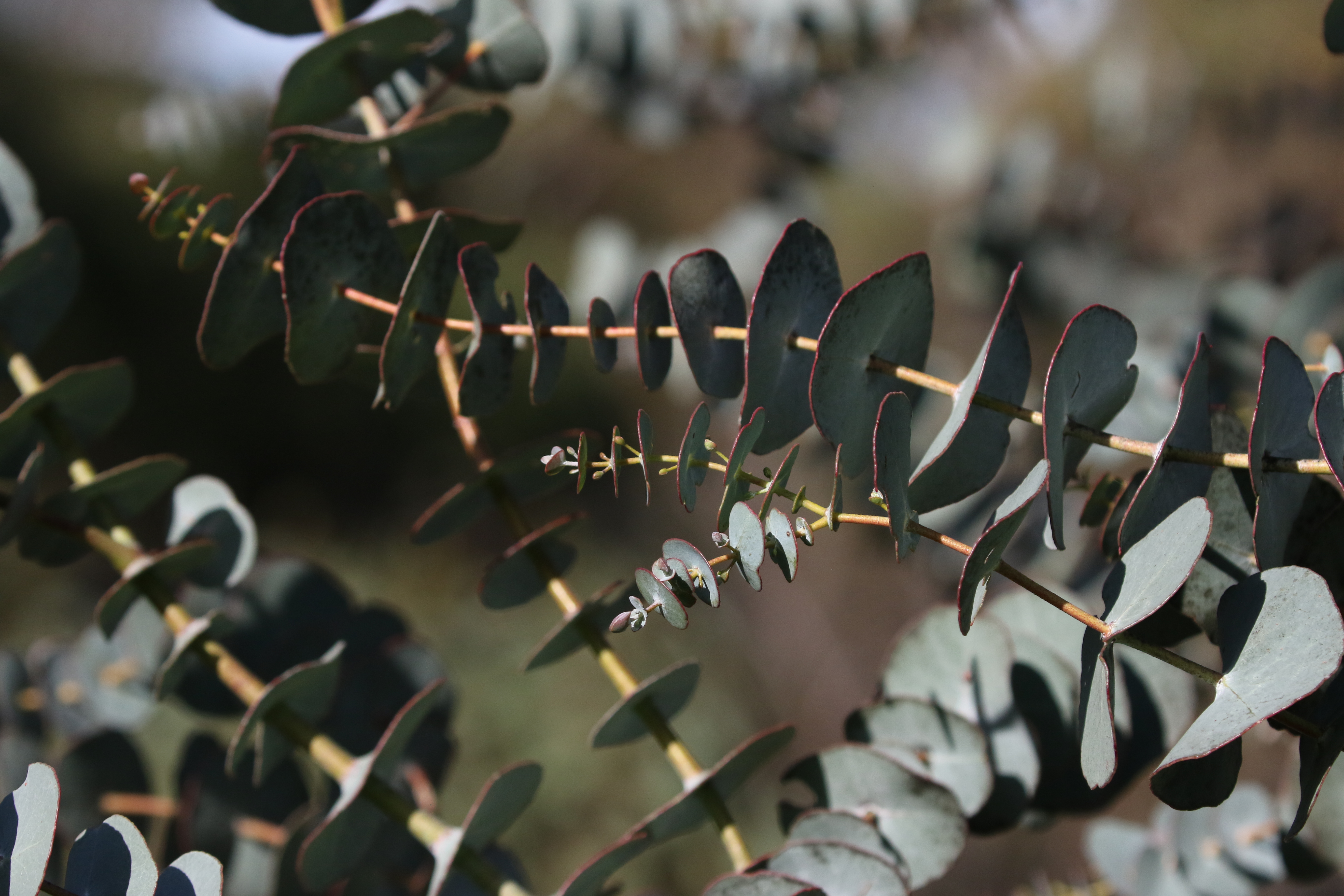inbox and environment news: Issue 573
February 26 - March 4 2023: Issue 573
Little Penguin Released Back Into Ocean At Palm Beach After Lifesaving Care At Taronga Wildlife Hospital
A Little Penguin is now back in the ocean after having made a full recovery from life-threatening injuries. The female bird had been treated at Taronga Wildlife Hospital in Sydney for seven weeks, but was relaxed and healthy when the hospital team released her off Sydney’s Palm Beach on Monday February 20th 2023.
“Nothing beats the feeling of being able to release a fully recovered Little Penguin back into the wild,” Taronga Wildlife Hospital Rescue and Rehabilitation Coordinator Libby Hall said.
The penguin was found lying lethargic with deep wounds on its back by a member of the public on Newcastle Beach on 1 January. Local wildlife group Hunter Wildlife Rescue brought the injured bird to Taronga Wildlife Hospital for specialist care.
Upon admission, the hospital team determined the penguin had three deep, rake-like wounds on her back, a gash on her belly and an injured right leg. She was examined under anaesthetic and x-rays were taken to ensure no other injuries were present.
“Although it is difficult to know exactly what has happened, judging by the pattern of the wounds she could have been attacked by another animal - potentially a sea eagle or even a dog,” Taronga Wildlife Hospital Veterinary Officer Frances Hulst said.
The penguin received full supportive care and pain relief, as well as regular wound care at the Taronga Wildlife Hospital during her stay. She also spent several weeks in the hospital’s dedicated rehabilitation area, where she was able to swim and exercise to regain her fitness and strength.
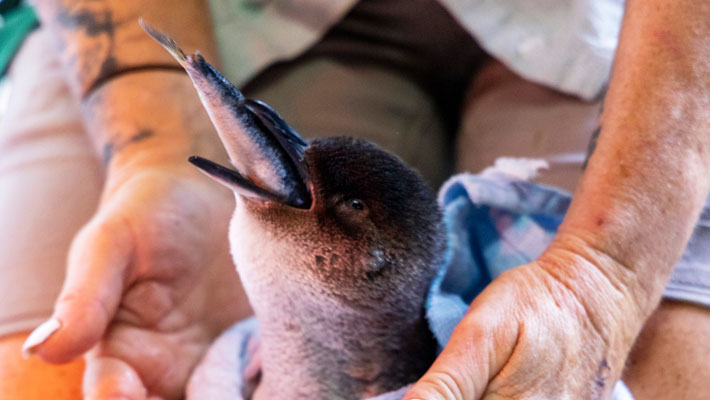
“We decided to release her off Palm Beach because there is a Little Penguin colony nearby, and we suspect she may have temporarily been travelling further up the coast when she sustained her injuries,” Taronga Wildlife Hospital Rescue and Rehabilitation Coordinator Libby Hall said.
However, the danger isn’t over for this Little Penguin. Moulting season takes place around March for Little Penguins in NSW, during which they replace their entire set of feathers with new ones.
During this time, they remain out of the water and are unable to feed and can lose up to 50 percent of their body weight which makes them weak and vulnerable to predators on land.
“The moulting season is the most vulnerable time of the year for Little Penguins, and that’s when we see an increase in injured penguins being treated in our wildlife hospital,” Libby explained.
“We urge people to keep your dog on a leash where there may be wildlife, but this is more important than ever during the entire month of March for penguins in NSW. Little Penguins may be hiding in a cave near the beach while they moult, so you might not be able to see them with the human eye, but your dog will be able to smell them,” she added.
The Little Penguin is the world’s smallest penguin species, and it’s the only penguin to breed in Australia. Every year, 1500 animals are admitted to Taronga Wildlife Hospitals, and Taronga is the leading contributor to veterinary services in wildlife treatment and rehabilitation in NSW.
Taronga’s strategic priority is to increase its capacity to assist wildlife in need, which is why work is underway to build a new world-class wildlife hospital in Sydney.
The new Taronga Wildlife Hospital in Sydney – set to open in 2025 – will increase the hospital’s capacity to hold and care for injured wildlife including turtles, koalas and platypus and other native animals by 400 percent.
The project is a joint philanthropic project between Taronga and the NSW State Government, with the NSW State Government matching philanthropic donations to Taronga up to $40 million.
.jpg?timestamp=1677117696224)
Photos: Little penguin being fed while in care and Taronga Wildlife Hospital Veterinary-Officer-Frances Hulst checking up on penguin. Images: Taronga Wildlife Hospital
Lerp On Angophora And Corymbia Spp. At Present
Residents are reporting 'tree dandruff' at present falling from Angophora and Corymbia spp. trees. This is what is known as 'lerp'. Lerps are the shell or covering that some psyllid insects make during their juvenile stage. Psyllids are sap sucking insects usually only a few millimetres long and are easily overlooked. However the lerps are quite visible being up to 1cm long and with distinctive designs.
Each lerp is made from the waste excretion of a juvenile psyllid. As with many other sap sucking insects this waste is high in sugars and is sometimes called ‘honeydew’. It’s thought the lerp shell provides protection against the weather and predators. Ants can often be seen around the lerps collecting the sugary honeydew and fighting off predatory insects. You will also see birds feeding on them.
A large outbreak of lerps on a tree often indicates that the tree is under stress for other reasons. Psyllids can be a problem on a broad range of plants but the species that create lerps seem to only attack gum trees. This includes our local Eucalyptus, Angophora and Corymbia spp.
How To Organically Control Lerps:
Wipe leaves clean with a damp cloth or cut off infested sections. Restrict ant access by applying a band of horticultural glue around the main trunk.
Weekly doses of OCP eco-seaweed to help reduce plant stress.
You can also improve plant heath by assessing the growing conditions and make the necessary corrections. Ask yourself questions like: Is the soil compacted? What is the soil pH? Are the watering and fertilising levels correct? Does the tree get enough light?
Information courtesy Eco Organic Garden and PNHA. Photos: AJG/PON
.jpg?timestamp=1676928286158)
.jpg?timestamp=1676928315296)
Thunderstorms Close Wakehurst Parkway - Local SES Units Respond To Calls For Help - White Slug Comes Out To Feast After The Rains
This slug (Triboniophorus graeffei) feeds on microscopic algae on smooth bark eucalypts, and algae on other smooth surfaces, leaving a narrow wiggly track. The Red Triangle Slug is Australia's largest native land slug. The distinctive red triangle on its back contains the breathing pore. This one was photographed in the Pittwater Online backyard this morning, Wednesday February 22nd, amid all the rain we've had overnight.
.jpg?timestamp=1677016447101)
The NSW State Emergency Service - Operational Statistics Update for February 22nd, 2023
Severe thunderstorms impacted Sydney Metropolitan, Central West and Southern Tablelands yesterday.
In total, NSW SES received 377 (227 Sydney Metro) incidents in the last 24 hours (to 5am). 12 (11 Sydney Metro) Flood Rescues (Mainly involving cars driving into floodwater).
Focus areas:
- Warringah Pittwater (and Manly Unit) – 51
- Orange – 42
- Queanbeyan – 33
- Ku-ring-gai – 21
- Sutherland – 17
The NSW SES Warringah / Pittwater Unit reported it had been a busy night for Warringah/Pittwater and NSW SES Manly Units:
''We currently have 4 of our vehicles attending to jobs, along with NSW SES Manly Unit, and several RFS units assisting us. In addition to this we have our Flood Rescue team along with Flood Rescue Teams from Manly and NSW SES Ku-Ring-Gai Unit
There has been 44 Requests for Assistance tonight, including 4 Flood Rescues.
We had 60mm of rain in a 1 hour period, which caused multiple roads to flood. There is more rain expected over night. So please take care.''
If you need emergency assistance due to flood/storm damage, call NSW SES on 132 500. If life threatening, call 000.

Parkway floods along multiple points
Live Traffic reported that the Wakehurst Parkway closed at 8:26pm on Tuesday February 21st 2023 - it had not reopened 12 hours later - 8:27am Wednesday February 22nd 2023. The map from Live Traffic shows the Parkway has flooded at three places along its length, between Dreadnought Road at Frenchs Forest and Wimbledon Avenue at North Narrabeen:
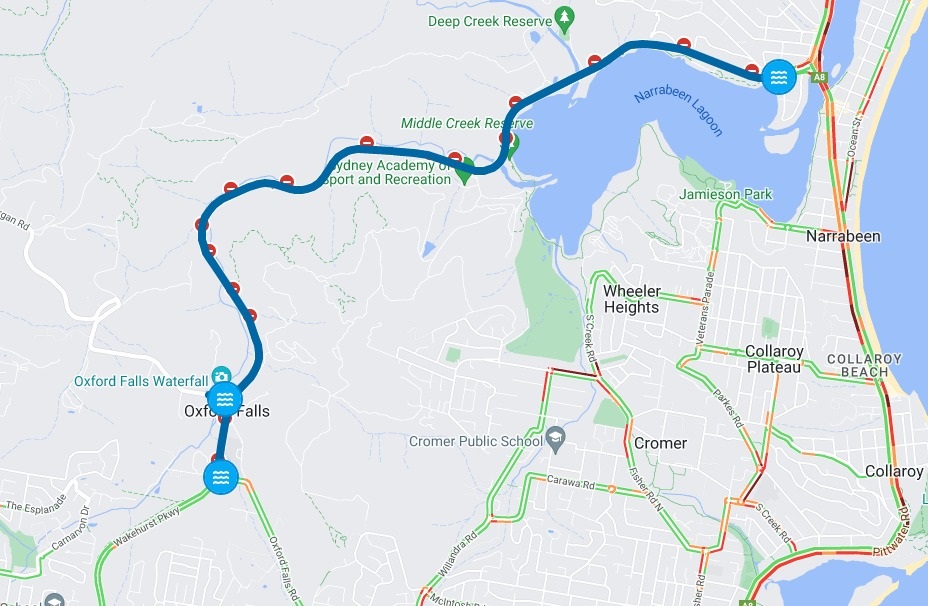

Plastic Boardwalk Through Manly Warringah War Memorial Park: 'We Can Do Better!' States Save Manly Dam Bushland Group
WE CAN DO BETTER !!
Boardwalk Empire from Malcolm Fisher on Vimeo.
Australia’s Hotly Contested Eucalypt Of The Year Voting Opens Today!
Australia’s much loved - and hotly contested - Eucalypt of the Year voting is now open. Passionate gumtree lovers across the country are invited to vote for their favourite gum, now in its sixth consecutive year. There are ~850 species of eucalypt across the continent and they are an unmistakable feature of living where we do.
“After running for five years, there are still hundreds of eucalypts that haven’t had their time in the sun as Eucalypt of the Year. We’ve whittled down the species to a shortlist of 25 that represent a diverse range of ecological features and geographical spread to make it easier for you to vote. Last year’s winner - the mighty Mountain Ash (Eucalyptus regnans) is not eligible. Now is the time to cast your vote for your personal favourite,” says Linda Baird, CEO of Eucalypt Australia.
People can vote for their favourite eucalypt until 19th March at www.eucalyptaustralia.org.au
The winning eucalypt will be announced on National Eucalypt Day, Thursday March 23. National Eucalypt Day is Australia’s biggest annual celebration of eucalypts held every year to celebrate and promote Australia’s eucalypts and what they mean to our lives and hearts.
Tell the organisers how you voted on social media by tagging @EucalyptAus using the hashtag #EucalyptoftheYear. The 25 shortlisted species are:
- Angophora costata (Sydney Red Gum)
- Angophora hispida (Dwarf Apple)
- Corymbia aparrerinja (Ghost Gum)
- Corymbia citriodora (Lemon-scented Gum)
- Corymbia ficifolia (Red-flowering Gum)
- Corymbia opaca (Desert Bloodwood)
- Corymbia ptychocarpa (Swamp Bloodwood)
- Eucalyptus caesia (Silver Princess)
- Eucalyptus cinerea (Argyle Apple)
- Eucalyptus cneorifolia (Kangaroo Island Narrow-leaved Mallee)
- Eucalyptus lansdowneana (Crimson mallee)
- Eucalyptus platyphylla - (Poplar Gum)
- Eucalyptus leucoxylon - (Yellow Gum or South Australian Blue Gum)
- Eucalyptus macrandra (River Yate)
- Eucalyptus marginata (Jarrah)
- Eucalyptus miniata (Darwin Woollybutt)
- Eucalyptus perriniana (Tasmanian Spinning Gum)
- Eucalyptus radiata (Narrow-leaved Peppermint)
- Eucalyptus rhodantha (Rose Mallee)
- Eucalyptus rubida (Candlebark)
- Eucalyptus salmonophloia (Salmon Gum)
- Eucalyptus oleosa (Giant Mallee)
- Eucalyptus synandra (Jingymia Mallee)
- Eucalyptus tetraptera (Square-fruited Mallee or Four-winged Mallee)
- Eucalyptus vernicosa (Varnished Gum)
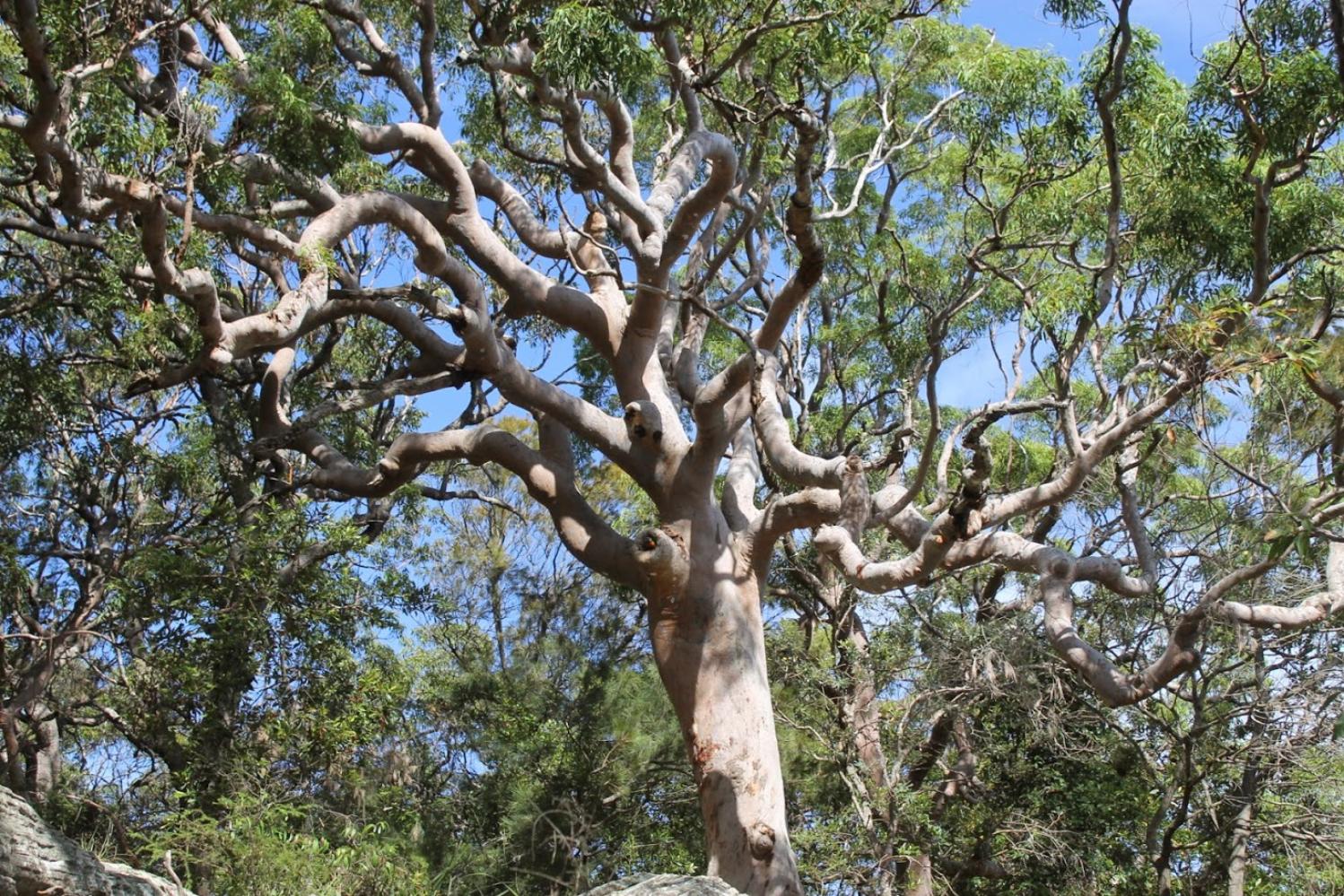
Angophora costata (Sydney Red Gum), McKay Reserve Palm Beach. Photo: A J Guesdon
Tasmanian Spinning Gum Eucalyptus perriniana. Photo: Remember The Wild, Catherine Cavallo, Instagram handle rememberthewild
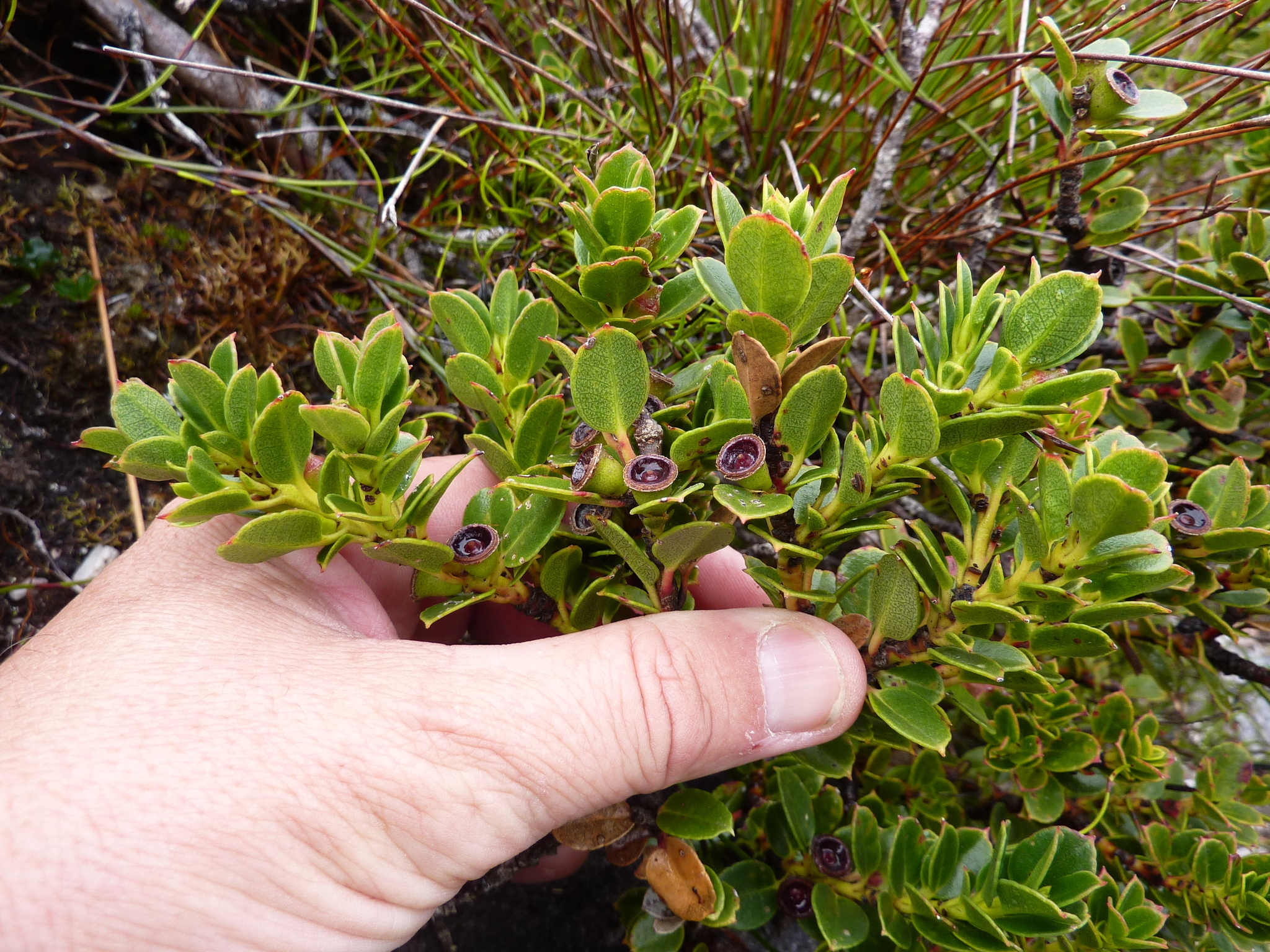
Varnished Mallee Eucalyptus vernicosa. Photo: Dean Nicolle
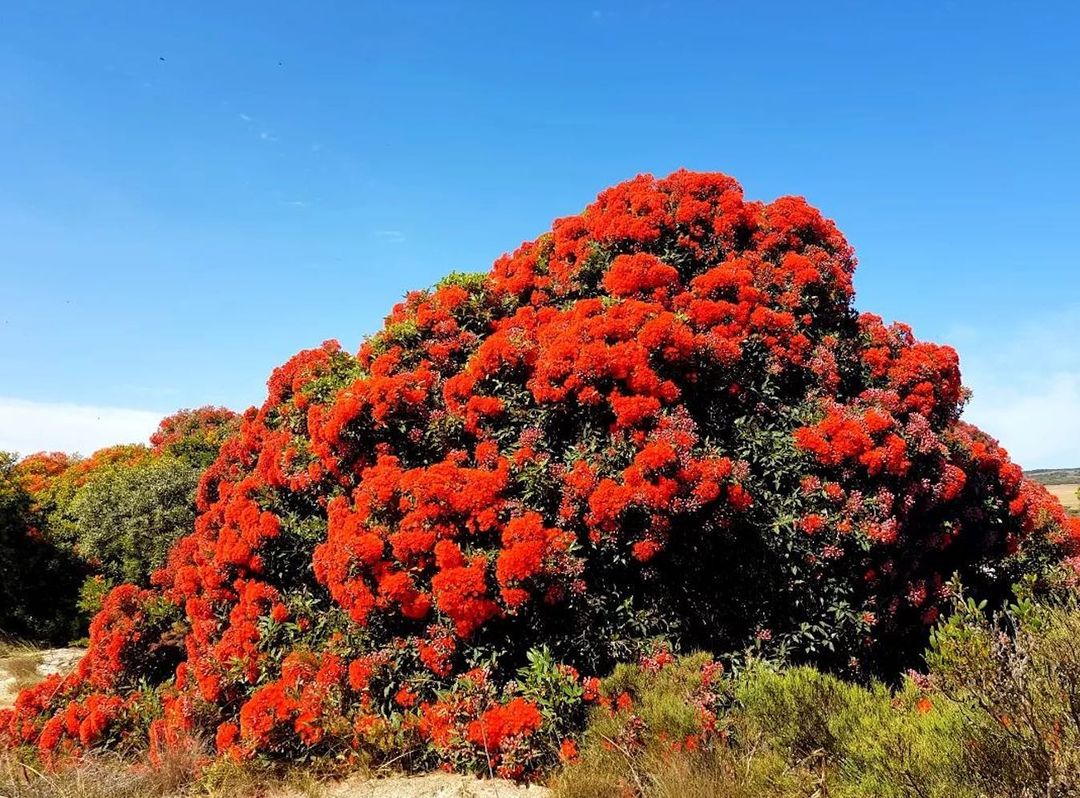
Red Flowering Gum Corymbia ficifolia. Photo: Melanie Cooper, Instagram handle maxxle5
Report Fox Sightings
%20(1).jpg?timestamp=1675893929686)
Ticks And Mosquitos In Narrabeen Lagoon Catchment
 A Friends of Narrabeen Lagoon Catchment meeting Monday 27th February 7pm
A Friends of Narrabeen Lagoon Catchment meeting Monday 27th February 7pm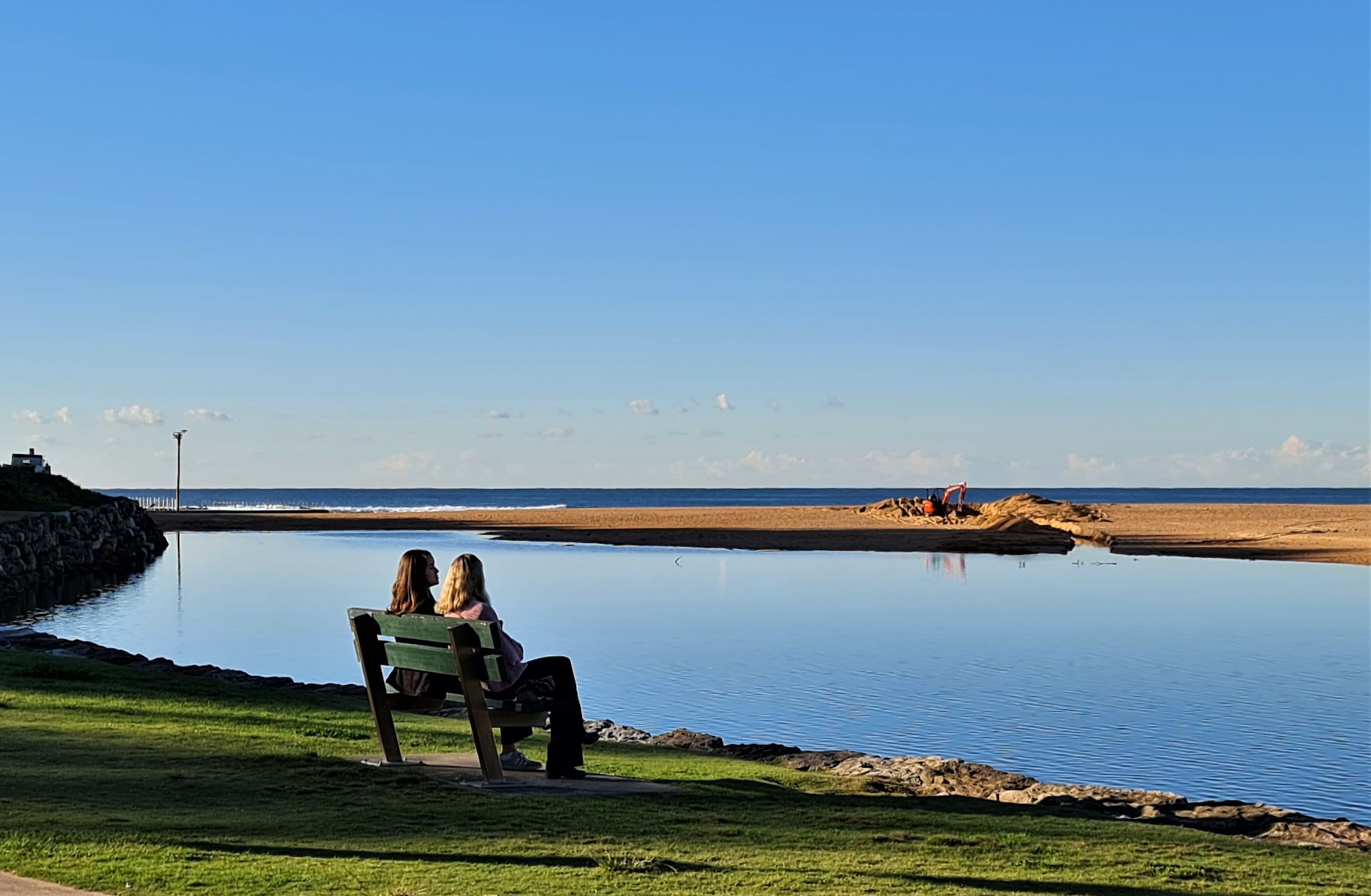
Avalon Dunes Bushcare Returns Sunday March 5th
Next will be on March 5, meeting at 8.30 in the parking area off Tasman Rd south.
We work until 11.30 but any time you can spare is wonderful.
We always find interesting insects and other wildlife. We can see the progress happening as we work in this corner of the 4.5ha dunes.
Call in to say hello or phone 0420 817 574 if you can't see us there.
New helpers very welcome, and there's always something yummy for morning tea.
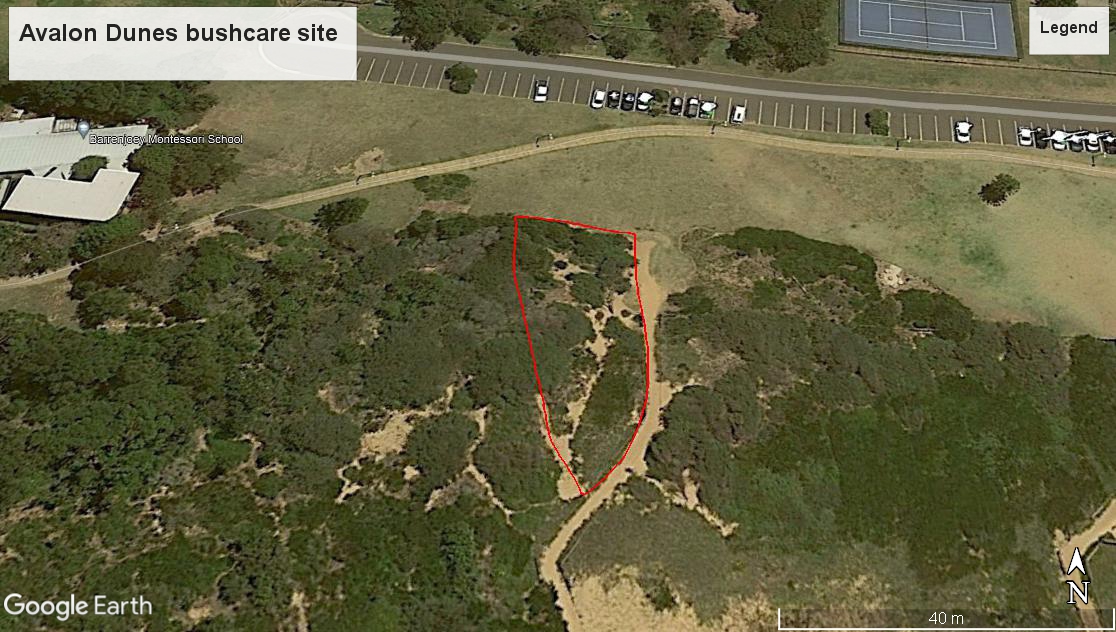
Our bushcare area is within the red lines. We can work in the shade in summer, or in sun in winter. Barrenjoey High school is to the north.
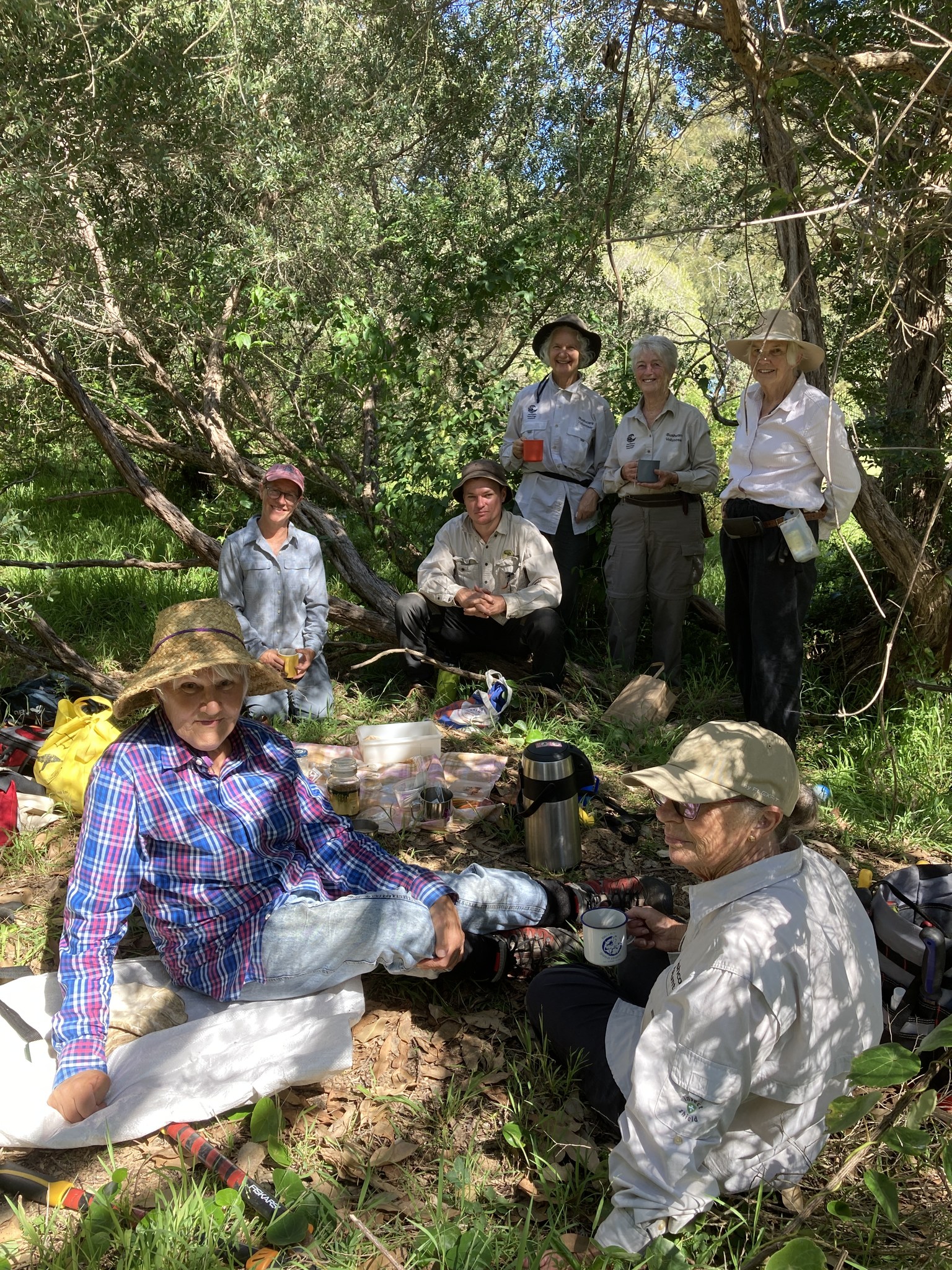
Morning tea with good company and cake.

The egg case or ootheca of a Praying Mantis. Each ootheca contains a number of eggs, up to 200 with some species. Mantis eggs can take anywhere from 40 days to around five months to hatch. On hatching, the baby mantises are about as big as a large ant. The tiny holes on this one suggest the eggs have hatched.
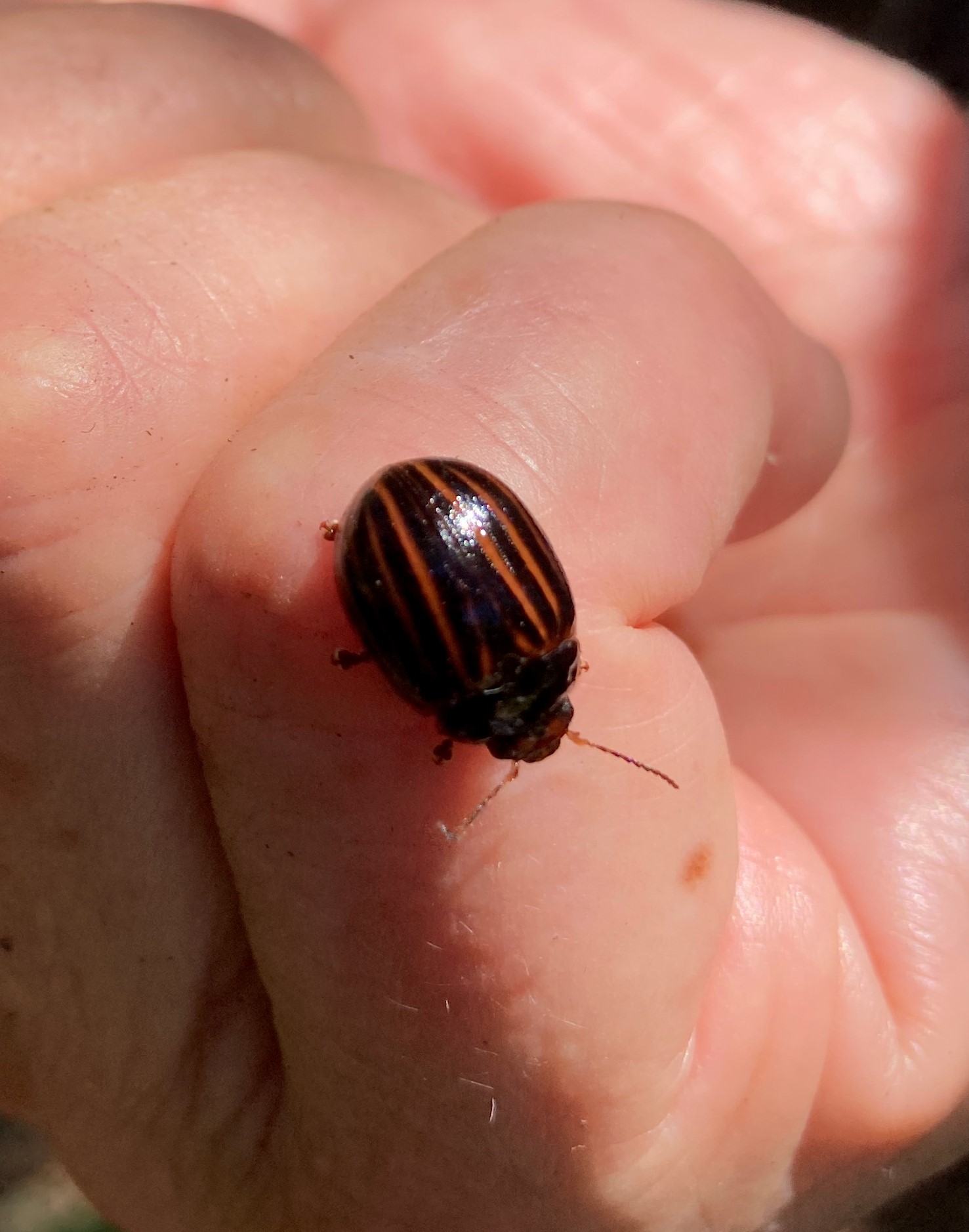
This Leaf Beetle in the genus Paropsisterna. It has been feeding on Eucalypt or Acacia foliage. It is one of Australia's many beetles. The total species number is estimated to be in the range of 80,000 to 100,000.
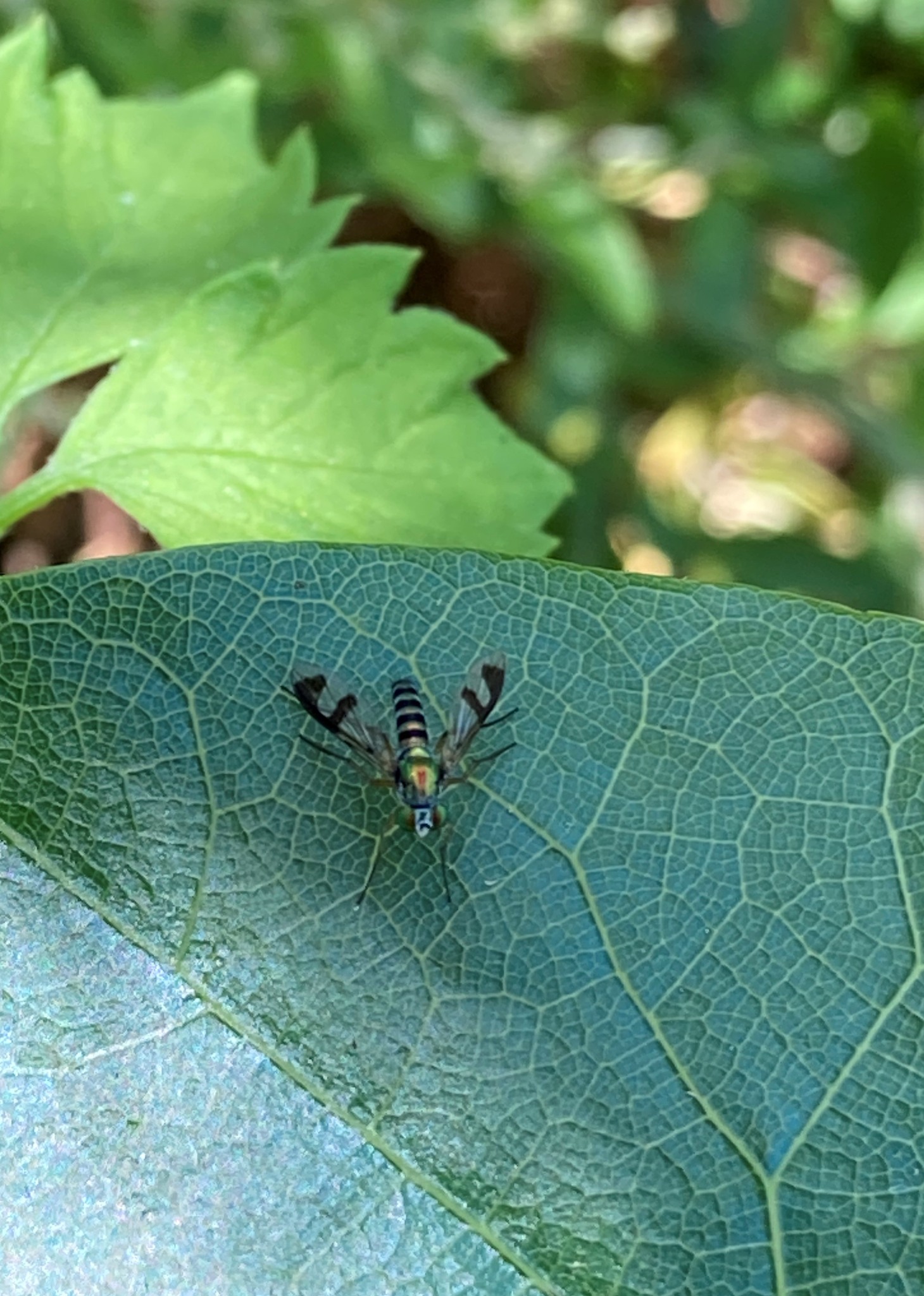
A long-legged Dancing Fly pauses on a leaf of Snake Vine.
Photos; PNHA
Ocean Street Narrabeen Bridge Works
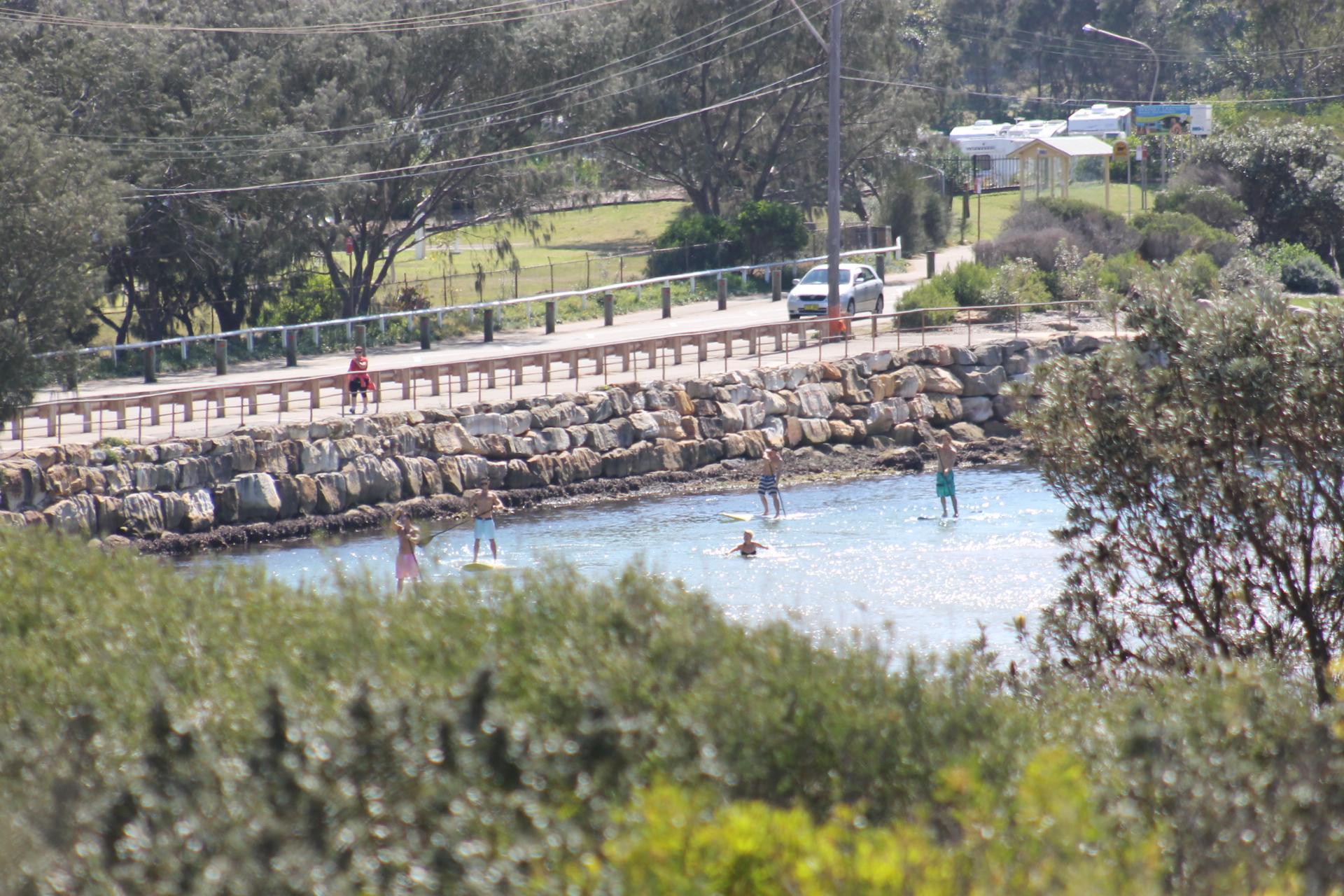
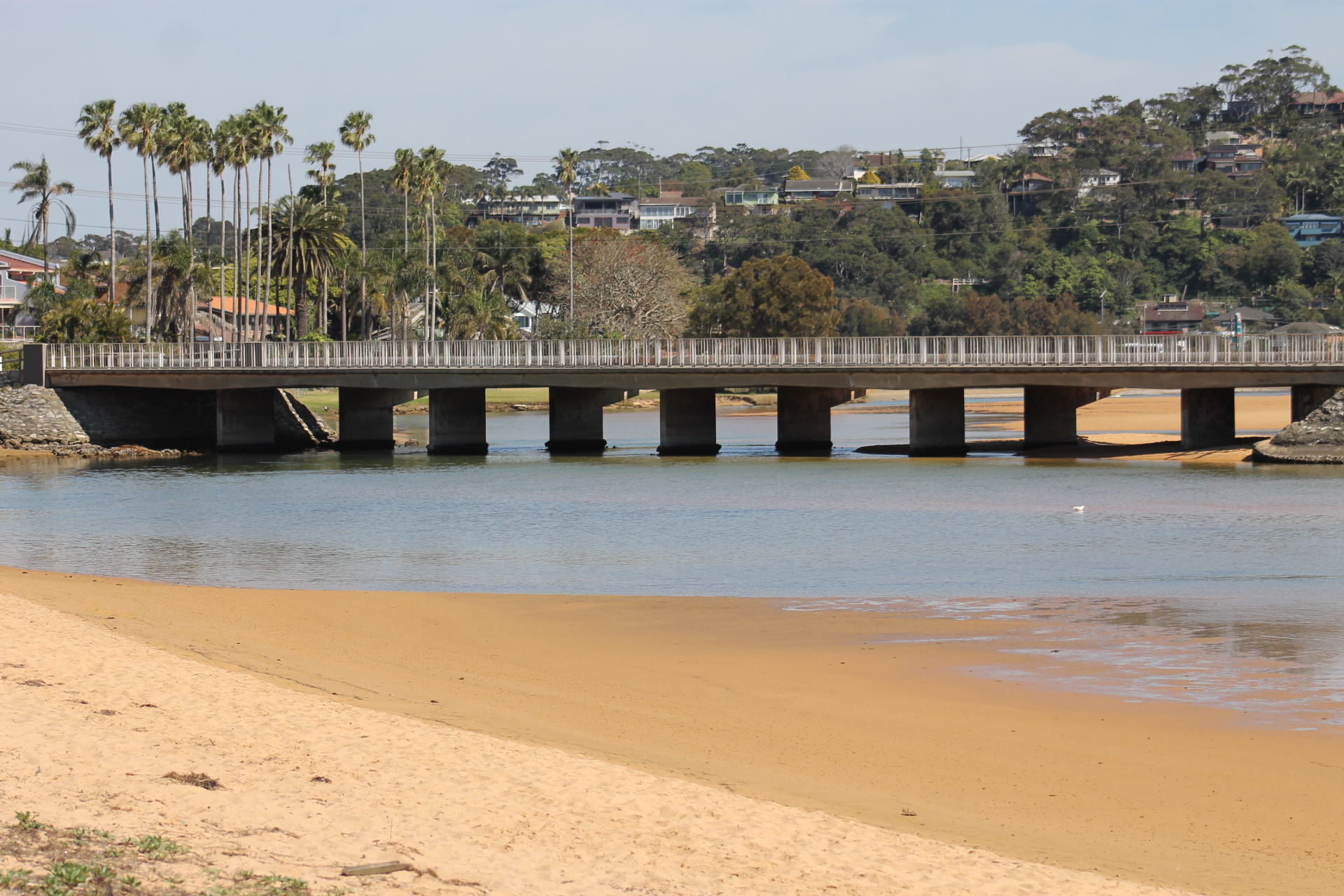
Collins Beach Clean Up
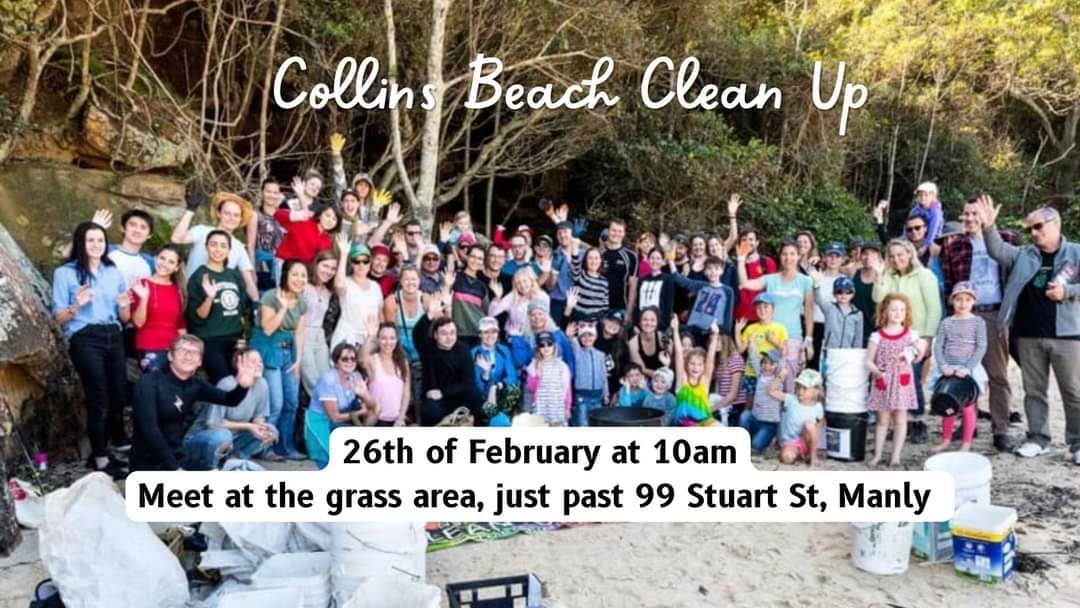
Concert: Rock For Lizard Rock
FREE. Register at: https://www.eventbrite.com/e/rock-for-lizard-rock-tickets-554768135427

Create A Spit To Seaforth Oval Walk: The Missing Link - Petition
There is approx. 20,000 square metres of land situated between Rignold Street and Castle Circuit, Seaforth. The largest block is now FOR SALE. There is currently contracts out to overseas investors and developers.
The land is separated by conservation land that joins Garigal National Park. This land should be purchased and returned to the community for all to enjoy and wildlife to be given a fighting chance at survival.
This is a thriving riparian zone that should be made a wildlife corridor. It is currently the wildlife corridor that connects existing corridors to Garigal National Park .Running through the middle of the land is a permanent water source that attracts and aids the survival of many animals. Currently there are wallabies, echidnas, powerful owls, lyrebirds, monitor lizards, water dragons, numerous species of small birds and insects such as a large variety of dragonflies.
The Powerful Owl is listed as vulnerable in NSW and there is talk of changing the lyrebird's status to threatened in light of the recent loss of habitats due the devastating fire season of last summer. The Seaforth Mint Bush is listed as critically endangered. The Angophora's are a protected species.
The loss of hollow bearing trees is a key threatening process in determining whether or not these vulnerable and threatened species will survive.
Given the conservation status of this flora and fauna I am asking for this land be bought back to create a wildlife corridor to join the land that was saved behind Dalwood homes. At present the land is made up of two privately owned properties, one is owned by a Chinese consortium and the other is owned by an American family. Both parcels have derelict houses that are falling down, leaving shattered glass, asbestos and building rubble spread through the bush. One property has no street access and is only accessible by water.
Thank you to all who have read this far and thank you in anticipation of your signatures helping to protect this very unique area.
Petition at: https://www.change.org/p/create-a-spit-to-seaforth-oval-walk
THIS IS THE MISSING LINK TO CREATING A FORESHORE WALK THROUGH SEAFORTH.
Prune Viburnum Hedge Agapanthus Flowers To Prevent Spread Into Bush Reserves
PNHA: January 11, 2023
Now is the time to prune the berries off the Viburnum hedge and dehead those old Agapanthus flowers. Put these prunings into your green waste bin. Both are now weeds of bushland as their seeds travel.
Photos: Pittwater Natural Heritage Association (PNHA)
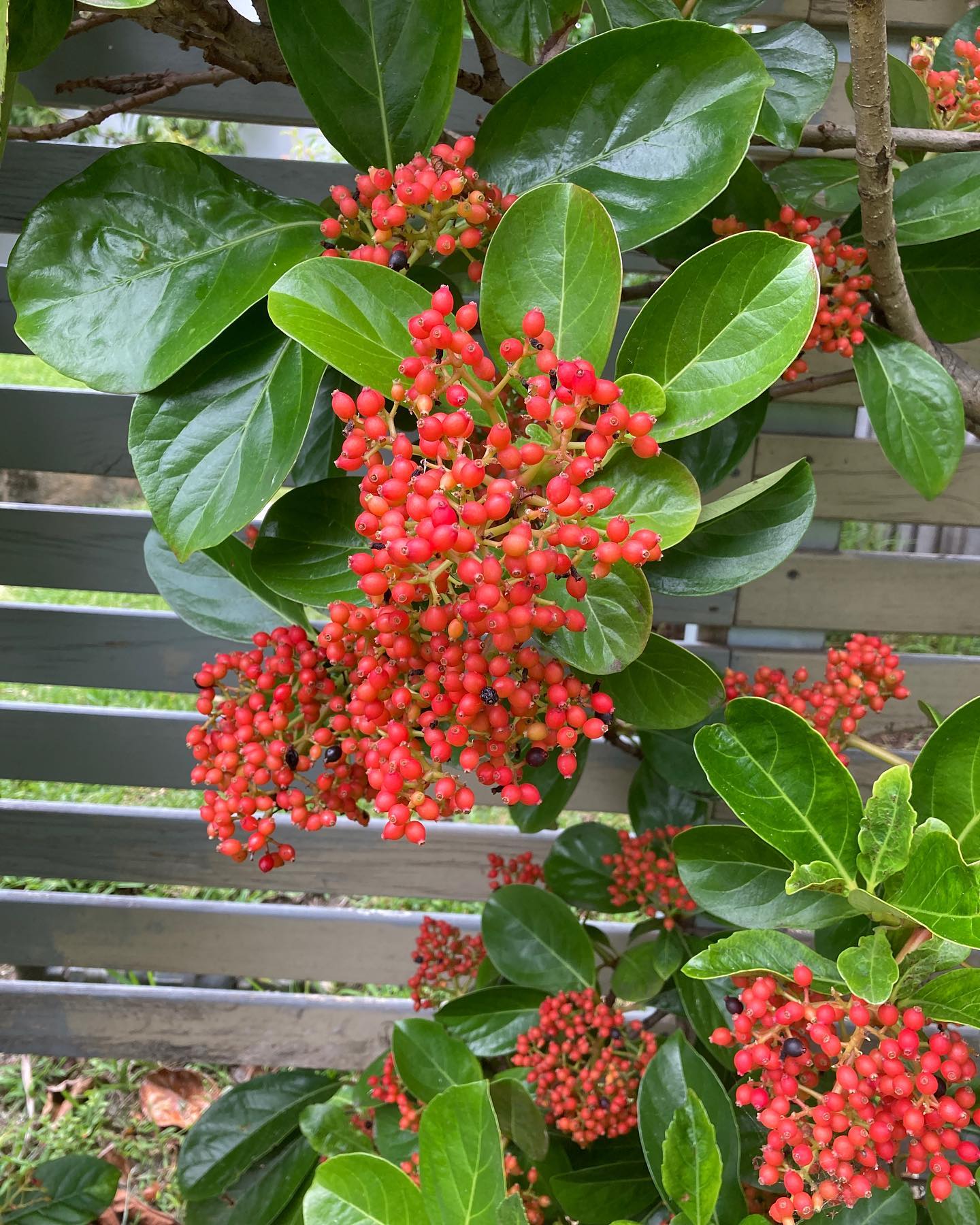
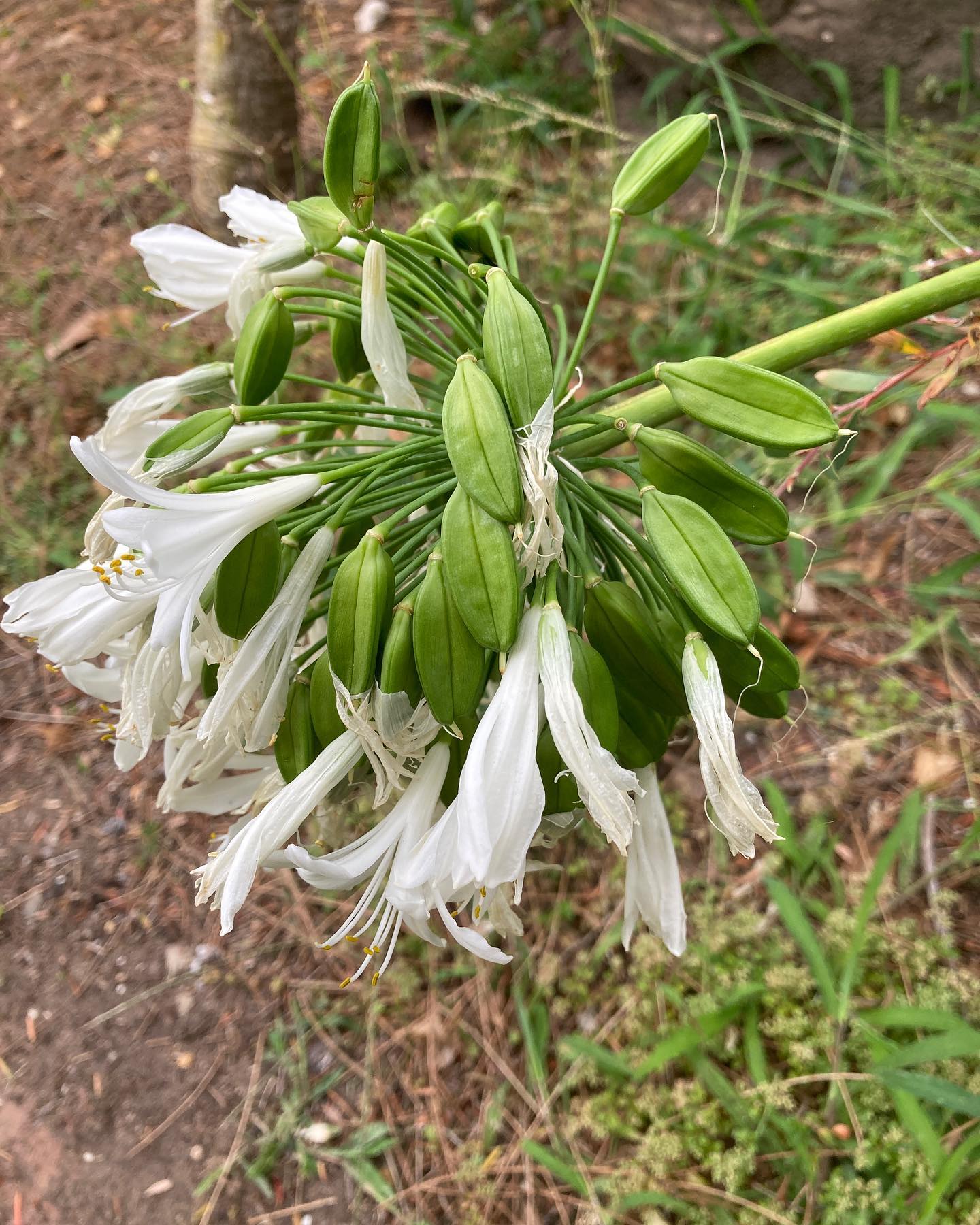
New Marine Wildlife Rescue Group On The Central Coast
A new wildlife group was launched on the Central Coast on Saturday, December 10.
Marine Wildlife Rescue Central Coast (MWRCC) had its official launch at The Entrance Boat Shed at 10am.
The group comprises current and former members of ASTR, ORRCA, Sea Shepherd, Greenpeace, WIRES and Wildlife ARC, as well as vets, academics, and people from all walks of life.
Well known marine wildlife advocate and activist Cathy Gilmore is spearheading the organisation.
“We believe that it is time the Central Coast looked after its own marine wildlife, and not be under the control or directed by groups that aren’t based locally,” Gilmore said.
“We have the local knowledge and are set up to respond and help injured animals more quickly.
“This also means that donations and money fundraised will go directly into helping our local marine creatures, and not get tied up elsewhere in the state.”
The organisation plans to have rehabilitation facilities and rescue kits placed in strategic locations around the region.
MWRCC will also be in touch with Indigenous groups to learn the traditional importance of the local marine environment and its inhabitants.
“We want to work with these groups and share knowledge between us,” Gilmore said.
“This is an opportunity to help save and protect our local marine wildlife, so if you have passion and commitment, then you are more than welcome to join us.”
Marine Wildlife Rescue Central Coast has a Facebook page where you may contact members. Visit: https://www.facebook.com/profile.php?id=100076317431064
- Ph: 0478 439 965
- Email: marinewildlifecc@gmail.com
- Instagram: marinewildliferescuecc

Watch Out - Shorebirds About
.JPG.opt1460x973o0,0s1460x973.jpg?timestamp=1663629195339)
Possums In Your Roof?: Do The Right Thing

Aviaries + Possum Release Sites Needed

Bushcare In Pittwater
Where we work Which day What time
Avalon
Angophora Reserve 3rd Sunday 8:30 - 11:30am
Avalon Dunes 1st Sunday 8:30 - 11:30am
Avalon Golf Course 2nd Wednesday 3 - 5:30pm
Careel Creek 4th Saturday 8:30 - 11:30am
Toongari Reserve 3rd Saturday 9 - 12noon (8 - 11am in summer)
Bangalley Headland 2nd Sunday 9 to 12noon
Bayview
Winnererremy Bay 4th Sunday 9 to 12noon
Bilgola
North Bilgola Beach 3rd Monday 9 - 12noon
Algona Reserve 1st Saturday 9 - 12noon
Plateau Park 1st Friday 8:30 - 11:30am
Church Point
Browns Bay Reserve 1st Tuesday 9 - 12noon
McCarrs Creek Reserve Contact Bushcare Officer To be confirmed
Clareville
Old Wharf Reserve 3rd Saturday 8 - 11am
Elanora
Kundibah Reserve 4th Sunday 8:30 - 11:30am
Mona Vale
Mona Vale Beach Basin 1st Saturday 8 - 11am
Mona Vale Dunes 2nd Saturday +3rd Thursday 8:30 - 11:30am
Newport
Bungan Beach 4th Sunday 9 - 12noon
Crescent Reserve 3rd Sunday 9 - 12noon
North Newport Beach 4th Saturday 8:30 - 11:30am
Porter Reserve 2nd Saturday 8 - 11am
North Narrabeen
Irrawong Reserve 2nd Saturday 2 - 5pm
Palm Beach
North Palm Beach Dunes 3rd Saturday 9 - 12noon
Scotland Island
Catherine Park 2nd Sunday 10 - 12:30pm
Elizabeth Park 1st Saturday 9 - 12noon
Pathilda Reserve 3rd Saturday 9 - 12noon
Warriewood
Warriewood Wetlands 1st Sunday 8:30 - 11:30am
Whale Beach
Norma Park 1st Friday 9 - 12noon
Western Foreshores
Coopers Point, Elvina Bay 2nd Sunday 10 - 1pm
Rocky Point, Elvina Bay 1st Monday 9 - 12noon
Friends Of Narrabeen Lagoon Catchment Activities

Gardens And Environment Groups And Organisations In Pittwater
NSW Still Holding The Murray Darling Basin Plan Back
The Murray Darling Basin Authority has released a six-monthly report card on the progress of the Murray Darling Basin Plan, highlighting yet again that when it comes to the Basin Plan, NSW continues to have the hand brake on.
The law requires all Water Resource Plans to have been approved by July 2019, however NSW have only today (February 14) resubmitted the critical documents. It is yet to be seen if these overdue NSW Water Resource Plans are sound enough to be accredited.
Nature Conservation Council (NCC) Chief Executive Officer Jacqui Mumford says NSW had since 2012 to get twenty Water Resource Plans written by the 2019 deadline, but has dragged its feet while still taking the lion’s share of water from the Basin.
“We’ve seen successive NSW Coalition Water Ministers duck and weave, avoiding their responsibilities to the rivers of the Murray Darling Basin, and are now almost four years late with their homework," said Ms Mumford.
“For almost four years, there has been no way for the Commonwealth to determine if water extraction in NSW is over the legal limits.
“NSW has the biggest contribution to make to the implementation of the Murray Darling Basin Plan, because we’ve been the biggest water users. The enormous wealth created for a privileged few by excessive water take has come at huge cost to First Nations communities and the environment.
“The balance between industry and the environment when it comes to water sharing has been heavily skewed to favour industry for over a hundred years. Clawing back some water for the health of the rivers under the Basin Plan still falls a long way short of that elusive concept of balance.” said Ms Mumford.
NCC is extremely concerned that NSW is actively working against the principles of the Basin Plan by issuing an environmentally unsustainable volume of floodplain harvesting entitlements.
“NSW is driving water management backwards – instead of working with the Commonwealth and other states to return water to inland rivers, it’s handing out billions of litres of brand-new water entitlements to privileged floodplain harvesting irrigation corporations” said Ms Mumford.
Related:
NSW Government Shows Contempt For Democratic Process With 5th Introduction Of Floodplain Harvesting Regulations
Basin Plan Report Card Paints Clearer Picture As 2024 Deadline Nears
February 14, 2023
The latest assessment of progress to implement the Murray–Darling Basin Plan has found only minor movement in the past 6 months, with important elements at risk or unlikely to be achieved by the June 2024 deadline.
Chief Executive of the Murray–Darling Basin Authority, Andrew McConville said progress in some areas was overshadowed by lack of advancement in others.
"The Basin Plan needs to be fully implemented if it’s to achieve the outcomes we’re seeking for a healthy and sustainable Basin for all communities. It is becoming clear what will and won’t be achieved by June next year," Mr McConville said.
In line with the MDBA's commitment to transparency, the ninth report card provides a clear picture of the status and progress on five areas of the Basin Plan: water resource plans, water recovery, Sustainable Diversion Limit (SDL) adjustment mechanism measures, Northern Basin initiatives and the delivery of water for the environment.
"Since the July 2022 report card, we have seen some progress with 4 New South Wales water resource plans accredited for groundwater resources. However, the dial remains firmly on the red because there is still a way to go to get all the WRPs accredited," Mr McConville said.
"The dial for some projects under the Sustainable Diversion Limit adjustment mechanism also remains on red. Of the 36 supply and constraints projects, 22 are likely to be operable, 8 are on the cusp of delivery and 6 will not be delivered as originally proposed by 30 June 2024.
"We’ve seen positive outcomes from good planning and delivery of environmental water across the Basin – this is critically important and underpins the very foundation of the Basin Plan to support the health of rivers, floodplains and wetlands. The focus of the past 6 months has been to support bird breeding events and to improve water quality where floods have resulted in low oxygen levels."
Mr McConville said some of the northern Basin toolkit measures in the northern Murray–Darling Basin were running behind schedule, with one measure in particular highly unlikely to be delivered on time.
"These important initiatives are intended to protect water for the environment, improve compliance with water laws and create opportunities for local communities, including First Nations People. It is in everyone’s interest that greater headway is made towards completing the northern Basin toolkit measures."
The Basin Plan Report Card is available on the MDBA website at: https://www.mdba.gov.au/publications/mdba-reports/basin-plan-report-card
Background
The Basin Plan was agreed by the Australian Government and the governments of New South Wales, Queensland, South Australia, Victoria and the Australian Capital Territory. It is a major reform agenda that was created to improve and protect the health of the rivers for future generations, while continuing to support farming and other industries, for the benefit of the Australian community.
The Murray–Darling Basin Plan is being implemented over a transition period to 2024 to allow time for Basin states, communities and the Australian Government to work together to manage the changes required for a healthy working Basin. The Basin Plan is an ongoing commitment. In accordance with legislative requirements, the Plan will be formally evaluated in 2025 and reviewed in 2026 by the MDBA.
Herding cats: councils’ efforts to protect wildlife from roaming pets are hampered by state laws
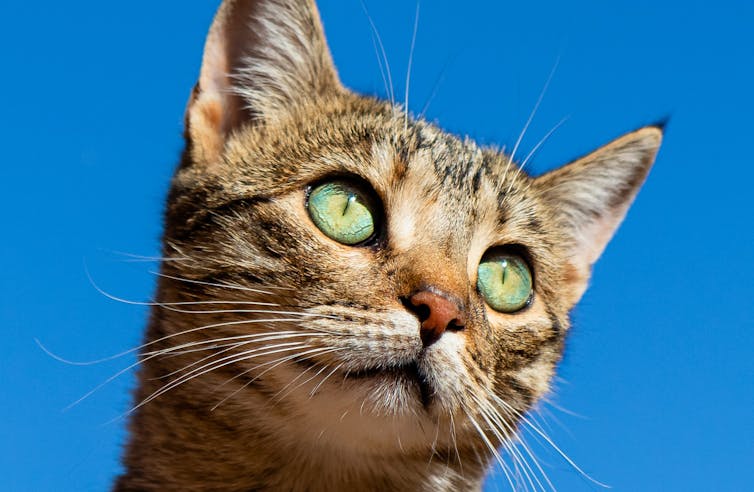
How we manage pet cats in our suburbs is in the spotlight. As the estimated number of pet cats in Australia passes 5 million, people are increasingly aware of the damage cats do to wildlife.
One-third of owners already keep their cats securely contained 24 hours a day. This has major benefits for cat welfare and prevents cats killing and disturbing wildlife. But that leaves the other 3.5 million or so pet cats free to roam for at least part of the day or night.
In Australia, local government is responsible for regulating our feline pets, but little is known about how this works in practice. We sent a survey to every local council in Australia to understand their approaches to managing pet cats and how these could be improved. We received responses from 240 councils (45%).
Councils across Australia reported managing pet cats is a challenge. But many are adopting regulations that to help protect local wildlife and improve the wellbeing of pet cats. However, state laws, especially in Western Australia and New South Wales, are making it difficult for local councils to manage pet cats well.

Cats Kill More Than Their Owners Realise
Why the big deal? Many cat owners think their moggy is blameless. “I don’t think my cat goes out that much and I never see any dead animals,” they often say. This is largely untrue.
Research shows the impact of pet cats is much bigger than people realise. Many cats don’t bring home what they kill, or bring back only a very small proportion (15% on average), so their owners aren’t aware of the majority of the wildlife toll. Radio-tracking studies have shown a large proportion of cats are out on adventures when their owners thought they were inside.
On average, each roaming, hunting pet cat in Australia kills 40 native reptiles, 38 native birds and 32 native mammals per year.
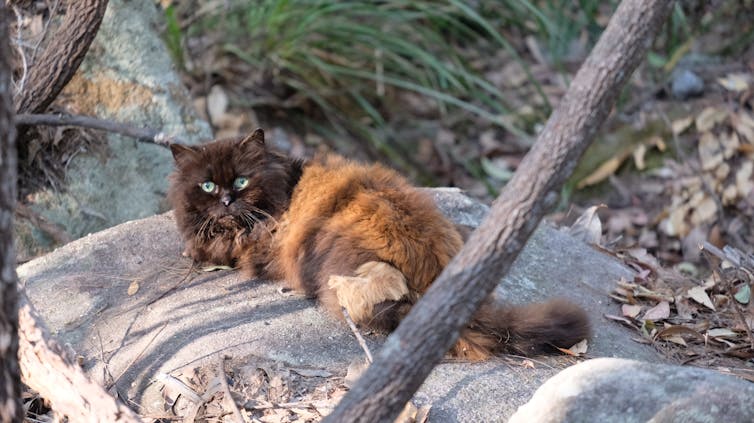
Our suburbs are now home to around 55 cats per square kilometre. That adds up to about 6,000 native animals killed per square kilometre per year in our suburbs alone. The national wildlife death toll from pet cats is well over 300 million native animals per year.
Even when roaming cats don’t kill animals, they have negative impacts on wildlife by spreading diseases and because wildlife must spend more time hiding or escaping instead of feeding and caring for young.
As well as hunting wildlife, roaming pet cats can increase feral cat populations if unwanted litters are abandoned.
Seeing wildlife, like blue-tongued lizards and fairywrens, in our gardens and local parks is something we all cherish. How we manage pet cats can either jeopardise our co-existing wildlife or help to safeguard it. So we set out to examine how pet cats are being managed across the country.
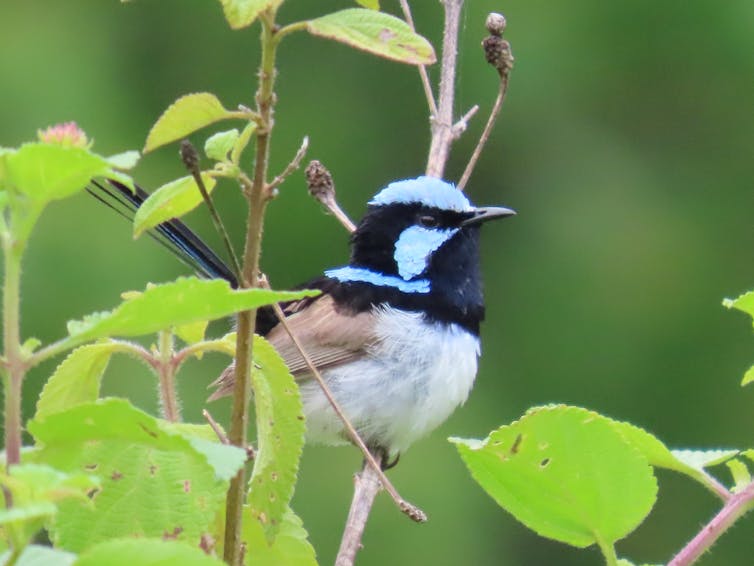
What Are Councils Doing About It?
Our survey found almost all local councils require pet cats to be microchipped. Three-quarters require them to be registered. Just over half require desexing and limit the number of cats that can be kept per household.
These approaches are very important to manage pet cats and constrain their numbers and should be extended to all local government areas. However, these measures do not prevent pet cats roaming.
Concern about the impacts of roaming cats has led almost one-third of councils to introduce cat-free areas, cat curfews and containment requirements at all or some places in their local government area. Where adequately policed, these measures appear to be working.

These approaches are most common in city areas of the ACT, Victoria and South Australia, and on some islands. The number of local government areas using this approach has grown markedly over the past five years, partly in response to growing awareness of the impacts of pet cats on wildlife.
For example, Adelaide Hills Council (SA) and Victoria’s Knox City Council brought in 24-hour containment last year. There are plans to do the same on Phillip Island (Victoria) later this year. Bruny Island (Tasmania) and Kangaroo Island (SA) both require cats to be contained. In NSW, Tweed Shire has designated some recently built and future suburbs, which are next to bushland with high conservation value, as cat-free.
Christmas Island has gone further. All pet cats are desexed and the community has agreed not to bring in any more, so their numbers on the island are gradually dwindling.
Some State Laws Stand In The Way Of Better Protection
Many local councils would also like to adopt containment regulations and no-cat areas as part of strategies to protect local wildlife. However, the overarching laws on domestic animal management are set at the state level. If these laws don’t allow local government to set and then police cat containment bylaws, then the local councils can be hamstrung.
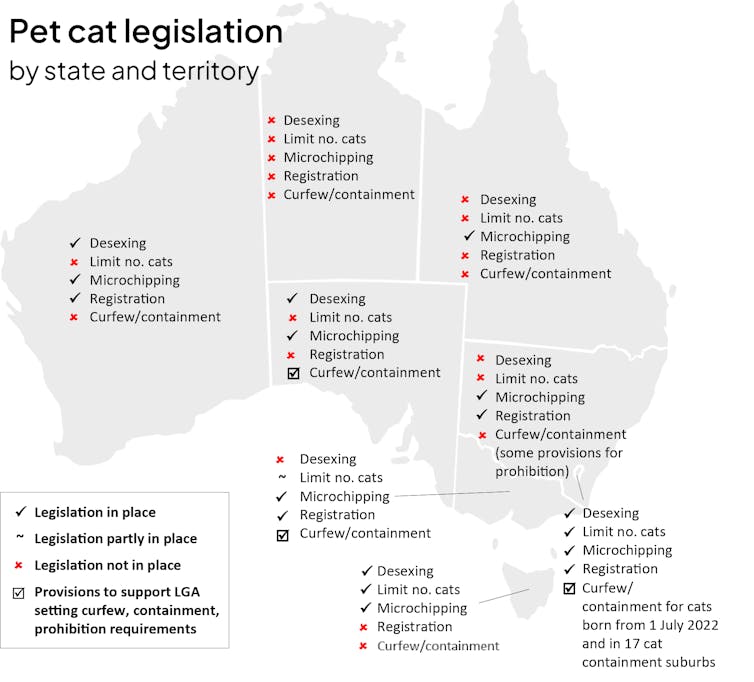
Local councils in WA and NSW complained most often about this situation. They want changes to state laws to make it easier for them to set and police local rules about cat containment or cat prohibition.
In SA, local governments noted inconsistencies in cat containment provisions between councils make implementation and enforcement challenging. A statewide approach using the SA Dog and Cat Management Act would be more effective.
To support fair and effective management of pet cats we recommend all states and territories adopt strong and nationally consistent legislation to enable responsible pet cat management.
This should be supported by enhanced community awareness programs and support for owners and their pets to make the transition to a new, contained lifestyle. Outcomes for local wildlife and for cat welfare and health should also be monitored.
Protecting wildlife and caring for our delightful pets can both be achieved if we rethink what it is to be a cat owner and support local government to manage these issues for the whole community.![]()
Sarah Legge, Professor of Wildlife Ecology, Australian National University; Georgia Garrard, Senior Lecturer, School of Ecosystem and Forest Sciences, The University of Melbourne; Jaana Dielenberg, University Fellow, Charles Darwin University; John Woinarski, Professor of Conservation Biology, Charles Darwin University, and Tida Nou, Project Officer, School of Earth and Environmental Science, The University of Queensland
This article is republished from The Conversation under a Creative Commons license. Read the original article.
Flooded Home Buyback scheme helps wash away the pain for Queenslanders

It’s almost a year since floods devastated parts of Ipswich in Southeast Queensland.
Over the course of four days (February 25-28 2022), Ipswich received 682 millimetres of rain and the Bremer River rose to 16.72m in the centre of the city. Parts of the city were inundated, and almost 600 homes were damaged, many severely.
Many of these houses had flooded before, as recently as 2011, because they were built in areas of high flood risk. On previous occasions, when the water subsided, these houses were simply patched up and left vulnerable to flooding.
But this time was different. The early success of Queensland’s Voluntary Home Buyback Program shows we can learn from history and avoid repeating our mistakes. It offers an example for other states to follow.
Introducing A Buyback Scheme
Implementing a buyback scheme in areas vulnerable to regular flooding was a recommendation of the Queensland Floods Commission of Inquiry.

A $741 million Resilient Homes Fund was created in May 2022 with Commonwealth and State Disaster Recovery funds to be administered by the Queensland Reconstruction Authority. Of this, $350 million was allocated for buybacks, expected to buy 500 homes, and would be distributed among eight Queensland councils.
Ipswich City Council was keen to be involved. Fortuitously, just two days before the flood, on February 24, the council adopted the Ipswich Integrated Catchment Plan that identified 36,380 buildings exposed to flooding (17% in the highest flood risk categories). Among the report’s 47 recommendations was the need to remove the home with the highest flood risk. So when the buyback scheme run by the Queensland Reconstruction Authority was announced, Ipswich had its list of vulnerable homes ready in priority order, and seized the opportunity.
House owners register for the scheme and then the Queensland Reconstruction Authority organises a valuation, negotiates with the owner, develops the sale documentation and sells the property to the Council. Pre-flood valuations were offered to homeowners so they could afford to move. The land is rezoned as “non-habitable” use – no home can be built there in future.
The authority insists that the program is voluntary, people can refuse, in recognition that homeowners are in a sensitive state and must not feel pressured into making a life-changing decision.
Homeowners Welcome Buybacks
There has been a strong public response. By January 2023 more than 5,700 Queensland homeowners had registered for the Resilient Homes Fund. The first group of houses selected in Ipswich were in Goodna, those with the highest flood risk, and in January 2023 the first three houses were demolished. Less than a year since the floods, more than 40 homes have been accepted for the buyback program, with 160 valuations completed.

Not all have accepted the offer, with others publicly declaring a sense of relief. Paul Harding, whose Goodna house flooded halfway up its second storey in 2022, was one of the first to accept a buyback contract. He says when he heard the contract was signed he was “doing cartwheels down the street” as he thought he’d be “stuck with the house”, with no chance of selling. He says the offer was extremely fair and as he knows floods will come again, his family faces a happier future.

Both the number of registered homeowners and vulnerable properties are well beyond the capacity of the fund. Homeowners that do not qualify for the scheme are able to apply for the $741 million Flood Resilient Homes Fund that may fund house raising or resilient reconstruction, but the reality is that many will miss out.
A Hopeful Sign Of Things To Come
The program is currently scheduled to end in June 2023, by which time it is hoped that at least 150 homes will have been demolished in Ipswich, the land never to be occupied by a home in the future. Let’s hope future funding is forthcoming.
It is an encouraging start, demonstrating what needs to happen. As Murray Watt, the Federal Minister for Emergency Management, has said: “Every property we can buy back through this program is a win for disaster resilience … These Queenslanders, once vulnerable, can now look towards a brighter future without fear of rising flood waters.”
The 2022 floods revealed that Australia has many homes in flood-prone areas that should be removed. This home buyback model needs to be replicated up and down the eastern seaboard.![]()
Margaret Cook, Research Fellow, Australian Rivers Institute, Griffith University
This article is republished from The Conversation under a Creative Commons license. Read the original article.
For developing world to quit coal, rich countries must eliminate oil and gas faster – new study
James Price, UCL and Steve Pye, UCLLimiting how much coal countries can burn is considered an urgent priority for restraining global heating. After all, coal is the most carbon-rich of all fossil fuels and its combustion has contributed the most to planetary warming. For the first time in international talks, negotiators agreed to “phase down” coal use to prevent global temperature rise exceeding 1.5°C in the 2021 Glasgow Climate Pact.
Coal’s primacy in climate negotiations is partly because of the Intergovernmental Panel on Climate Change (IPCC), which has devised pathways to halting warming at 1.5°C. These scientific assessments prioritise the rapid phasing out of coal burning not only for the fuel’s carbon intensity and the need to head off CO₂ accumulation in the atmosphere, but also because cost-competitive alternatives are available in the form of solar and wind farms.
Researchers also stress the importance of decarbonising the power sector early in the green transition to enable other sectors, such as transport and industry, to run on clean electricity from the grid.
This puts the onus on certain nations to reduce emissions faster than others. The majority of global coal use can be found in emerging and developing countries, such as China and India. Here, large fleets of power stations and factories rely on coal which is cheap and abundant compared to other fossil fuels. By framing the solution to climate change as one in which coal is removed first, it is these countries that must commit to rapidly decarbonising in the next decade.

In our new paper, we highlight two problems with most published pathways to avoiding catastrophic climate change. First, it is unlikely that coal-dependent countries will be able to ditch the fuel as rapidly as these pathways set out.
And second, as this is the case, other fossil fuels, namely oil and gas, must be phased out more rapidly to compensate for coal’s slower exit. This would shift responsibility for mitigating climate change towards developed countries.
The Speed Limit On Phasing Out Coal
We compared how much coal use is expected to fall in modelled pathways to 1.5°C with the fastest power transitions that have taken place over the last 50 years, with all fuels and in all countries.
These transitions are shown in the figure below, and reflect a range of drivers, such as policy responses to the 1970s oil price crisis and political events such as wars, sanctions and the collapse of the Soviet Union. The red line labelled “world record” indicates the fastest pace that could be feasible with the political will to enact ambitious policies.

Based on modelled pathways from the IPCC, we estimate that coal power will have to be phased out in India, China and South Africa more than twice as fast as any historical power transition for electricity systems of comparable size. This is unlikely to be achievable or acceptable in any major coal-dependent developing country.
A more feasible pathway to eliminating coal might use the targets set out by the Powering Past Coal Alliance (PPCA), an international coalition of countries established in 2017. The PPCA favour a differentiated timeline for exiting coal power, with rich countries going first by 2030 and the rest of the world by 2050.
These targets reflect how developing countries are more dependent on coal and have less money to invest in the green transition, but bear less historical responsibility for causing climate change.
This differentiated pace would put several countries, including China, at the speed limit of historical transitions. In other words, it would offer them a pathway to decarbonisation that is difficult, but possible. This trajectory would see developed countries reducing carbon emissions roughly 50% faster compared to pathways without the fairer distribution of efforts proposed by the PPCA.
This inverts the narrative from successive climate summits: developed, not developing, countries are the ones that must do more in the short-term to limit warming.

It also has important consequences for oil and gas. In all countries, oil and gas production must fall even in published pathways to 1.5°C, rather than increasing as most countries plan.
But when the world phases out coal at the PPCA pace, oil and gas must be phased out correspondingly faster. This has a different impact on different countries. For example, cumulative oil production by the US from 2020 to 2050 is 20% lower than in a 1.5°C pathway without the differentiated efforts proposed by the PPCA.
Limiting climate change requires phasing out all three fossil fuels: coal, oil and gas. Our research finds that climate models and policy debates rely too much on winding down coal, especially in coal-dependent developing countries.
Instead, a fairer and more realistic balance of mitigation efforts is needed, which means more emphasis on eliminating oil and gas. It also means greater effort by the global north, even while all countries, including those in the global south, end coal power as quickly as possible.

Don’t have time to read about climate change as much as you’d like?
Get a weekly roundup in your inbox instead. Every Wednesday, The Conversation’s environment editor writes Imagine, a short email that goes a little deeper into just one climate issue. Join the 10,000+ readers who’ve subscribed so far.![]()
James Price, Senior Research Associate in Energy, UCL and Steve Pye, Associate Professor in Energy Systems, UCL
This article is republished from The Conversation under a Creative Commons license. Read the original article.
What Australia learned from recent devastating floods – and how New Zealand can apply those lessons now
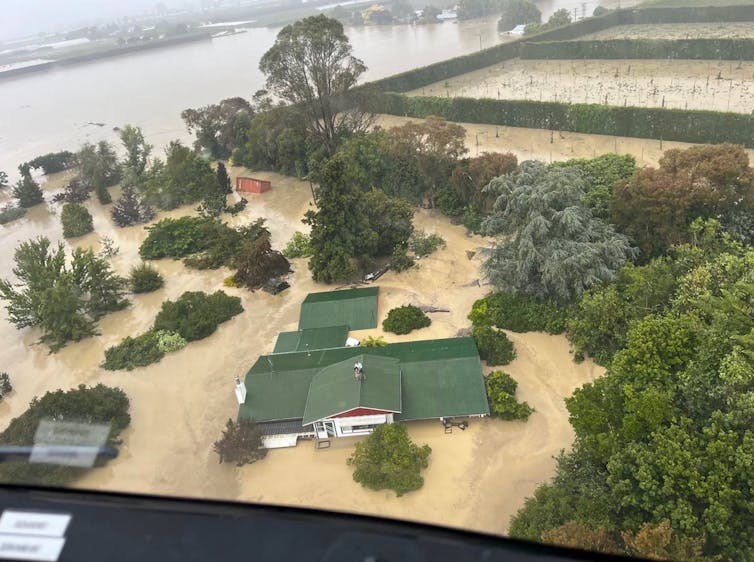
Australia and New Zealand have both faced a series of devastating floods triggered by climate change and the return of the La Niña weather pattern. So it makes sense that Australia has now sent disaster crews to help with the aftermath of Cyclone Gabrielle.
With five serious floods in the space of 19 months in 2021-2022, Australia’s experiences – and how people responded – offer New Zealand a guide for recovering and rebuilding after an extreme weather event.
The flooding events in both countries share two key common elements. First, the floods broke previous records and were the largest in recent history. Second, there were also repeat flood events.
In Auckland, there were two massive floods within five days, while Cyclone Gabrielle became the Coromandel’s fifth severe weather event for 2023 and devastated other parts of the North Island.
The other common factor is urbanisation. Auckland’s population has been growing, resulting in the increasing development of the built environment. Intensifying urban development places pressure on existing drainage systems – parts of which are no longer fit for purpose.
Extensive built-up and paved areas with hard, impermeable surfaces can also cause rapid run-off during heavy rain, with the water unable to be absorbed into the ground as it would be in soft, vegetated areas.
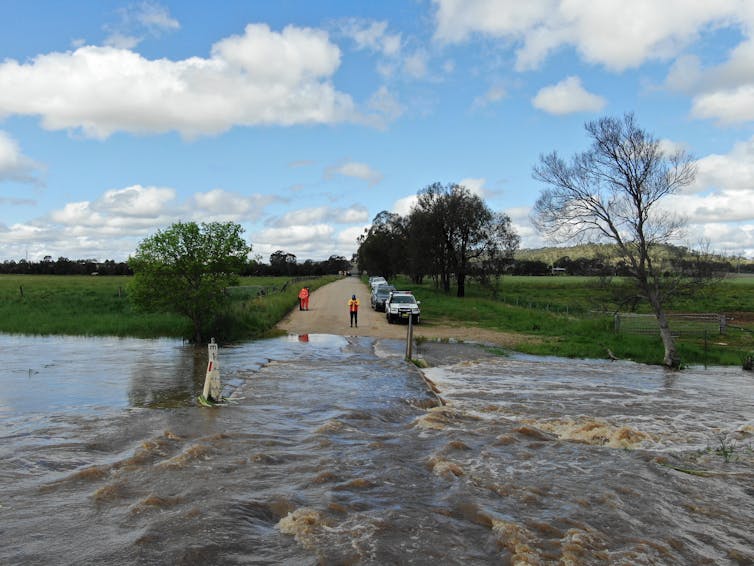
Working With The Community
Our recent research in the Hunter Valley in Australia – one of the areas affected by those five successive floods – identified similar factors contributing to the flooding events, including a rapidly growing regional population.
Two of our research sites – the Cessnock and Singleton local government areas – had growing urban centres that reflected a similar development trajectory to Auckland, albeit in a smaller scale.
Our research in the Hunter Valley established the importance of identifying existing community resilience and gaps. We also observed the need to involve the community at all levels. This included having early warning systems and evacuation protocols in place to improve community access to information and warnings.
The State Emergency Services (SES) is the main agency in New South Wales responsible for flood response and management. Supported by community volunteers, the SES has a clear focus at the local level.
This community focus is evident with its “door-knocking kit”, which is based on a community-level vulnerability assessment. The SES has a list of those in the community who are most at risk, such as the elderly and people with disabilities. When a flood risk becomes evident, SES volunteers go knocking on doors to check their preparedness and provide evacuation support.
The equivalent of SES in New Zealand, Auckland Emergency Management, could learn from this community-based approach and include it within its Community Group Support initiative, so that future disaster responses can be more closely tailored to the community.
In the recent floods in Auckland, communication was an issue. Relaying directives and information through multiple institutional layers led to confusion, which could have been avoided through a closer community-based approach.
Building A Volunteer Army
Another key factor in Australia is the large cadre of SES volunteers – around 9,000 in New South Wales, a state with a population of just over eight million. This is a significant form of social capital, without which the current approach to flood response and management would not be possible.
While there are initiatives in New Zealand to attract and engage volunteers, more needs to be done. Civil defence needs to conduct a structural review of the existing volunteer organisations that work in the disaster and emergency response field to identify ways to improve the recruitment and retention.
We also found evidence of volunteer “burn-out”, meaning there’s a need to support volunteers emotionally and financially during extended periods of disaster response and recovery.
While there is a large number of SES volunteers in Australia, more are needed as climate change drives more frequent, extensive and intense disasters. Given the similar nature of repeat climate-related disaster events in New Zealand, provisions for a large cadre of well-supported and well-trained volunteers is necessary.
A review of existing volunteer agencies and community organisations should be undertaken to identify ways they can be harmonised to avoid competing pressures for resources. As well, there’s a need to nurture collaboration between agencies to help with sharing skills, training, data and resource management.
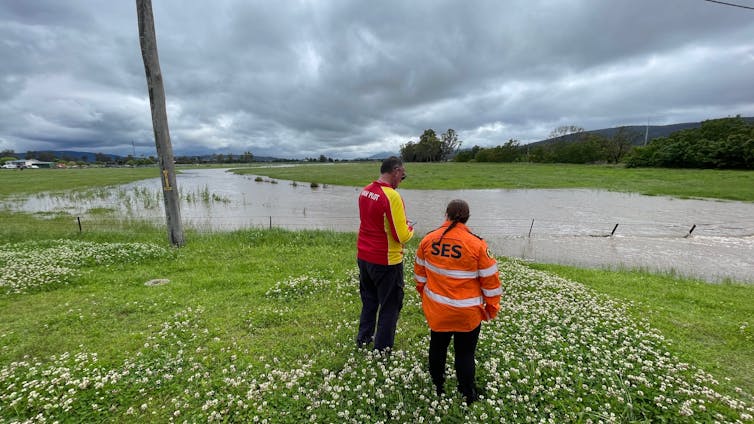
The Need For Resilience
Perhaps the key lesson for New Zealand, and also Australia, is the need to think beyond emergency management to building long-term resilience within agencies and communities.
As climate-related disasters become more common, we need to think about how our cities grow and how we can incorporate flood resilience by retaining green areas and vegetation, improved drainage and transportation links.
But both countries also need to focus on being ready for a disaster, instead of managing it after it happens. In doing so, the pressures of managing the disaster when it arrives would be less – and so would the long-term impacts on people and the economy.![]()
Iftekhar Ahmed, Associate Professor, University of Newcastle
This article is republished from The Conversation under a Creative Commons license. Read the original article.
Would a nature repair market really work? Evidence suggests it’s highly unlikely

Why should governments do all of the heavy lifting to arrest the steep decline of many ecosystems? Endangered species live on private land too – so why not give farmers and landholders incentives to look after them and restore habitat?
Framed like this, it’s easy to see the appeal of nature repair markets. Harness private money and direct it towards rescuing nature. No wonder the Albanese government is forging ahead with its nature repair market bill and seeking public submissions. If it becomes law, landholders will be able to gain tradeable biodiversity certificates for projects that protect, manage and restore nature.
Why do we need it? According to the government, actually reversing the decades of decline in Australia’s environment is so expensive it’s beyond government and individual landholders.
It sounds beautiful in theory – carbon credits, but for nature. But the idea has a poor track record in practice. Other offset markets have been easily gamed. Ensuring integrity is costly. Policies with teeth – banning land clearing, stronger environmental laws – are much more likely to work.
Where Did This Idea Come From?
It’s not wholly new. Labor’s plan is based on a repackaged and expanded Morrison government biodiversity stewardship program, originally targeted at farmers.
Environment Minister Tanya Plibersek has claimed the market is a response to demand. “Businesses tell me all the time that they want to invest in nature because their shareholders, customers and staff are demanding it,” she has said.
Consultants paint glowing futures where markets in nature balloon in size. McKinsey estimates the current value of global nature credit markets is around A$7 billion a year. If the forecasts of PricewaterhouseCoopers are correct, that could vastly increase to $137 billion in Australia by 2050.
Enthusiasm for voluntary nature markets is at an all time high. In the last two years, we’ve seen many plans and initiatives, from Nature Finance to the Taskforce on Nature Markets to the Biodiversity Credit Alliance.
So why the scepticism? In short, it’s harder than it looks to unlock private capital and direct it to pro-nature interventions.
If they are to succeed, these kinds of schemes must be legitimate. To make these credits worthy of investment and tradeable, you need a governance framework, measurement systems, certification, registration, contracting, trading, monitoring, reporting, accounting, auditing, and a bureaucracy for administering, consulting and advising on all of it.
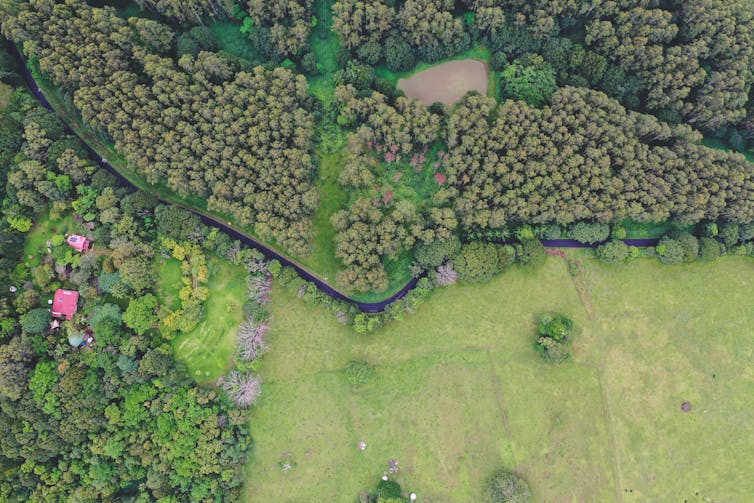
3 Reasons For Scepticism: Money, Demand And Effectiveness
1. Money
If the reason for turning to the private sector is funding, how can we reconcile this with the Stage 3 tax cuts, set to slash government revenues by $300 billion?
Crying poor is not a credible excuse. As economists repeatedly point out, countries with their own sovereign currency can create money to spend on priorities they care about.
2. Demand
You would think a policy aimed at the private sector would be based on credible market data. But demand for these voluntary credits is “untested and likely overestimated”.
Almost three-quarters of the current global biodiversity market is based on compliance. Companies aren’t plowing money in because they want to. They do it because they have to. Australia’s nature repair scheme, by contrast, is voluntary. No other country has launched a large-scale voluntary biodiversity credit scheme.
In showcasing two decades of practice of voluntary biodiversity credits, the World Economic Forum only mustered four examples. None of them have detail on scale, value or improvement to the environment.
3. Effectiveness
To date, we have little evidence market-based regulatory measures, such as compulsory biodiversity and carbon offsets, actually do what they promise to do. In short, it is very unclear that these tools make things better relative to a baseline.
Of Australia’s states, Victoria has arguably the best-developed and most technically sophisticated biodiversity offset scheme. Even so, the Victorian Auditor-General has found the scheme cannot show results. Their report found Victoria “is not achieving no net biodiversity loss from native vegetation clearing on private land”.
In New South Wales, the deficiencies are even more severe. Our most populous state has a scheme which lacks a clearly defined objective to measure success against.
Among the scheme’s many problems are non-delivery, double-dipping, conflicts of interest and potential insider trading.
Why Use A Market To Deliver A Public Good?
Functioning ecosystems produce clean water, breathable air, nutrient recycling, fertile soil, food, fibre and many other benefits.
So why are we turning to markets to deliver complex public goods like biodiversity?
The natural world is multifaceted, interconnected and complex. Developing market infrastructure to deliver desired natural outcomes is extremely difficult.
Victoria and NSW’s biodiversity offset schemes show us there’s no guarantee advocates of voluntary markets can design and produce tangible, low fraud risk biodiversity credits.
Even if they can, the cost of credibility and good governance will mean these credits will have high transaction costs in conflict with the competitive returns sought by investors.
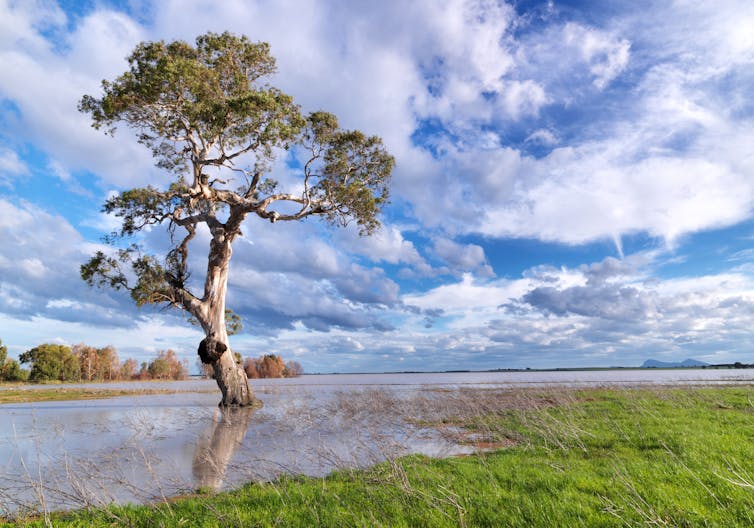
Consider the challenges faced by the far more straightforward schemes aimed at preserving forests for carbon offsets or credits. These schemes have been plagued by issues, such as human rights violations, questions over credibility of offsets and leakage of environmental damage to other areas.
In these schemes, failure is common and success is rare. It’s time to end the catchcry of “let’s not allow the perfect to become the enemy of the good”.
After 30 years of experience, we can now conclude these schemes have done a great deal more harm than good.
Repairing Nature? Use Sticks, Not Carrots
If we want to reverse Australia’s environmental decline, we know what we have to do.
We have to end land clearing to salvage as much habitat as possible.
We have to end unsustainable water extraction.
We have to rapidly cut emissions to limit further climate damage.
We have to put public money into conservation and environmental management.
And we need environmental laws with teeth to act as a more direct and effective method of ending the damage.
Turning nature around is hard. We’ve left it late. But markets are not the answer – they’re a band-aid solution. Time to rip it off. ![]()
Yung En Chee, Senior Research Fellow, Environmental Science, The University of Melbourne
This article is republished from The Conversation under a Creative Commons license. Read the original article.
From the dingo to the Tasmanian devil - why we should be rewilding carnivores
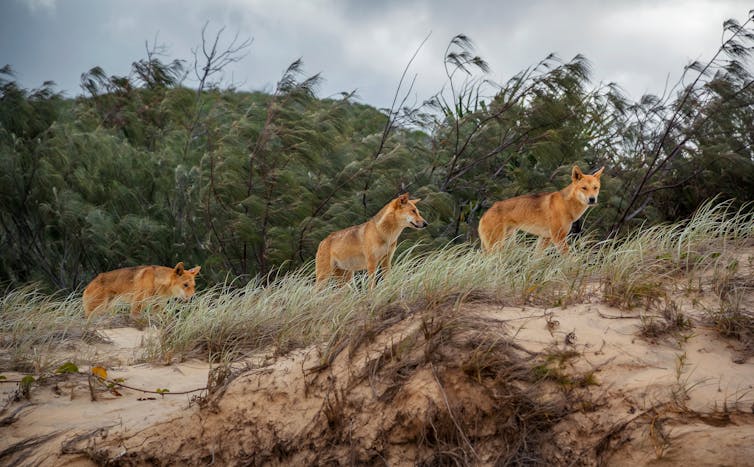
No matter where you live, apex predators and large carnivores inspire awe as well as instil fear.
Large predators have been heavily persecuted and removed from areas where they once lived because of conflict with livestock graziers.
Beyond their large teeth, sharp claws and iconic status, research is finding they are crucially important in ecosystems. So there is considerable interest in returning large carnivores to areas where they once lived, as part of a shift towards rewilding.
Bringing back carnivores is not without risk, but it’s a potentially powerful conservation tool.
Rewilding dingoes and Tasmanian devils in Australia could benefit many of our troubled ecosystems, by keeping herbivore numbers down, keeping feral cats and foxes fearful, and triggering a rebound in vegetation and small animal populations.
Predators Vs Prey
Predators can affect their prey’s behaviour. When prey species know a predator is around and perceive risk to their survival, they change how they behave.
The landscape of fear predators create can make it harder for prey species to survive.
That’s often good for ecosystems. The effect of dingoes in reducing, say, kangaroo and wallaby populations and changing their behaviour, can actually help bring back plants and smaller animals through a “trophic cascade”. For example, wolves chasing, eating and scaring deer can lead to an increase in the growth of plants, which can benefit other species.
Predators also affect other predators. If humans poison, shoot, trap and exclude top predators like dingoes, smaller predators can increase in number and get bolder, in a phenomenon called mesopredator release. In California, when coyotes disappeared due to habitat destruction, populations of smaller predators such as cats grew and songbird numbers fell.
How Is It Done?
Rewilding can occur passively, by changing laws to stop the exclusion or killing of large carnivores and making areas more favourable for carnivores to live. When this happens, species often move back by themselves. Encouragingly, this is happening in many parts of the world, including a recent sighting of a wolf in Brandenburg, Germany.
In other cases, rewilding may need a more active approach, such as physically moving animals to an area. The return of wolves to Yellowstone National Park and the ecological transformation that followed is a famous example of this, although in recent times the details of this story have been questioned.
When does rewilding work best? Recent research shows wild-born animals fare better than captive-born animals, though the results are far from conclusive. Wild-born animals may have an edge due to their skills in hunting and defending territories critically important for survival.
Rewilding In Australia Means Bringing Back Dingoes
Once carnivores are killed or fenced off from an area, the ecosystem changes. Will we restore nature by bringing them back? Potentially – but it’s not guaranteed. Australia’s controversial canine, the dingo, is a perfect example. Aside from humans, dingoes are Australia’s only living land predator over 15 kilograms.
Dingoes have a vital role in Australian ecosystems, such as keeping populations of kangaroos and emus under control. They can also take down feral goats. Their natural control of herbivores means plants can bounce back, as well as making room for smaller animals. Their effect on plant life may even affect the height and shape of sand dunes.
In some parts of Australia, kangaroo populations have exploded. Land clearing for pasture favours kangaroos, as do the dams and water troughs for livestock, the killing off of dingoes and the ending of First Nations Peoples’ cultural practices and hunting.
At times, these population booms have led to sudden crashes, with widespread starvation in droughts. Harvesting kangaroos is one response, but this is often controversial and unpopular. Bringing dingoes back would help reduce kangaroo numbers in a way more palatable to many people.
When present, dingoes also keep a lid on our worst introduced predators, feral cats and foxes, either by eating them or forcing them to alter their behaviour. If cats and foxes have to be more careful, it may benefit their smaller prey.
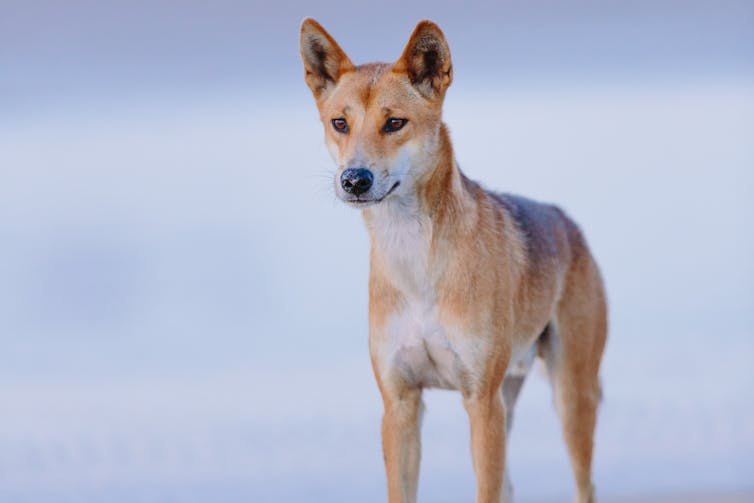
We could rewild dingoes very easily by removing large barriers like the dingo fence. This, of course, would trigger pushback from livestock graziers worried about attacks on their stock.
It doesn’t have to be this way though. We’ve learned a lot about ways to reduce conflict between farmers and predators. It’s now entirely possible for livestock producers and top predators to coexist. Western Australian farmers are already using guardian animals such as Maremma dogs to protect livestock.
So Should We Do It?
Australia has been slow to support and attempt large carnivore rewilding. But we can learn valuable lessons from the relocation of Tasmanian devils to an offshore haven, Maria Island.
Devils were introduced to safeguard the species against the severe population decline from devil facial tumour disease. These predators were not native to Maria Island, but they’ve flourished. One unexpected side effect was the devastating impact on the island’s little penguin population.

Rewilding comes with risks. But it also comes with major benefits, which may help our collapsing ecosystems and threatened species.
Time is short. Conservation must take calculated and informed risks to achieve better outcomes. Rewilding attempts are valuable, even when things don’t go entirely as planned.
What else could we do? Discussions over the carefully planned reintroduction of Tasmanian devils to mainland Australia continue. If the devils come back to the mainland for the first time in thousands of years, they might help to manage herbivore and feral cat populations.
Rewilding is not about recreating the mythical idea of wilderness. Humans have shaped ecosystems for millennia.
If rewilding and ecological restoration is to succeed, communities and their values, including First Nations groups, must be involved.![]()
Euan Ritchie, Professor in Wildlife Ecology and Conservation, School of Life & Environmental Sciences, Deakin University
This article is republished from The Conversation under a Creative Commons license. Read the original article.
Pittwater Reserves: Histories + Notes + Pictorial Walks
A History Of The Campaign For Preservation Of The Warriewood Escarpment by David Palmer OAM and Angus Gordon OAM
A Walk Around The Cromer Side Of Narrabeen Lake by Joe Mills
America Bay Track Walk - photos by Joe Mills
An Aquatic June: North Narrabeen - Turimetta - Collaroy photos by Joe Mills
Angophora Reserve Angophora Reserve Flowers Grand Old Tree Of Angophora Reserve Falls Back To The Earth - History page
Annie Wyatt Reserve - A Pictorial
Avalon's Village Green: Avalon Park Becomes Dunbar Park - Some History + Toongari Reserve and Catalpa Reserve
Bairne Walking Track Ku-Ring-Gai Chase NP by Kevin Murray
Bangalley Headland Bangalley Mid Winter
Banksias of Pittwater
Barrenjoey Boathouse In Governor Phillip Park Part Of Our Community For 75 Years: Photos From The Collection Of Russell Walton, Son Of Victor Walton
Barrenjoey Headland: Spring flowers
Barrenjoey Headland after fire
Bayview Baths
Bayview Wetlands
Beeby Park
Bilgola Beach
Botham Beach by Barbara Davies
Bungan Beach Bush Care
Careel Bay Saltmarsh plants
Careel Bay Birds
Careel Bay Clean Up day
Careel Bay Playing Fields History and Current
Careel Creek
Careel Creek - If you rebuild it they will come
Centre trail in Ku-ring-gai Chase National Park
Chiltern Track- Ingleside by Marita Macrae
Clareville Beach
Clareville/Long Beach Reserve + some History
Coastal Stability Series: Cabbage Tree Bay To Barrenjoey To Observation Point by John Illingsworth, Pittwater Pathways, and Dr. Peter Mitchell OAM
Cowan Track by Kevin Murray
Curl Curl To Freshwater Walk: October 2021 by Kevin Murray and Joe Mills
Currawong and Palm Beach Views - Winter 2018
Currawong-Mackerel-The Basin A Stroll In Early November 2021 - photos by Selena Griffith
Currawong State Park Currawong Beach + Currawong Creek
Deep Creek To Warriewood Walk photos by Joe Mills
Drone Gives A New View On Coastal Stability; Bungan: Bungan Headland To Newport Beach + Bilgola: North Newport Beach To Avalon + Bangalley: Avalon Headland To Palm Beach
Duck Holes: McCarrs Creek by Joe Mills
Dunbar Park - Some History + Toongari Reserve and Catalpa Reserve
Dundundra Falls Reserve: August 2020 photos by Selena Griffith - Listed in 1935
Elsie Track, Scotland Island
Elvina Track in Late Winter 2019 by Penny Gleen
Elvina Bay Walking Track: Spring 2020 photos by Joe Mills
Elvina Bay-Lovett Bay Loop Spring 2020 by Kevin Murray and Joe Mills
Fern Creek - Ingleside Escarpment To Warriewood Walk + Some History photos by Joe Mills
Iluka Park, Woorak Park, Pittwater Park, Sand Point Reserve, Snapperman Beach Reserve - Palm Beach: Some History
Ingleside
Ingleside Wildflowers August 2013
Irrawong - Ingleside Escarpment Trail Walk Spring 2020 photos by Joe Mills
Irrawong - Mullet Creek Restoration
Katandra Bushland Sanctuary - Ingleside
Lucinda Park, Palm Beach: Some History + 2022 Pictures
McCarrs Creek
McCarr's Creek to Church Point to Bayview Waterfront Path
McKay Reserve
Mona Vale Beach - A Stroll Along, Spring 2021 by Kevin Murray
Mona Vale Headland, Basin and Beach Restoration
Mount Murray Anderson Walking Track by Kevin Murray and Joe Mills
Mullet Creek
Narrabeen Creek
Narrabeen Lagoon Catchment: Past Notes Present Photos by Margaret Woods
Narrabeen Lagoon State Park
Narrabeen Lagoon State Park Expansion
Narrabeen Rockshelf Aquatic Reserve
Nerang Track, Terrey Hills by Bea Pierce
Newport Bushlink - the Crown of the Hill Linked Reserves
Newport Community Garden - Woolcott Reserve
Newport to Bilgola Bushlink 'From The Crown To The Sea' Paths: Founded In 1956 - A Tip and Quarry Becomes Green Space For People and Wildlife
Pittwater Reserves: The Green Ways; Bungan Beach and Bungan Head Reserves: A Headland Garden
Pittwater Reserves, The Green Ways: Clareville Wharf and Taylor's Point Jetty
Pittwater Reserves: The Green Ways; Hordern, Wilshire Parks, McKay Reserve: From Beach to Estuary
Pittwater Reserves - The Green Ways: Mona Vale's Village Greens a Map of the Historic Crown Lands Ethos Realised in The Village, Kitchener and Beeby Parks
Pittwater Reserves: The Green Ways Bilgola Beach - The Cabbage Tree Gardens and Camping Grounds - Includes Bilgola - The Story Of A Politician, A Pilot and An Epicure by Tony Dawson and Anne Spencer
Pittwater spring: waterbirds return to Wetlands
Pittwater's Lone Rangers - 120 Years of Ku-Ring-Gai Chase and the Men of Flowers Inspired by Eccleston Du Faur
Pittwater's Parallel Estuary - The Cowan 'Creek
Resolute Track at West Head by Kevin Murray
Resolute Track Stroll by Joe Mills
Riddle Reserve, Bayview
Salvation Loop Trail, Ku-Ring-Gai Chase National Park- Spring 2020 - by Selena Griffith
Seagull Pair At Turimetta Beach: Spring Is In The Air!
Stapleton Reserve
Stapleton Park Reserve In Spring 2020: An Urban Ark Of Plants Found Nowhere Else
Stony Range Regional Botanical Garden: Some History On How A Reserve Became An Australian Plant Park
The Chiltern Track
The Resolute Beach Loop Track At West Head In Ku-Ring-Gai Chase National Park by Kevin Murray
Topham Track Ku-Ring-Gai Chase NP, August 2022 by Joe Mills and Kevin Murray
Towlers Bay Walking Track by Joe Mills
Trafalgar Square, Newport: A 'Commons' Park Dedicated By Private Landholders - The Green Heart Of This Community
Tranquil Turimetta Beach, April 2022 by Joe Mills
Turimetta Beach Reserve by Joe Mills, Bea Pierce and Lesley
Turimetta Beach Reserve: Old & New Images (by Kevin Murray) + Some History
Turimetta Headland
Warriewood Wetlands and Irrawong Reserve
Whale Beach Ocean Reserve: 'The Strand' - Some History On Another Great Protected Pittwater Reserve
Wilshire Park Palm Beach: Some History + Photos From May 2022
Winji Jimmi - Water Maze

New Shorebirds WingThing For Youngsters Available To Download
A Shorebirds WingThing educational brochure for kids (A5) helps children learn about shorebirds, their life and journey. The 2021 revised brochure version was published in February 2021 and is available now. You can download a file copy here.
If you would like a free print copy of this brochure, please send a self-addressed envelope with A$1.10 postage (or larger if you would like it unfolded) affixed to: BirdLife Australia, Shorebird WingThing Request, 2-05Shorebird WingThing/60 Leicester St, Carlton VIC 3053.

 Shorebird Identification Booklet
Shorebird Identification Booklet
The Migratory Shorebird Program has just released the third edition of its hugely popular Shorebird Identification Booklet. The team has thoroughly revised and updated this pocket-sized companion for all shorebird counters and interested birders, with lots of useful information on our most common shorebirds, key identification features, sighting distribution maps and short articles on some of BirdLife’s shorebird activities.
The booklet can be downloaded here in PDF file format: http://www.birdlife.org.au/documents/Shorebird_ID_Booklet_V3.pdf
Paper copies can be ordered as well, see http://www.birdlife.org.au/projects/shorebirds-2020/counter-resources for details.
Download BirdLife Australia's children’s education kit to help them learn more about our wading birdlife
Shorebirds are a group of wading birds that can be found feeding on swamps, tidal mudflats, estuaries, beaches and open country. For many people, shorebirds are just those brown birds feeding a long way out on the mud but they are actually a remarkably diverse collection of birds including stilts, sandpipers, snipe, curlews, godwits, plovers and oystercatchers. Each species is superbly adapted to suit its preferred habitat. The Red-necked Stint is as small as a sparrow, with relatively short legs and bill that it pecks food from the surface of the mud with, whereas the Eastern Curlew is over two feet long with a exceptionally long legs and a massively curved beak that it thrusts deep down into the mud to pull out crabs, worms and other creatures hidden below the surface.
Some shorebirds are fairly drab in plumage, especially when they are visiting Australia in their non-breeding season, but when they migrate to their Arctic nesting grounds, they develop a vibrant flush of bright colours to attract a mate. We have 37 types of shorebirds that annually migrate to Australia on some of the most lengthy and arduous journeys in the animal kingdom, but there are also 18 shorebirds that call Australia home all year round.
What all our shorebirds have in common—be they large or small, seasoned traveller or homebody, brightly coloured or in muted tones—is that each species needs adequate safe areas where they can successfully feed and breed.
The National Shorebird Monitoring Program is managed and supported by BirdLife Australia.
This project is supported by Glenelg Hopkins Catchment Management Authority and Hunter Local Land Services through funding from the Australian Government’s National Landcare Program. Funding from Helen Macpherson Smith Trust and Port Phillip Bay Fund is acknowledged.
The National Shorebird Monitoring Program is made possible with the help of over 1,600 volunteers working in coastal and inland habitats all over Australia.
The National Shorebird Monitoring program (started as the Shorebirds 2020 project initiated to re-invigorate monitoring around Australia) is raising awareness of how incredible shorebirds are, and actively engaging the community to participate in gathering information needed to conserve shorebirds.
In the short term, the destruction of tidal ecosystems will need to be stopped, and our program is designed to strengthen the case for protecting these important habitats.
In the long term, there will be a need to mitigate against the likely effects of climate change on a species that travels across the entire range of latitudes where impacts are likely.
The identification and protection of critical areas for shorebirds will need to continue in order to guard against the potential threats associated with habitats in close proximity to nearly half the human population.
Here in Australia, the place where these birds grow up and spend most of their lives, continued monitoring is necessary to inform the best management practice to maintain shorebird populations.
BirdLife Australia believe that we can help secure a brighter future for these remarkable birds by educating stakeholders, gathering information on how and why shorebird populations are changing, and working to grow the community of people who care about shorebirds.
To find out more visit: http://www.birdlife.org.au/projects/shorebirds-2020/shorebirds-2020-program
Aussie Bread Tags Collection Points

Mushrooms Magnify Memory By Boosting Nerve Growth
Pets Create ‘Pawsitive’ Change For People In Aged Care

Applications Now Open For Inaugural $10,000 Military History Prize
Don’t Lose Your Money Donating To A Fake Earthquake Appeal
- Who benefits from the charity’s work
- Where it operates
- Who is running it
- Whether it is meeting its financial reporting obligations.
- Look for established, registered charities running verified appeals.
- Check the Charity Register to see details about a charity’s main work.
- Don’t click on links in unsolicited emails and social media posts which may take you to a fake, scam website. Find the charity’s website in a search engine or on the Charity Register.
- Don’t give your credit card and bank account details on social media and be cautious if you do so online.
- If you get a call claiming to be from a charity, say you’ll call back. Search the Charity Register and call back on the number shown there.
- Always ask for identification from collectors at a shopping centre, on the street or at your front door.
Should private schools share their facilities with public students?

There is a new push for private schools to open their grounds and facilities to the broader community. North Sydney mayor Zoe Baker, wants to ask top private schools in her area to share their green spaces and other facilities.
For so much of the year, schools sit unused and most campuses close at 4pm. We should search for opportunities where space can be shared where it is suitable.
Along with opening up space for the public, she also suggests public school students could use the playing fields, halls and performing arts centres after-hours.
Amid headlines about private schools building plunge pools and A$125 million sports centres and a widening gap in results between students between high and low socioeconomic backgrounds, could this be a way to make the education system fairer and improve outcomes for all students?
The Idea Isn’t New
The idea to open up grounds and facilities is not new.
In 2018, former New South Wales education minister Rob Stokes said both public and private schools should be opened up to the community as they were “public spaces”.
We pay for them, I feel the same way about private schools as well, a lot of money goes into them and a way they can get a social licence to operate in the local community is to let the community utilise them.
The NSW government also introduced a Share Our Space program where schools received a grant to upgrade their facilities for both community and school use during the school holidays.
In Victoria, schools have been encouraged to consider partnerships with other school sectors to improve education and opportunities for students since 2016.
However, partnerships are only formed in an ad hoc way, relying on schools to develop their own relationships. Current sharing arrangements between public and private schools mainly focus on infrastructure. This includes access to sporting grounds, theatre spaces, and specialist learning environments, such as STEM centres.
Could Sharing Be Expanded?
So far, this debate has underestimated what government schools could bring to the equation. The traffic tends to be one way from private to public.

Public schools could also share their teaching expertise, professional learning opportunities and curriculum resources with nearby private schools. As a result, more subject areas and elective options could be offered.
This could equally include partnering with other public schools to expand opportunities for their students. It is interesting to consider how this approach may have better supported schools and teachers throughout pandemic lockdowns.
The Victorian government has begun some work in this area. It has a toolkit which highlights the possibilities of sharing teaching and curriculum ideas. But again, this continues to be ad hoc and more formalised mechanisms are needed to build partnerships.
Is This A Good Idea?
Firstly, care must be taken to not overestimate the value of private schooling on learning. While access to state-of-the-art facilities is understandably attractive, research suggests there is little evidence a private school education ultimately makes a difference to students academically, once socio-economic status is taken into account.
A possible sticking point in any sharing arrangements is that existing partnership models have traditionally involved payment. Arguably if one school is simply paying another a fee to use their resources or facilities it may not really be classified as “sharing”.
If sharing occurred between schools, rather than just public students using private schools’ facilities, it may be possible to rethink this approach. Thinking needs to move from a focus on physical resources and facilities to include the sharing of curriculum and teaching expertise in both directions.
While there may be some resistance from school communities where parents are paying large school fees, the benefit for private schools is building local goodwill which may prove useful in seeking to expand their brand in the community.
Of course, we are still left with the issue of why some private schools have the facilities they have in comparison with other schools and the funding system that allows this to happen.
This debate is a vexed one. But there is an opportunity here if school communities are prepared to work together to share their strengths and resources.![]()
Ange Fitzgerald, Professor, Associate Dean (Education) and Director (Initial Teacher Education), RMIT University and Thembi Mason, Lecturer, RMIT University
This article is republished from The Conversation under a Creative Commons license. Read the original article.
Jimmy Carter’s lasting Cold War legacy: Human rights focus helped dismantle the Soviet Union

Former President Jimmy Carter, who has entered hospice care at age 98 at his home in Plains, Georgia, was a dark horse Democratic presidential candidate with little national recognition when he beat Republican incumbent Gerald Ford in 1976.
The introspective former peanut farmer pledged a new era of honesty and forthrightness at home and abroad, a promise that resonated with voters eager for change following the Watergate scandal and the Vietnam War.
His presidency, however, lasted only one term before Ronald Reagan defeated him. Since then, scholars have debated – and often maligned – Carter’s legacy, especially his foreign policy efforts that revolved around human rights.
Critics have described Carter’s foreign policies as “ineffectual” and “hopelessly muddled,” and their formulation demonstrated “weakness and indecision.”
As a historian researching Carter’s foreign policy initiatives, I conclude his overseas policies were far more effective than critics have claimed.

A Soviet Strategy
The criticism of Carter’s foreign policies seems particularly mistaken when it comes to the Cold War, a period defined by decades of hostility, mutual distrust and arms buildup after World War II between the U.S. and Russia, then known as the Soviet Union or Union of Soviet Socialist Republics (USSR).
By the late 1970s, the Soviet Union’s economy and global influence were weakening. With the counsel of National Security Advisor Zbigniew Brzezinski, a Soviet expert, Carter exploited these weaknesses.
During his presidency, Carter insisted nations provide basic freedoms for their people – a moral weapon against which repressive leaders could not defend.
Carter soon openly criticized the Soviets for denying Russian Jews their basic civil rights, a violation of human rights protections outlined in the diplomatic agreement called the Helsinki Accords.
Carter’s team underscored these violations in arms control talks. The CIA flooded the USSR with books and articles to incite human rights activism. And Carter publicly supported Russian dissidents – including pro-democracy activist Andrei Sakharov – who were fighting an ideological war against socialist leaders.

Carter adviser Stuart Eizenstat argues that the administration attacked the Soviets “in their most vulnerable spot – mistreatment of their own citizens.”
This proved effective in sparking Soviet leader Mikhail Gorbachev’s social and political reforms of the late 1980s, best known by the Russian word “glasnost,” or “openness.”
The Afghan Invasion
In December 1979, the Soviets invaded Afghanistan in response to the assassination of the Soviet-backed Afghan leader, Nur Mohammad Taraki. The invasion effectively ended an existing détente between the U.S. and USSR.
Beginning in July 1979, the U.S. was providing advice and nonlethal supplies to the mujahideen rebelling against the Soviet-backed regime. After the invasion, National Security Advisor Brzezinski advised Carter to respond aggressively to it. So the CIA and U.S. allies delivered weapons to the mujahideen, a program later expanded under Reagan.

Carter’s move effectively engaged the Soviets in a proxy war that began to bleed the Soviet Union.
By providing the rebels with modern weapons, the U.S. was “giving to the USSR its Vietnam war,” according to Brzezinski: a progressively expensive war, a strain on the socialist economy and an erosion of their authority abroad.
Carter also imposed an embargo on U.S. grain sales to the Soviets in 1980. Agriculture was the USSR’s greatest economic weakness since the 1960s. The country’s unfavorable weather and climate contributed to successive poor growing seasons, and their heavy industrial development left the agricultural sector underfunded.
Economist Elizabeth Clayton concluded in 1985 that Carter’s embargo was effective in exacerbating this weakness.
Census data compiled between 1959 and 1979 show that 54 million people were added to the Soviet population. Clayton estimates that 2 to 3 million more people were added in each subsequent year. The Soviets were overwhelmed by the population boom and struggled to feed their people.
At the same time, Clayton found that monthly wages increased, which led to an increased demand for meat. But by 1985, there was a meat shortage in the USSR. Why? Carter’s grain embargo, although ended by Reagan in 1981, had a lasting impact on livestock feed that resulted in Russian farmers decreasing livestock production.
The embargo also forced the Soviets to pay premium prices for grain from other countries, nearly 25 percent above market prices.
For years, Soviet leaders promised better diets and health, but now their people had less food. The embargo battered a weak socialist economy and created another layer of instability for the growing population.
The Olympic Boycott
In 1980, Carter pushed further to punish the Soviets. He convinced the U.S. Olympic Committee to refrain from competing in the upcoming Moscow Olympics while the Soviets repressed their people and occupied Afghanistan.
Carter not only promoted a boycott, but he also embargoed U.S. technology and other goods needed to produce the Olympics. He also stopped NBC from paying the final US$20 million owed to the USSR to broadcast the Olympics. China, Germany, Canada and Japan – superpowers of sport – also participated in the boycott.
Historian Allen Guttmann said, “The USSR lost a significant amount of international legitimacy on the Olympic question.” Dissidents relayed to Carter that the boycott was another jab at Soviet leadership. And in America, public opinion supported Carter’s bold move – 73% of Americans favored the boycott.
The Carter Doctrine
In his 1980 State of the Union address, Carter revealed an aggressive Cold War military plan. He declared a “Carter doctrine,” which said that the Soviets’ attempt to gain control of Afghanistan, and possibly the region, was regarded as a threat to U.S. interests. And Carter was prepared to meet the threat with “military force.”
Carter also announced in his speech a five-year spending initiative to modernize and strengthen the military because he recognized the post-Vietnam military cuts weakened the U.S. against the USSR.
Ronald Reagan argued during the 1980 presidential campaign that, “Jimmy Carter risks our national security – our credibility – and damages American purposes by sending timid and even contradictory signals to the Soviet Union.” Carter’s policy was based on “weakness and illusion” and should be replaced “with one founded on improved military strength,” Reagan criticized.
In 1985, however, President Reagan publicly acknowledged that his predecessor demonstrated great timing in modernizing and strengthening the nation’s forces, which further increased economic and diplomatic pressure on the Soviets.
Reagan admitted that he felt “very bad” for misstating Carter’s policies and record on defense.
Carter is most lauded today for his post-presidency activism, public service and defending human rights. He was awarded the Nobel Peace Prize in 2002 for such efforts.
But that praise leaves out a significant portion of Carter’s presidential accomplishments. His foreign policy, emphasizing human rights, was a key instrument in dismantling the power of the Soviet Union.
This is an updated version of a story that was originally published on May 2, 2019.![]()
Robert C. Donnelly, Associate Professor of History, Gonzaga University
This article is republished from The Conversation under a Creative Commons license. Read the original article.
There Are Yachts At The Bottom Of My Garden
From the Film Australia Collection of the National Film and Sound Archive.
Made by Film Australia 1973. Directed by Jack Rogers. Sailing is a popular sport in Sydney, and for a great number of Sydney siders with harbour front homes there are literally yachts at the bottom of the garden.
Northern Composure Band Competition 2023
Due to the pandemic, Council have had the 20th anniversary on hold but pleased to say that the competition is open and running again.
Northern Composure is the largest and longest-running youth band competition in the area and offers musicians local exposure as well as invaluable stage experience. Bands compete in heats, semi finals and the grand final for a total prize pool of over $15,000.
Over the past 20 years we have had many success stories and now is your chance to join bands such as:
- Ocean Alley
- Lime Cordiale
- Dear Seattle
- What So Not
- The Rions
- Winston Surfshirt
- Crocodylus
And even a Triple J announcer plus a wide range of industry professionals
About the Competition
In 2023, the comp looks a little different.
All bands are invited to enter our heats which will be exclusively run online and voted on by your peers and community by registering below and uploading a video of one song of your choice. (if you are doing a cover, please make sure to credit the original band) We are counting on you to spread the word and get your friends, family, teachers voting for you!
The top 8-12 bands will move on through to our live semi finals with a winner from each moving on to the grand final held during National Youth Week. Not only that but we have raised the age range from 19 to 21 for all those musicians who may have missed out over the past two years.
Key dates
- Voting open for heats: Mon 13 Feb – Sun 26 Feb
- Band Briefing: Mon 6 March, Dee Why PCYC
- Semi 1: Sat 18 March Mona Vale Memorial Hall
- Semi 2: Sat 25 March, YOYOs, Frenchs Forest
- Grand Final: Fri 28 April, Dee Why PCYC
For more information contact Youth Development at youth@northernbeaches.nsw.gov.au or call 8495 5104
Stay in the loop and follow Northern Composure Unplugged on KALOF Facebook.
School Leavers Support
- Download or explore the SLIK here to help guide Your Career.
- School Leavers Information Kit (PDF 5.2MB).
- School Leavers Information Kit (DOCX 0.9MB).
- The SLIK has also been translated into additional languages.
- Download our information booklets if you are rural, regional and remote, Aboriginal or Torres Strait Islander, or living with disability.
- Support for Regional, Rural and Remote School Leavers (PDF 2MB).
- Support for Regional, Rural and Remote School Leavers (DOCX 0.9MB).
- Support for Aboriginal and/or Torres Strait Islander School Leavers (PDF 2MB).
- Support for Aboriginal and/or Torres Strait Islander School Leavers (DOCX 1.1MB).
- Support for School Leavers with Disability (PDF 2MB).
- Support for School Leavers with Disability (DOCX 0.9MB).
- Download the Parents and Guardian’s Guide for School Leavers, which summarises the resources and information available to help you explore all the education, training, and work options available to your young person.
School Leavers Information Service
- navigate the School Leavers Information Kit (SLIK),
- access and use the Your Career website and tools; and
- find relevant support services if needed.
Word Of The Week: Temperament
noun
1. a person's or animal's nature, especially as it permanently affects their behaviour. 2. the adjustment of intervals in tuning a piano or other musical instrument so as to fit the scale for use in different keys; in equal temperament, the octave consists of twelve equal semitones. 3. (psychology) Individual differences in behavior that are biologically based and are relatively independent of learning, system of values and attitudes. 4. (obsolete) A moderate and proportionable mixture of elements or ingredients in a compound; the condition in which elements are mixed in their proper proportions. 5. (obsolete) Any state or condition as determined by the proportion of its ingredients or the manner in which they are mixed; consistence, composition; mixture. 6. Archaic; . an act of tempering or moderating. 7. Archaic. climate.
From: 1375–1425; late Middle English, from Latin temperāmentum due mixture, equivalent to temperā(re) ''to mix properly'' + -mentum-ment. Middle English, "regulation of the body's vital spirit, proportion of humors in the body," borrowed from Latin temperāmentum "mixture of substances in proper proportion, mean between hot and cold, compromise between extremes, moderation" (Medieval Latin, "proper balance of bodily humors"), from temperāre "to moderate, bring to a proper strength or consistency by mixing, maintain in a state of balance".
Ancient - Obsolete
Temperament theory has its roots in the ancient theory of humourism. It may have originated in Mesopotamia, but it was Greek physician Hippocrates (460–370 BC) (and later Galen) who developed it into a medical theory. He believed that certain human moods, emotions, and behaviours were caused by an excess or lack of body fluids (called "humours"), which he classified as blood, yellow bile, black bile, and phlegm.
Historically, in the second century AD, the physician Galen described four classical temperaments (melancholic, phlegmatic, sanguine and choleric), corresponding to the four humours or bodily fluids. This historical concept was explored by philosophers, psychologists, psychiatrists and psycho-physiologists from very early times of psychological science, with theories proposed by Immanuel Kant, Hermann Lotze, Ivan Pavlov, Carl Jung, Gerardus Heymans among others. In more recent history, Rudolf Steiner had emphasized the importance of the four classical temperaments in elementary education, the time when he believed the influence of temperament on the personality to be at its strongest. Neither Galen nor Steiner are generally applied to the contemporary study of temperament in the approaches of modern medicine or contemporary psychology.
The four temperaments described individuals as sanguine (optimistic, social, and associated with the element of air), melancholic (analytical, quiet, earth), choleric (short-tempered, irritable, fire), and phlegmatic (relaxed, peaceful, water).
Roald Dahl rewrites: rather than bowdlerising books on moral grounds we should help children to navigate history

Although several of his best-known children’s books were first published in the 1960s, Roald Dahl is among the most popular authors for young people today. The recent decision by publisher Puffin, in conjunction with The Roald Dahl Story Company, to make several hundred revisions to new editions of his novels has been described as censorship by Salman Rushdie and attracted widespread criticism.
The changes, recommended by sensitivity readers, include removing or replacing words describing the appearance of characters, and adding gender-neutral language in places. For instance, Augustus Gloop in Charlie and the Chocolate Factory is no longer “fat” but “enormous”. Mrs Twit, from The Twits, has become “beastly” rather than “ugly and beastly”. In Matilda, the protagonist no longer reads the works of Rudyard Kipling but Jane Austen.
While the term “cancel culture” has also been used to describe these editorial changes, there is actually a long history of altering books to meet contemporary expectations of what young people should read.
Should we consider children’s literature on a par with adult literature, where altering the author’s original words is roundly condemned? Or do we accept that children’s fiction should be treated differently because it has a role in inducting them into the contemporary world?
Bowdlerising Literature
Thomas Bowdler’s The Family Shakespeare was published in 1807 and contained 20 of the author’s plays. It removed “words and expressions … which cannot with propriety be read aloud in a family”, specifically in front of women and children.
“Bowdlerising” has since come to refer to the process of altering literary works on moral grounds, and bowdlerised editions of Shakespeare continued to be used in schools throughout the 20th century.
While Shakespeare’s works were not intended specifically for children, the fiction of Enid Blyton is a more recent example of bowdlerisation of works regarded as classics of children’s literature. There have been several waves of changes made to her books in the past four decades, including to The Faraway Tree and The Famous Five series.
While Blyton’s fiction is often regarded as formulaic and devoid of literary value, attempts to modernise names and remove references to corporal punishment, for example, nevertheless upset adults who were nostalgic for the books and wished to share them with children and grandchildren.
How Is Children’s Literature Different?
Children’s literature implicitly shapes the minds of child readers by presenting particular social and cultural values as normal and natural. The term we use for this process within the study of children’s literature is “socialisation”.
People do not view literature for adults as directly forming how they think in this way, even if certain books might be seen as obscene or morally repugnant.

While many people are outraged at the overt censorship of Dahl’s novels, there are several layers of covert censorship that impact on the production of all children’s books.
Children’s authors know that certain content and language will prevent their book from being published. Publishers are aware that controversial topics, such as sex and gender identity, may see books excluded from libraries and school curriculums, or targeted for protest. Librarians and teachers may select, or refuse to select, books because of the potential for complaint, or because of their own political beliefs.
Several of Dahl’s books have previously been the subject of adult attempts to rewrite or ban them. Most notably, Charlie and the Chocolate Factory (1964) was partially rewritten by Dahl in 1973 after pressure from the National Association for the Advancement of Colored People and children’s literature professionals.
Dahl’s original Oompa Loompas were “a tribe of tiny miniature pygmies” whom Willy Wonka “discovered” and “brought over from Africa” to work in his factory for no payment other than cacao beans.
While Dahl vehemently denied that the novel depicted Black people negatively, he revised the book. The Oompa Loompas then became residents of “Loompaland” with “golden-brown hair” and “rosy-white skin”.

Historical Children’s Books Today
Children’s literature scholar Phil Nel suggests in Was the Cat in the Hat Black? The Hidden Racism of Children’s Literature and the Need for Diverse Books that we have three options when deciding how to treat books containing language and ideas that would not appear in titles published today.
First, we can consider these books as “cultural artefacts” with historical significance, but which we discourage children from reading. This option works as a covert form of censorship, given the power adults hold over what books children can access.

Second, we can permit children only to read bowdlerised versions of these books, like those recently issued by Dahl’s publisher. This undermines the principle that literary works are valuable cultural objects, which must remain unchanged. In addition, revising occasional words will usually not shift the values now regarded as outdated in the text, only make it harder to identify and question them.
Third, we can allow children to read any version of a book, original or bowdlerised. This option allows for the possibility of child readers who might resist the book’s intended meaning.
It also enables discussion of topics such as racism and sexism with parents and educators, more easily achieved if the original language remains intact. While Nel favours this approach, he also acknowledges that refusing to alter texts may still be troubling for segments of the readership (for example, Black children reading editions of Mark Twain’s Huckleberry Finn in which the N-word has not been removed).
Dahl’s novel Matilda emphasises the power of books to enrich and transform the lives of children, while also acknowledging their intelligence as readers.
Although many aspects of the fictional past do not accord with the ideal version of the world we might wish to present to children, as adults we can help them to navigate that history, rather than hoping we can rewrite it.![]()
Michelle Smith, Senior Lecturer in Literary Studies, Monash University
This article is republished from The Conversation under a Creative Commons license. Read the original article.
I’m descended from a Baloch-Afghan cameleer and a Badimiya Yamitji woman: they battled racist government policies to save our family
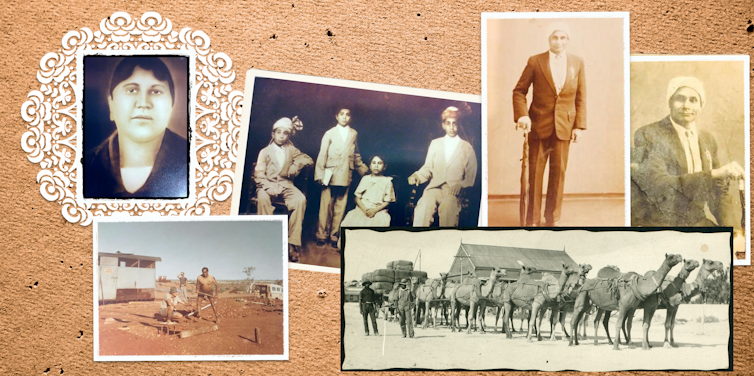
I am one of 400 descendants of a Baloch-Afghan cameleer man, Goolam Badoola, and an Aboriginal Badimiya Yamitji woman, Mariam Martin.
As I share these stories told to me by my Elders, I pray they are used as a means for others to recognise the resilience in these historical lessons as a vessel for good action. As humans, we should be naturally inclined towards performing good acts in service of humanity.
In Islam, this concept is called fitrah, the natural predisposition to incline towards right action and submission to the Creator. In our faith, we are also taught that deeds are rewarded by their intentions and sincerity.
As I write this piece, I do so with the sincere intention that my words penetrate living hearts and provide a means of coming together to serve humanity in good action.
To me, as a fourth-generation descendent of an Afghan Baloch cameleer, the Uluru Statement represents an opportunity to come together and walk hand in hand as we build this country, with the same spirit as my great-grandfather.

Goolam, A Muslim Cameleer In Australia
Goolam was born in 1872 in British Balochistan, India. He was from a Baloch background, an ethnic group located on the Iranian plateau. From the age of six, he grew up looking after camels. During his teens, he would travel more than 22 kilometres each day with his camels to sell wood at Karachi Port, British India.
During the colonial exploration of Australia, camels and camel drivers were shipped to work on the arid land to cart goods for transportation. Goolam was determined to join this line of work and travel to Australia with his camels.
In December 1890, Goolam walked more than 40km from Gaddap to Karachi Port with his camels, only to be stopped at the gate by a tall Indian Sikh man with a turban. He was advised that the ship had met its quota and no one else was allowed to board.
As Goolam walked away, upset and disappointed, he noticed an agitated loose male camel that others were unable to subdue. He recognised the camel’s temperament as being caused by the winter mating season and decided to intervene before the situation escalated. He hurled a rope around the camel’s neck, dropped it to the ground and pinned the camel between the nostrils to bring him to a halt.
The captain of the ship witnessed this and without hesitation cried out, “I want that kid on this ship.” In our Muslim tradition, we call this naseeb or qadr, which loosely translates to “destiny”. Although he didn’t speak the language, it was Goolam’s naseeb to board that ship, travelling over three months to unknown lands. What was to come, nobody could have known.
Goolam arrived in Port Augusta, South Australia, as an energetic adolescent. He worked as a camel driver for a telegraph company called Elders, delivering goods for them for the next ten years. A gold rush in 1900 then prompted Goolam to move to Western Australia and work for a company called T & J Camel Carting Company in the Murchison region, transporting water to the miners from local waterholes.

During that time, there was a catastrophic cyclone, and flooding blocked roads in the isolated towns of the Murchison region. Goolam used his camel trains to bring people to safety. He also transported water and rations to flood victims.
The WA government of the time recognised this extraordinary effort by rewarding him with citizenship rights and monetary remuneration. He used this money to purchase a property in Mount Magnet, named Bulgabardoo Station. Goolam established a company in the cattle industry and became one of the most successful pastoralists in WA.
My great-grandfather worked tirelessly for this nation, in a racist climate where the White Australia policy created division between white Australians and people of colour.
A letter of recommendation by the Pastoralists’ Association of WA, written in 1922, remarks that “suffice to state that Goolam Badoola […] despite his colour, has served Australia well”.
Although Goolam contributed to this country for more than 40 years, he was still seen as inferior due to the colour of his skin. He was a man who served the community and always helped those in need, despite being disadvantaged due to his race and background. Goolam recalls this environment of racism in an article published in 1922, when he encountered racist abuse by a white man in Geraldton.
Goolam’s Story, In His Words
He writes:
It is eleven years since I last came to Geraldton. I was born in Karachi, India [Balochistan] and under the British flag. As far as I know England has been the ruler of my country for over 200 years, and my benefit goes to England just the same. I was walking along a Geraldton street, when a gentleman who was smoking a cigar came up past me and said, “Good-day, White Australia,” and I answered “Good gentleman. Won’t you allow me to walk along your street if it’s man to man, I did more work in Australia, than what you did.”
So I am going to advertise what work I did in Australia, so that you can see it in the paper. I am a poor Indian man, and I won’t have any quarrel with anyone. In 1890 I was employed by Faize and Tagh Mahomet, who were the first men to bring camels over to Australia. In 1891 I landed in South Australia; in 1893 I arrived in Western Australia; in 1893 I saved 70 diggers at Siberian Soak; one man died, and the rest I saved.
These diggers depend on the Siberian Soak, which gave in and there was no more water. These diggers sent in a report to the Government for help, and the Gov- ernment hired 40 camels from Messrs Faize and Tagh Mahomet. I was the man who did the work. I got an order from the boss to go to all the houses and save the people. Myself and three other employees went, and I was in charge of the team.
From Coolgardie to Rasar Soak is 30 miles through a rough track. From Rasar Soak to Siberian Rush is 42 miles. There was hardly any road. I pushed through 72 miles without stopping, and I saved 70 men, and one died before I got there. There was poor me who did that work. I was new to the country, and couldn’t speak the language, and got no thanks for what I did. I suppose my boss got the benefit.
In 1896 I was employed by the Octagen Mining Company in Menzies, 8 miles from Menzies west. I used to cart water for the miners from the condenser, 300 gallons every day, for these people. One hundred and eighty were working. One morning I went down to the condenser; the man told me that the condenser was broken. I turned back and went 8 miles home and I told my boss that the condenser was broken, and he said to me, “My God, Badoola, all these people will die for want of water. Next water will be 30 miles from Menzies to get. It’s too late now. Will you go early in the morning 30 miles to get it?” I said “All right, boss. You give me a letter to that boss who owns the condenser and I will get the water.”
He gave me a letter at four o’clock in the afternoon and I started straightaway, and I never told the boss. I pulled through with 10 camels with water casks all right on a very small pad. I did a special trip for the water and all that afternoon, and all night and next morning early I brought the water and supplied all these miners before the boss got out of his bed.
I just unloaded the last camel, when he came out of the door and said, “Hurry up, Badoola! Go and bring the water.” He said: “After you left at 5 o’clock more than 25 people gave notice to leave, because they were dying for want water.” I said to the boss, “I will bring water tonight.” He said, “You will be a good boy if you bring water tonight.” He thought I was just starting and bring the water.
I could not speak well enough English to make him understand that I brought the water last night. I told him I had been working ever since yesterday morning at 7 o’clock, and got him by hand and took him to the drums and told him to look, this one full, that one full, and all full. “Oh!” he said. “You been there since yesterday, 4 o’clock you did good work – saved 108 men from perishing for water, and now,” he said, “I give you £5 present and £2 rise in wages.”
In 1900 I was a camel owner and carrier from Cue to Lake Way. There was a big flood in 1900, and I saved women and children from starvation. All the country was flooded. I loaded 150 camels and 40 pack horses with food. They were all trying to get through the tucker to Lake Way, but they could not get through, on account of water and bog. I took my eight camels, loaded up with flour, seven miles through water and saved the women and children from starvation at Lake Way.
In 1911 I started sheep-breeding and squatting. I bought land from six different men with no wells or no improvements on the land – just all bushes I battled along and worked hard, built in Australia, yet in that little time. Last year, in May, I was offered £26,000 and yet that gentlemen who won’t allow me to walk the street and said, “Good-day, White Australia.”
My declaration shows I did more good for Australia than the man who was smoking the cigar and said, “Good-day, White Australia.” I think he want me to do his work yet.
It’s 20 years [since] they stopped the Indian man from coming to Australia, and it’s 20 years [ago] I remember plenty of my countrymen in India working the camels carting the stuff at small rates back in Goldfields, and giving a chance to the miners to find plenty of gold. They could not do it today.
Also that they carted the stuff out for squatters at a cheap rate, and gave a chance to the squatters to grow, and they called it cheap labour, and stopped them coming to Australia.
They did not know they had a good slave to work for them. Whoever the gentleman was who said “Good-day, White Australia” has enough in this paper to read. I did not [do] any harm to him.
Brotherly Friendships Among Camel Drivers
As a proud descendent of Goolam Badoola, I reflect on his story as it takes me on an emotional journey. I try to envision what it must have been like for my great-grandfather who migrated in the late 19th century as a Baloch camel driver, working tirelessly to build this country.
Goolam worked a hard life alongside other disadvantaged people of colour, ethnic blends of cultures existing simultaneously as they worked through the harsh, arid golden outback.
I reflect on the brotherly friendships that were formed between the camel drivers from Afghan, Pashto, Baloch and Sikh backgrounds. And I think about my own great-grandfather’s personal bonds with his fellow camel-driver companions whom he named his sons after – Numroze (my grandfather), Meerdost and Noordin – sons whom Goolam raised with his wife, Mariam Martin.

In 1915, Goolam employed a Malay man by the name of Mohammad Kassem, whose name was changed by the British to Michael (Mick) Martin, to work on Bulgabardoo Station. Mick was married to Lizzy Little, a Badimiya Yamitji woman and they had three children – Fred, Ned and Mariam Martin.
My Great-Grandparents’ ‘Illegal’ Marriage
Mick, being Muslim, wanted his daughter to marry a Muslim man and had asked Goolam if he would honour his daughter by marrying her. Goolam was in his mid-forties and Mariam was 17 years of age. The marriage took place in 1917 at Perth Mosque on William Street with a traditional Muslim ceremony.
The marriage was not recognised by the state. Mariam was a half-caste Aboriginal according to WA law, and as such she was subject to section 42 of the Aborigines Act 1905, which stated: “No marriage of a female aboriginal with any person other than an aboriginal shall be celebrated without the permission, in writing, of the Chief Protector.”
The Chief Protector at the time, A.O. Neville, served a notice to the newlyweds stating the illegality of their marriage, and instructing that Mariam be relocated to a mission settlement to work as a domestic servant. Goolam and Mariam fought for their marriage in court in Cue.
Mariam wrote a letter to the Warden with her pleas:
Dear Sir, I’m writing you a few lines and I hope you will take a great interest in it because I’m a poor unfortunate girl, and the Aboriginal department is trying to put me away from my good home.
Eventually, their marriage was approved, and Mariam was permitted to remain with her husband. They had four children together.
The injustice reared its head again when A.O. Neville demanded that Goolam and Mariam give up their children to be sent to mission settlements.
According to section 8 of the Aborigines Act 1905, “The Chief Protector shall be the legal guardian of every aboriginal and half-caste child until such child attains the age of sixteen years.”
Over the years, the state authorities paid visits to the station to take the children away; however, Mariam hid the children in boxes or underground within the 200,000 acres of their property. Despite Goolam having a good reputation among other white pastoralists, and being known as a “good man”, his family life was still disturbed by these unjust policies.
In 1929, Mariam passed away at the age of 29 and Goolam was left to look after their four children. He feared the children would be taken away and stripped of their Aboriginal Muslim identity. Goolam made plans with his nephew Ibrahim, who worked on his station, to accompany his children and transport them back to Balochistan, a safer environment free from persecution.
On July 6 1931, they boarded the Narkunda and sailed away from Australia. In their possession were Certificates Exempting from the Dictation Test, which at the time were issued under the Immigration Restriction Act 1901 for non-white residents to travel overseas and return to Australia. Goolam stayed in Australia to sell some of his properties and departed a year later.
In the decades that followed, Goolam was granted approval for extension applications for himself and his children to return to Australia. In an application dated December 13 1947, Goolam said,
You know my sons were born in Western Australia and as such they are the natural Nationals of Australia. This is also an urgent matter involving as it does the future of myself and my children.
This statement demonstrates that Goolam was a fighter who never gave up advocating for the rights of his children and for future generations to return to their native land when it was safe for them to do so.

The story of Goolam and Mariam, as recounted by my family, shows the determination they had in fighting against all odds to remain married and raise their children in the manner they wanted. Goolam fought against the 1905 policies and advocated for his marriage in court.
He took extreme measures in protecting the Muslim and Aboriginal identities of his children by shipping them away to Balochistan. Goolam also advocated against the status quo and the White Australia policy by establishing a successful business as a pastoralist.
Policies Shape Lives And Generations
I believe this strength and resilience has been passed down to Goolam and Mariam’s descendants, as we fight for our right to remain on this land as Aboriginal Muslims.
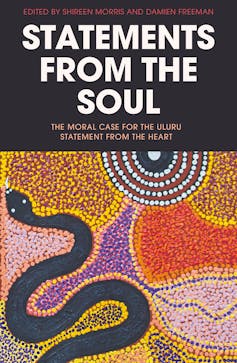
In the same way, we fight for causes such as the Uluru Statement from the Heart. It is evident that policies and legislation shape lives and generations. My family’s story is one of many that have been dictated by the laws and policies created by the white man.
Australia should take heed of these stories and realise the importance of enabling First Nations people to make decisions for themselves and not go through what my family experienced. These stories demonstrate why Indigenous peoples need a constitutionally guaranteed First Nations Voice, so we can have a fairer say in laws and policies made about us. Such a measure might have prevented, or at least improved, some of the unjust policies of the past.
The Uluru Statement is an opportunity to bring communities together for generations to come. Just as Goolam Badoola served his community with good intentions and sincerity, we must also revisit our intentions and instil the sincerity in this good action, to enable the empowerment of First Nations people.
This is an edited extract from Statements from the Soul: The Moral Case for the Uluru Statement from the Heart, edited by Shireen Morris and Damian Freeman (Black Inc.).![]()
Sabah Rind, Lecturer, Centre for Aboriginal Studies, Curtin University
This article is republished from The Conversation under a Creative Commons license. Read the original article.
Returning a name to an artist: the work of Majumbu, a previously unknown Australian painter

Aboriginal and Torres Strait Islander readers are advised this article contains names and images of deceased people.
Arnhem Land rock and bark paintings have fascinated people across the world since the early 1800s. Rock art was first recorded by Matthew Flinders and his onboard artist William Westall at Chasm Island in January 1803 while they were circumnavigating Australia.
In the early to mid-1800s, there was interest in Arnhem Land paintings on sheets of bark used to form hut-like shelters by visitors to Port Essington. In the late 1800s, some visitors to Arnhem Land collected barks for museums.
The names and stories of the individuals who made most Aboriginal rock art and the earliest collected bark paintings are not known.
We have recently begun to address this. We have identified various artists who made early bark paintings and recent rock paintings.
Today, in Australian Archaeology, we announce the identification of another artist, Majumbu, also known as “Old Harry”.
Painting In Oenpelli
From 1912, anthropologist Baldwin Spencer and buffalo-shooter Paddy Cahill collected 163 bark paintings at Oenpelli (now Gunbalanya), Arnhem Land, near present-day Kakadu.
We used Cahill’s and Spencer’s notebooks and letters that identify a clan patriarch “Old Harry” as an artist who painted one of the spirit bark paintings and another, now missing, with three fish.

By scouring ethnographic records and constructing genealogies, we realised Old Harry’s Aboriginal name was Majumbu, and he also made rock paintings.
We analysed Majumbu’s characteristic art style from the known spirit bark painting and looked for evidence of the same features in the rest of the collection, identifying a further five paintings as well as another overseas.
With Aboriginal research partners, including two of Majumbu’s great grandchildren, we reviewed the paintings held in the Melbourne Museum and identified some of Majumbu’s known rock paintings to confirm him as the artist behind six of the works in Melbourne Museum’s collection of barks, and a seventh in the Museé du Quai Branly – Jacques Chirac, in Paris.
A Majestic Sight
Cahill established Oenpelli near the East Alligator River as a base camp settlement in 1910, employing Aboriginal people for buffalo hunting and agriculture.
Spencer first encountered bark paintings in July 1912 during his two-month stay with Cahill at the Oenpelli homestead. Spencer described in his notebooks the very positive impression the barks made on him and also commissioned a series of works from some of the most skilled artists.
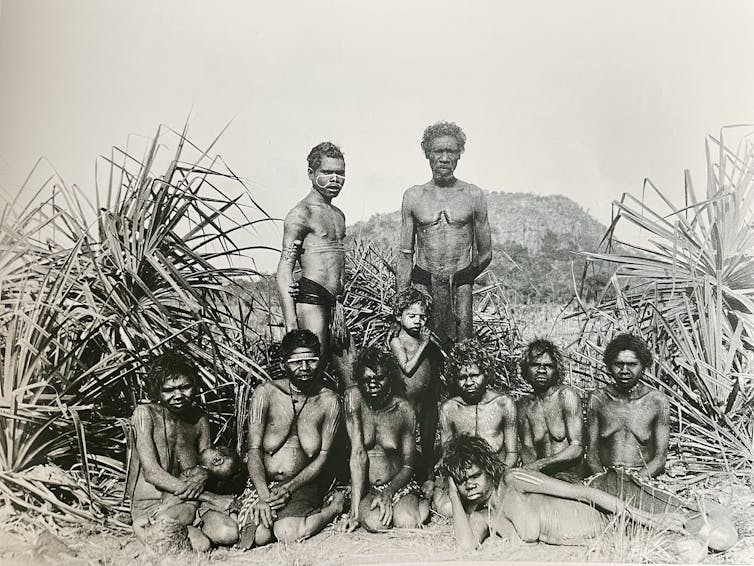
Majumbu and his family were Kunwinjku language speakers from an area east of Oenpelli. He and his six wives and several children were frequent visitors to Oenpelli.
Majumbu was described by visiting journalist Elsie Masson in 1913 as a “grey-bearded warrior” who
was a majestic sight, as he stalked, tall, gaunt, and solemn, across the yard, with his small son and heir perched high on his shoulders.
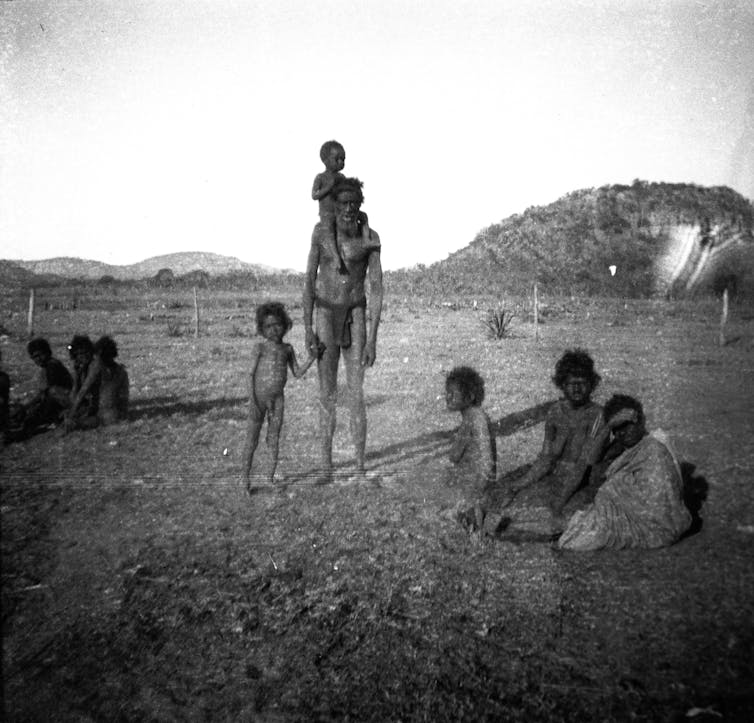
Distinctive Features
Majumbu’s artwork has distinctive stylistic features.
The bark paintings we identified all have similar hatch infill (rarrk) which features gently curving parallel lines of varying thickness. This is characteristic of Majumbu’s style, but not of other bark or rock artists from the area who painted parallel hatch lines of uniform thickness.
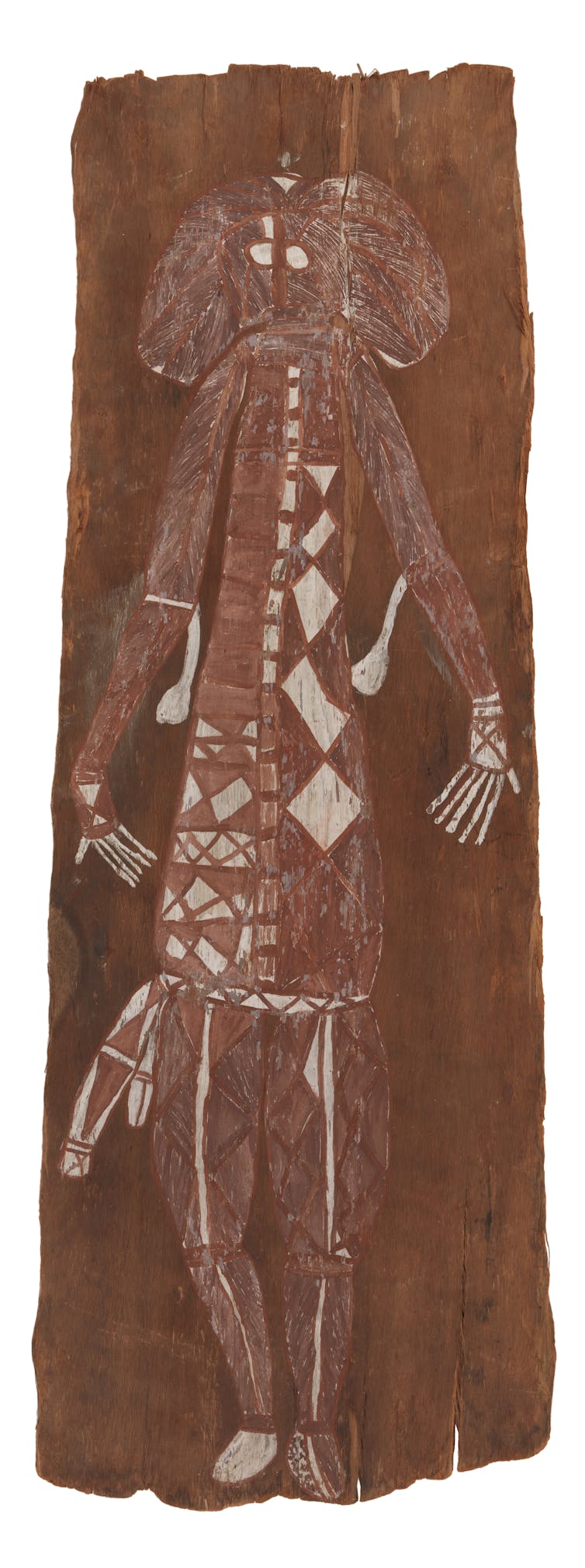
Some of the human-like figures in Majumbu’s paintings have an extra digit on their hands. He also often painted an X on hands and feet of human-like and some animal figures.
When eyes are shown, they are on stalks or are represented as rectangles. Human-like figures have diamond patterning for some of their infill and there is a central division of limbs and bodies.
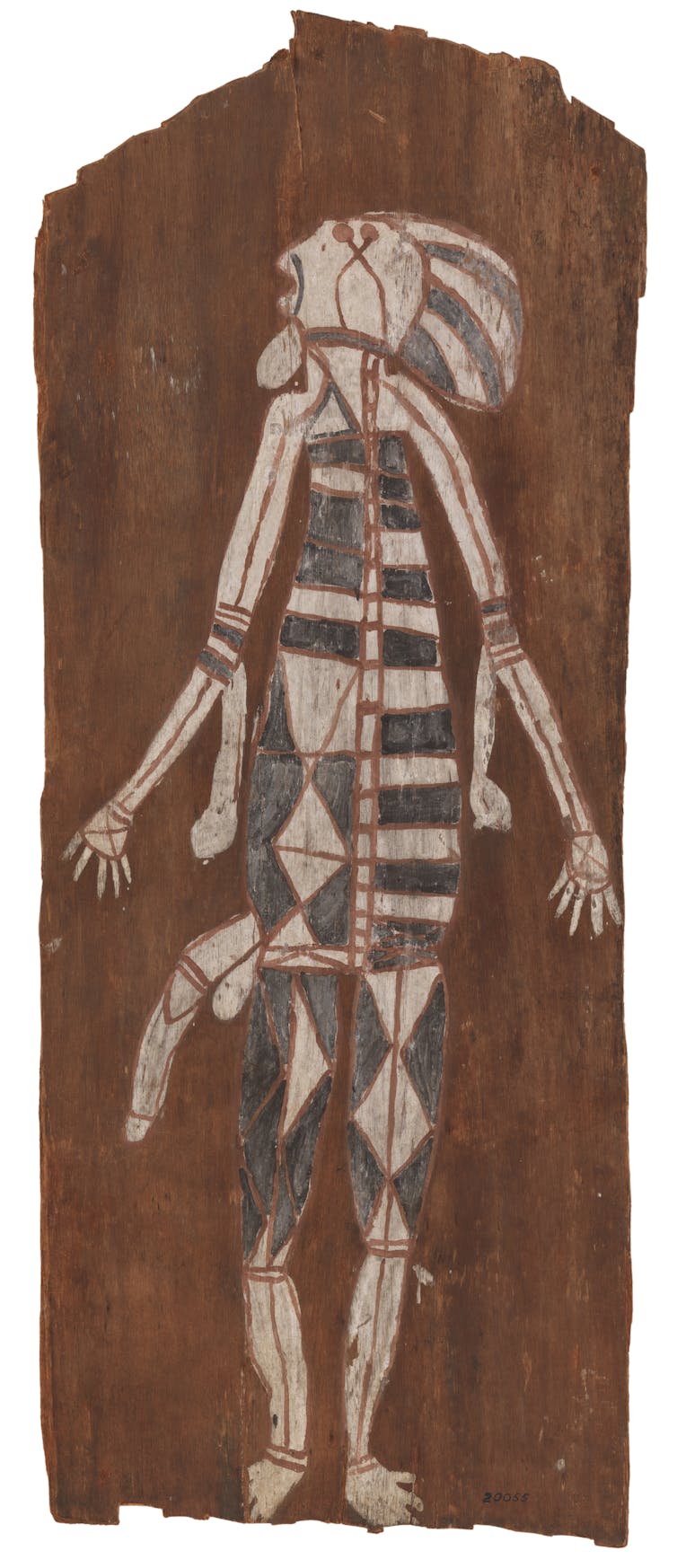
The largest bark in the Melbourne Museum’s Spencer-Cahill Collection is dominated by a painting of a crocodile that measures 2.94 metres by 1.03 metres. It is almost identical to a rock painting known to have been painted by Majumbu in a rock shelter where his family regularly camped.
With Gunbalanya community members, we relocated his crocodile rock painting in September 2022. The crocodile is significant because of the key role they play in regional ceremonies.
As with the spirit being paintings, it reaffirms Majumbu’s connection to his traditional land.
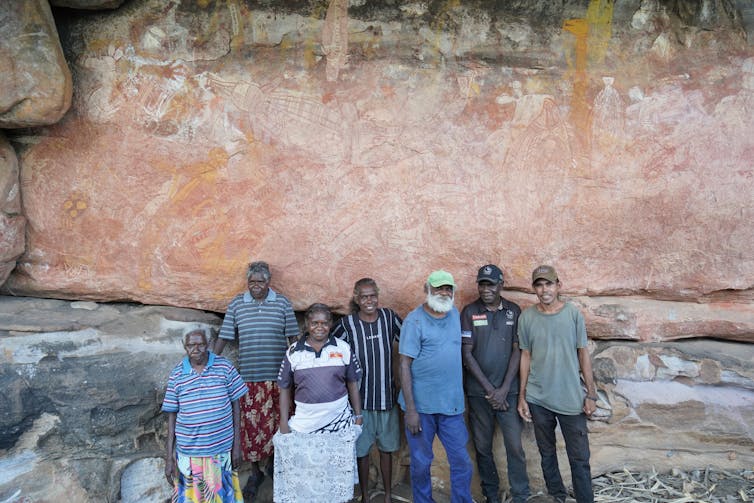
Priceless Heritage
We are indebted to the early bark painters of western Arnhem Land for creating such an extraordinary assemblage of paintings, and to Baldwin Spencer and Paddy Cahill for recognising their importance and having the foresight to collect them at a time when Aboriginal art was not valued by outsiders.
We are now able to learn about some of the Aboriginal artists behind this collection, their families and their lives, adding new life and significance to these early bark paintings not only for interested people across the globe but also for the artists’ descendants, most of whom still live at Gunbalanya (Oenpelli) today.![]()
Paul S.C.Taçon, Chair in Rock Art Research and Director of the Place, Evolution and Rock Art Heritage Unit (PERAHU), Griffith University; Andrea Jalandoni, Research Fellow, Griffith University; Joakim Goldhahn, Rock Art Australia Ian Potter Kimberley Chair, The University of Western Australia; Kenneth Mangiru, Danek Senior Traditional Owner, Indigenous Knowledge; Luke Taylor, Adjunct Fellow, Place, Evolution and Rock Art Heritage Unit, Griffith University, and Sally K. May, Associate Professor, University of Adelaide
This article is republished from The Conversation under a Creative Commons license. Read the original article.
Crusty, blistering and peeling: where do cold sores come from and what can you do about them?

Three quarters of Australians are living with herpes simplex virus type 1 (HSV-1), an infection which causes cold sores. These tiny fluid-filled lesions and blisters sit along the mouth and nose area.
This is not the same virus that causes genital herpes, HSV-2, which is present in about 13% of people worldwide.
In most cases, the body is quite good at suppressing HSV-1 with help from the immune system. This means that not everyone with the virus knows they have it.
However, sometimes the virus can overwhelm the system and present as a cold sore, which is a highly contagious sore on the mouth.
Always At The Worst Time
Around 92% of us have viruses inside our systems from past infections. For most people, these are latent viruses, which do not cause any concerns until reactivated.
While we can keep these viruses from reactivating and causing any issues, most of the time, exhaustion, physical exertion, as well as psychological stress, can suppress elements of the immune system. This leaves our body weakened, and opens the door for viruses.
Common reactivation of latent viruses include those that cause glandular fever, as well as chicken pox/shingles.

When HSV-1 reactivates, it may present as cold sores.
This usually starts as a tingling, itching, or burning sensation around the mouth, lips, or nose. Fluid-filled blisters will subsequently form, which dry out and leave a crust after about a week. The scab then flakes off and will typically heal within one to two weeks without leaving a scar.
Along with cold sores, other common symptoms of an active HSV-1 infection can include fever, nausea, headaches, sore throat, or swollen glands.
Cold Sores Can Get Anyone
Viruses can be spread quickly and easily. As such, if we do have an infection, preventing its spread is important.
Babies and children are particularly vulnerable. Around 38% of mothers kiss their babies on the lips, and 14% share a spoon with them. These practices can spread HSV-1, particulary in the first four weeks after birth, when a baby has the weakest immune defences.
As a general rule, to prevent spreading any infections, always avoid kissing a baby on the lips.

Sun exposure and cool weather encourage cold sores to appear, as the conditions can dry out the lips and damage the skin, creating a favourable environment for the virus.
Some treatments are available. If you are having trouble with cold sores, you can ask a doctor or pharmacist to outline some options for antiviral medicines. These impact the virus’ ability to reactivate, replicate, and divide.
So I Have A Cold Sore, What Should I Do?
Unfortunately, there is no cure for the underlying virus. But if you do have a cold sore, here are some things you can do to help:
- keep your hands clean and don’t touch the sores
- avoid spicy or acidic foods to minimise burning sensations
- seek over-the-counter or prescription antiviral tablets or creams
- remain hydrated
- wear sunscreen and avoid direct sun exposure
- cover-up during cold or dry weather
- avoid kissing or sharing anything with your saliva to minimise spreading.
If you are concerned about your cold sores (for example, if the gums become swollen, the wound weeps pus, or you get a fever), seek advice from your family doctor.
While many people carry HSV-1, not everyone will get cold sores. For those who do, looking after yourself is key. Eating healthy, sleeping well, and noticing when our bodies are telling us to take a step back and relax goes a long way towards keeping latent viruses at bay.![]()
Christian Moro, Associate Professor of Science & Medicine, Bond University and Charlotte Phelps, PhD Candidate, Health Science and Medicine, Bond University
This article is republished from The Conversation under a Creative Commons license. Read the original article.
Why do we stop exploring new music as we get older?

According to an estimate from the International Federation of the Phonographic Industry, an organisation that represents the international music industry, people around the world spend on average 20.1 hours per week listening to music, up from 18.4 hours in 2021.
We have more ways to access music than at any time in history and a whole world of unfamiliar styles to explore.
The thrill of discovering new songs and new sounds can enrich people of all ages.
Except, most of the time, it doesn’t.
Our willingness to explore new or unfamiliar music declines with age. Multiple studies confirm the sentiments of US songwriter and musician Bob Seger:
Today’s music ain’t got the same soul
I like that old time rock ‘n’ roll
Exploring New Music
Academics use the term “open-earedness” to describe our willingness to explore new music. Across our lives this willingness waxes and wanes.
Until around the age of 11, children are generally happy to engage with unfamiliar music. Early adolescence sees a reduction in open-earedness, but is accompanied by an intense increase in interest in music more generally. Open-earedness increases slightly during young adulthood, then declines as we age.
A major 2013 study involving more than 250,000 participants confirmed these changing behaviours. It also showed that the significance we ascribe to music after adolescence declines, and the amount of music we listen to reduces from a high point of 20% of our waking time during adolescence, to 13% in adulthood.
Shifting Priorities
Researchers have different, but generally complementary, theories to account for these population-level trends. Some interpret the observed decline in music engagement in terms of psychosocial maturation.
Adolescents use music as an identity marker and engage with it to navigate social circles. Adults have developed personalities and established social groups. As such, drivers to engage with new music are lessened.
These same researchers point to age-related changes to hearing acuity – specifically a lowering tolerance for loud and high-frequency sound – as one cause for a reduced interest in new music for some people.

One explanation for the age-based reduction in music consumption simply posits that responsibility-laden adults may have less discretionary time to explore their musical interests than younger people.
Some scholars question whether there is a straightforward link between the decline in the rate of new music consumption and increasing music intolerance.
Others argue against using chronological age as a predictor for stagnant musical taste without first considering the different ways we process and use music across our lifespan. Teenagers tend to be very aware of what they are listening to. Adults who use music as motivation or accompaniment for activities such as exercise or menial tasks may be less conscious of the extent to which they actually do listen to new music.
There is consensus that people are highly likely to have their taste shaped by the music they first encounter in adolescence.
Adolescence shapes musical taste firstly because our brains are developed to the point where we can fully process what we’re hearing, and secondly because the heightened emotions of puberty create strong and lasting bonds of memory.
Soundtrack Of Our Lives
Neuroscience provides some fascinating insights into how and why our musical tastes develop. We know, for example, infants display an affinity to music they heard in utero.
Also, musical taste boils down to familiarity. In his book This is Your Brain on Music, neuroscientist Daniel Levitin writes:
when we love a piece of music, it reminds us of other music we have heard, and it activates memory traces of emotional times in our lives.
What we think of as our “taste” is simply a dopamine reaction arising from patterns our brain recognises which create the expectation of pleasure based on pleasures past. When we stop actively listening to new or unfamiliar music the link between the musical pattern and pleasure is severed.

It may take a decade or two to get there, but the result is, eventually, “young people’s music” will alienate and bring no pleasure.
So, are we doomed to musical obsolescence as we age? Far from it. Recent research suggests musical taste does not need to calcify but can continue to develop across our lives.
Expanding Our Horizons
Here are some tips if you want to train your musical taste to extend beyond the “old favourites” of youth:
cultivate different modes of listening including in formal (concerts), focused (solitary), casual (as an accompaniment to other activity) and social settings
make listening habitual
be curious about what you’re listening to. You can help your brain form new patterns by knowing something of the story behind the music
be patient and persistent. Don’t assume because you don’t immediately like an unfamiliar piece that it’s not worth listening to. The more you listen, the better your brain will be at triggering a pleasure response
find a friend to give you recommendations. There’s a good chance you’ll listen to music suggested to you by someone you like and admire
keep listening to the music you love, but be willing to revisit long-held beliefs, particularly if you describe your musical taste in the negative (such as “I hate jazz”); it’s likely these attitudes will stifle your joy
don’t feel you have to keep up with new music trends. We’ve 1,000 years of music to explore.

If, after making the effort, you still find new popular music hard to bear, take solace from songwriter Ben Folds, who says in his memoir:
Good pop music, truly of its moment, should throw older adults off its scent. It should clear the room of boring adults and give the kids some space.
Timothy McKenry, Professor of Music, Australian Catholic University
This article is republished from The Conversation under a Creative Commons license. Read the original article.
Four habits of happy people – as recommended by a psychologist

What makes you happy? Maybe it’s getting up early to see the sunrise, hanging out with family and friends on a weekend, or going for a dip in the sea. But what does science say about the things happy people do?
We know that happy people tend to have strong relationships, good physical health and contribute regularly to their communities.
I have experimented over the past seven years with a number of happiness and wellbeing interventions in a bid to improve my own mental health and to understand how to best help others. Some strategies have stuck while others haven’t worked for me. But here’s what I’ve learnt along the way.
The reality is that there’ll be times we manage to engage with happiness habits and feel positive. Then there’ll be occasions when life throws a curve ball and our happiness is affected. But the good news is that we can all improve our levels of happiness with daily practice.
1. Move Your Body
My body needs to move regularly throughout the day. Sitting for long periods of time does not make my body or mind happy. At the very least I will walk briskly for an hour every day. I also like to swim, dance and do yoga.
Regular physical activity and exercise are high on the list for happiness as studies consistently demonstrate a link between being physically active and increased subjective wellbeing, aka happiness.

Research shows that walking for 30 minutes a day can improve your health. But studies on happiness show that people benefit more when they engage in moderate and high-intensity exercise, which increases the heart rate.
Moderate exercise is anything that makes you slightly out of breath – you can still talk but probably couldn’t sing a song.
2. Prioritise Connection
The most recent happiness research shows that our social connections are important in terms of overall wellbeing and life satisfaction. Indeed, making time to talk, listen, share and have fun with friends and family is a habit I try to prioritise.
But a recent study has found that we generally engage more with friends and family when we feel unhappy and less so when we are happy. This may be because we naturally seek out comfort and support to feel happier and pursue other activities when our happiness is stable.

It seems to come down to a question of balance, too much time alone can lead to negative emotions and so seeking out others is a natural way to alleviate this and boost our mood.
On the flip side when we feel positive and happier we are more inclined to support others and provide a shoulder to cry on. Nonetheless spending time in the company of friends and family provides both short-term and long-term happiness gains.
3. Practice Gratitude
Our outlook on life and how we evaluate things also plays a huge part in our happiness levels. Studies have found that having a more optimistic mindset and practising a sense of gratitude can buffer against negative emotions and increase happiness.
Practising daily gratitude, such as counting my blessings or listing things throughout the day`I am grateful for, helps me think more positively and feel happier. You can do this in a number of ways, for example, a daily gratitude journal, which can be handwritten or kept on your phone.
The three good things intervention is a quick and easy habit to adopt for increasing optimism. You simply write down three things that went well every day and reflect on what was good about these.

There are many apps now that can prompt you and keep track of your gratitude. Other apps allow you to create vision boards and positive affirmations for your days. Although some may seem gimmicky it’s all about that gentle nudging towards positivity, which the science supports. Or in other words, practising and cultivating an attitude of gratitude and appreciation generally works, and helps you to feel more positive about your life. Gratitude also helps you to see the bigger picture and become more resilient in the face of adversity.
You can also practice gratitude more naturally by giving thanks – telling someone what you are grateful for that day or sending thank-you messages. Indeed, it might sound trite but this is important as research shows daily feelings of gratitude are associated with higher levels of positive emotions and better social wellbeing.
4. Spending Time With Pets Helps Too
My pets are part and parcel of our family routine and also support me in my daily happiness. I find going for walks easier to do because of my dogs. Research shows that dogs motivate their human companions to be more active and in turn, both dog and human have a shared pleasurable experience that boosts their happiness.

I also enjoy sitting with my cats while drinking tea and reading a book. Studies have found that family pets provide many benefits towards health and happiness, as they not only provide companionship but also reduce incidents of depression and anxiety while helping to boost our happiness and self-esteem levels.
The main ingredients for happiness and what the research boils down to are social connections and activity – of both the mind and body. And finding a flow to life through our daily habits and intentions can lead to happier, more fulfilling lives.![]()
Lowri Dowthwaite-Walsh, Senior Lecturer in Psychological Interventions, University of Central Lancashire
This article is republished from The Conversation under a Creative Commons license. Read the original article.
In a new study, we’ve observed clues that distinguish the very deepest part of Earth’s core

Not so long ago, Earth’s interior was thought to be made up of four layers: the crust, mantle, (liquid) outer core and (solid) inner core.
In a new study published today in Nature Communications, we provide further evidence for the existence of an “innermost inner core” – a distinct internal metallic ball embedded in the inner core like the most petite Russian nesting doll.
Studying Earth’s centre is not just a topic of academic curiosity, but something that sheds light on the very evolution of life on our planet’s surface.
This is because the inner core grows outwards by solidifying materials from the liquid outer core. As these materials solidify, heat is released and causes upward movement in the liquid layer – what’s known as a convection current. In turn, this convection generates our planet’s geomagnetic field.
The magnetic field protects life on Earth from harmful cosmic radiation. Without the shield it provides, life on Earth would not be possible in the form we know today.
So, understanding the evolutionary history of our planet’s inner core and its connection with the geomagnetic field is relevant to understanding the timeline of life’s evolution on Earth’s surface.
Studying The Insides Of The Planet
Like radiologists imaging a patient’s internal organs, seismologists use seismic waves from large earthquakes to study the deep interior of Earth. Earthquakes are our sources, and seismometers recording ground motions or vibrations that move through Earth are our receivers.
However, unlike medical imaging, we do not have the luxury of having sources and receivers equally distributed around the body. Large earthquakes useful for our probes are confined near tectonic margins, such as the Ring of Fire surrounding the Pacific. Meanwhile, seismometers mainly exist on land.
Furthermore, the inner core, which is one-fifth of Earth’s radius, accounts for less than 1% of Earth’s volume. To target this relatively small volume in the planet’s centre, seismometers often need to be positioned on the opposite side of the globe, the so-called antipode of an earthquake.
But that’s unlikely in practice because the antipodes of active earthquake zones are often in the ocean, where seismometers are expensive to install.
With the limited data we do have from such antipode measurements, an internal metallic ball within the inner core – the innermost inner core – was hypothesised about 20 years ago, with an estimated radius of about 300km.
Several lines of evidence have confirmed its existence, including recent studies from our research group.
Bouncing Seismic Waves
Now, for the first time, we report observations of seismic waves originating from powerful earthquakes travelling back and forth from one side of the globe to the other up to five times like a ricochet. These new observations are exciting because they provide new probes from different angles of the centremost part of our planet.
A critical advantage of our study was getting data from dense continental-scale networks (consisting of several hundred seismometers) installed around some of the largest quakes.
It differs from previous studies because it uses seismic waves that bounce multiple times within Earth, along its diameter and through its centre. By capturing them, we obtain an unparalleled sampling of the innermost inner core.
A Ball In The Centre
The potential difference between the innermost metallic ball and the outer shell of the inner core is not in its chemical composition, like with some other Earth layers. Both are likely made of an iron-nickel alloy with small amounts of lighter chemical elements.
Additionally, the transition from the innermost (solid) ball to the outer shell of the inner core (also solid) seems gradual rather than sharp. That is why we can’t observe it via direct reflections of seismic waves from it. This differs from previous studies documenting sharp boundaries between the other layers inside Earth – from crust to mantle, for example.
So, what precisely did we observe that gives us clues about this innermost inner core?
The observed difference is in anisotropy – a material’s property to let (or propagate) seismic waves faster or slower through it depending on the direction in which they travel.
Different speeds could be caused by different arrangements of iron atoms at high temperatures and pressures, or by the arrangements of atoms when crystals grow.
There is strong evidence that the outer shell of the inner core is anisotropic. The slowest direction of seismic waves is in the equatorial plane (and the fastest is parallel to Earth’s spin axis).
By contrast, in the innermost part of the inner core – as our study of the ricochet waves shows – the slowest direction of propagation forms an oblique angle with the equatorial plane. This is critical, and this is why we can say we’ve detected “distinct” anisotropy in the innermost inner core.
Excitingly, while shallow structures within Earth’s crust and upper mantle are being mapped in incredible detail, we are still at the discovery stage regarding its deepest structures.
However, the image of Earth’s deep interior is getting sharper with the expansion of the dense continental networks, advanced data analysing techniques, and computational capacities.![]()
Thanh-Son Pham, Postdoctoral Fellow in Geophysics, Australian National University and Hrvoje Tkalčić, Professor, Head of Geophysics, Director of Warramunga Array, Australian National University
This article is republished from The Conversation under a Creative Commons license. Read the original article.
There could be alien life on Mars, but will our rovers be able to find it?

Robotic rovers are currently exploring the surface of Mars. Part of a rover’s mission is to survey the planet for signs of life. There might be nothing to find – but what if there is, and the rovers just can’t “see” it?
New research published today in Nature Communications suggests the rovers’ current equipment might not actually be up to the task of finding evidence of life.
As an extreme environment microbiologist, the challenges of searching for life where it seems near-impossible are familiar to me.
In astrobiology, we study the diversity of life in sites on Earth with environmental or physical features that resemble regions already described on Mars. We call these terrestrial environments “Mars analogue” sites.
Limits Of Detection
The new research, led by Armando Azua-Bustos at the Center for Astrobiology in Madrid, tested the sophisticated instruments currently in use by NASA’s Curiosity and Perseverance rovers – as well as some newer lab equipment planned for future analysis – in the Mars analogue of the Atacama Desert.

Azua-Bustos and colleagues found the rovers’ testbed equipment – tools for analysing samples in the field – had limited ability to detect the traces of life we might expect to find on the red planet. They were able to detect the mineral components of the samples, but were not always able to detect organic molecules.
In my team’s case, our Mars analogue sites are the cold and hyper-arid deserts of the Dry Valleys and Windmill Islands in Antarctica.
In both of these sites, life exists despite extreme pressures. Finding evidence of life is challenging, given the harsh conditions and the scarcity of microbial life present.
First, we must define the biological and physical boundaries of life existing (and being detected) in analogue “extreme” environments. Then we need to develop tools to identify the “biosignatures” for life. These include organic molecules like lipids, nucleic acids and proteins. Finally, we determine how sensitive tools need to be to detect those biosignatures, on Earth and also Mars. This tells us the limits of our detection.
The Search For A Dark Microbiome
In my field of extreme microbiology, “microbial dark matter” is when the majority of microscopic organisms in a sample have not been isolated and/or characterised. To identify them, we require next-generation sequencing need to define. Azua-Bustos’s team go one step further, proposing a “dark microbiome” which contains potentially relic, extinct Earth species.
Azua-Bustos’s team found sophisticated laboratory techniques could detect a dark microbiome in the Atacama Desert’s Martian-like hyper-arid soil samples. However, the rovers’ current equipment wouldn’t be able to detect it on Mars.
In samples with such scarce biomass, we use highly sensitive laboratory methods to detect microbial life, including gene sequencing and visualising cells using microscopic analysis. Prototypes for genome sequencing in the field are being developed, but they do not have the sensitivity needed for low biomass samples – yet.
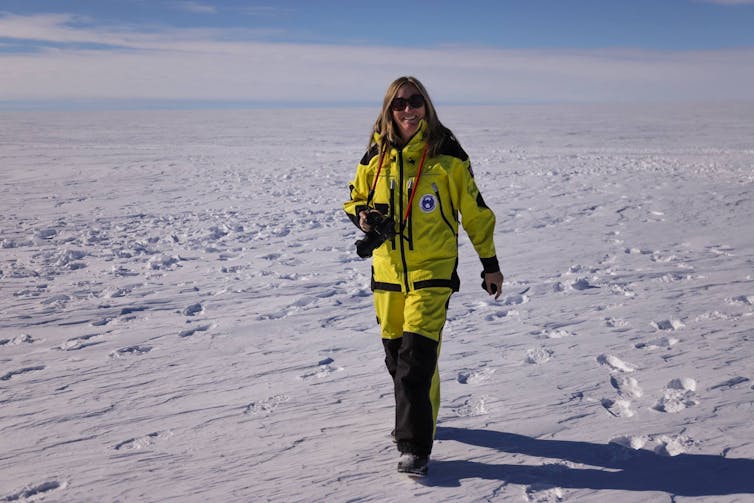
Different Planet, Different Rules
The search for life on other planets also relies on our understanding of what life would need to exist, with the simplest list being energy, carbon and liquid water.
On Earth, most organisms use photosynthesis to harness energy from sunlight. This process requires water, which is almost totally unavailable in dry desert environments like Antarctica and the Atacama Desert – and, most likely, Mars. We think a process we dubbed “atmospheric chemosynthesis” could be filling this gap.
My team first discovered atmospheric chemosynthesis in the cold desert soils of Antarctica. In this overlooked metabolic process, bacteria literally “live on thin air” by consuming trace levels of hydrogen and carbon monoxide gas from the atmosphere.
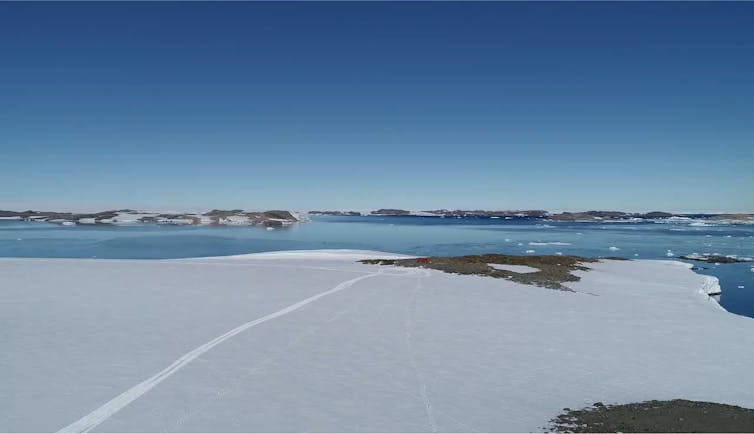
We think dry desert microbiomes may rely on this process for energy as well as water, which is a by-product of the process. Ecosystems like the ones we’ve found in Antarctica now offer one of the most promising ecological models in the search for Martian life.
We now believe there is potential for life in the ice-cemented subsurface of Mars. My team – alongside collaborators at NASA and the University of Pretoria – plan to investigate this in Antarctica’s University Valley, by defining the environmental limits to energy, metabolic water and carbon production via trace gas consumption.
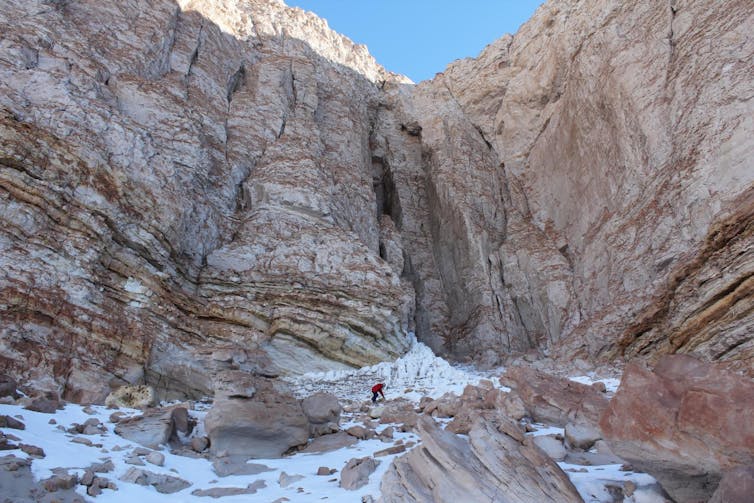
We Won’t Find What We Can’t Define
Our new knowledge of target biosignatures and the level of sensitivity needed to detect them will be critical when designing or optimising future instrumentation to be deployed on missions aimed at finding life.
The goal of future missions to Mars, including the Icebreaker Life mission planned for 2026, is to search for evidence of life. The Icebreaker Life will sample ice-cemented ground, similar to Antarctic dry permafrost, and if it detects signs of life, a Mars Sample Return mission would be a high priority.
Returning samples to Earth for laboratory analysis is risky. As we found with our Antarctic soil samples, challenges can include contamination, preservation of cold temperatures during transport, and the need for specialist quarantine laboratories, to analyse samples without destroying them.
But as Asua-Bustos suggests, bringing samples to Earth for detailed lab analyses may be the only sure way to detect – or rule out – the presence (or past presence) of life.![]()
Belinda Ferrari, Professor of Microbiology, UNSW Sydney
This article is republished from The Conversation under a Creative Commons license. Read the original article.
Book Of The Month - March 2023: Remembering Babylon By David Malouf
Remembering Babylon is a book by David Malouf, published in 1993. It won the inaugural International Dublin Literary Award and was shortlisted for the Booker Prize and the Miles Franklin Award.
The novel covers themes of isolation, language, relationships (particularly those between men), community and living on the edge (of society, consciousness, culture). Its themes evolve into a greater narrative of an English boy, Gemmy Fairley, who is marooned on a foreign land and is raised by a group of aborigines, natives to the land in Queensland. When white settlers reach the area, he attempts to move back in the world of Europeans. As Gemmy wrestles with his own identity, the community of settlers struggle to deal with their fear of the unknown.
The narrative was influenced by the experiences of James Morrill, a shipwreck survivor who lived with Aboriginal people in North Queensland for 17 years from 1846 to 1863.
Gemmy is first shown at the fence between the European settlement, and the aborigine lands, about to fall onto the white side while three European children watched.
"The creature or spirit in him had spoken up, having all along had the words in there that would betray him and which, when they came hooting out of his mouth, so astonished him: Do not shoot. I am a B-b-British object."(p.33)
Gemmy contemplating Janet:
"She was a puzzle to him. He could never be sure what she was thinking. He knew the boy's thoughts because he wanted them known. His power lay in your recognizing that he possessed it. It was a power that belonged to him because he was a boy; because one day, the authority he had claimed in raising the stick to his shoulder would be real. The girl's power was entirely her own. She needed no witness to it."(p. 36)
"He was a parody of a white man."(p.39)
The settlers:
"For at any moment--and this was the fact of the matter--they might be overwhelmed."(p.42)
"What you fix your gaze on is the little hard-backed flies that are crawling about in the corner of its bloodshot eyes and hopping down at intervals to drink the sweat of its lip. And the horror it carries to you is not just the smell, in your own sweat, of a half-forgotten swamp-world going back deep in both of you, but that for him, as you meet here face to face in the sun, you and all you stand for have not yet appeared over the horizon of the world, so that after a moment all the wealth of it goes dim in you, then is canceled altogether, and you meet at last in a terrifying equality that strips the last rags from your soul and leaves you so far out on the edge of yourself that your fear now is that you may never go back. It was the mixture of monstrous strangeness and unwelcome likeness that made Gemmy Fairley so disturbing to them, since at any moment he could show either one face or the other; as if he were always standing there at one of those meetings, but in his case willingly and the encounter was an embrace."(p.43)
David George Joseph Malouf AO (born 20 March 1934) is an Australian poet, novelist, short story writer, playwright and librettist. Malouf was born in Brisbane, Australia, to a Christian Lebanese father and an English-born mother of Portuguese Sephardi Jewish descent. His paternal family had immigrated from Lebanon in the 1880s, while his mother's family had moved to England via the Netherlands, before migrating to Australia in 1913.
He attended Brisbane Grammar School and graduated from the University of Queensland with a B.A. degree in 1955. He lectured for a short period before moving to London, where he taught at Holland Park School, before relocating to Birkenhead in 1962. He returned to Australia in 1968, taught at his old school, and lectured in English at the Universities of Queensland and Sydney. Mr. Malouf identifies as gay. He has lived in England and Tuscany, and for the past three decades spent most of his time in Sydney.
His Booker Prize-shortlisted novel Remembering Babylon (1993) is set in northern Australia during the 1850s amid a community of English immigrant farmers (with one Scottish family) whose isolated existence is threatened by the arrival of a stranger, a young white man raised from boyhood by Indigenous Australians.
The Drug Fasudil Is Found To Reverse Key Symptoms Of Schizophrenia In Mice
How To Make Hydrogen Straight From Seawater - No Desalination Required
Resilience In The Face Of Disaster: New Reports Examine Mental Health And Bushfires
Scientists Find World's Oldest European Hedgehog
- The oldest hedgehog in the sample was 16 years old -- the oldest scientifically documented European hedgehog ever found. Two other individuals lived for 13 and 11 years respectively. The previous record holder lived for 9 years.
- Despite these long-lived individuals, the average age of the hedgehogs was only around two years. About a third (30%) of the hedgehogs died at or before the age of one year.
- Most (56%) of the hedgehogs had been killed when crossing roads. 22% died at a hedgehog rehabilitation centre (for instance, following a dog attack), and 22% died of natural causes in the wild.
- Male hedgehogs in general lived longer than females (2.1 vs 1.6 years, or 24% longer), which is uncommon in mammals. But male hedgehogs were also more likely to be killed in traffic. This may be because males have larger ranges than females and likely move over larger areas, bringing them into contact more frequently with roads.
- For both male and female hedgehogs, road deaths peaked during the month of July, which is the height of the mating season for hedgehogs in Denmark. This is likely because hedgehogs walk long distances and cross more roads in their search for mates.
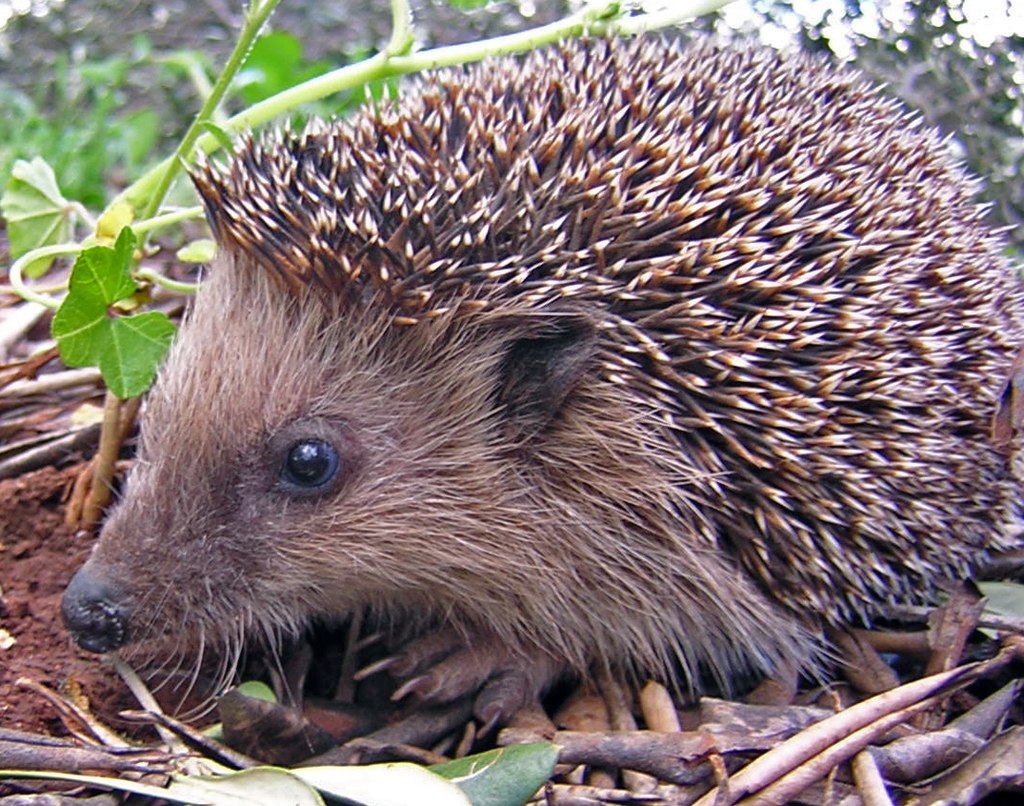
31 years after the advent of compulsory super, the government is about to decide what it’s for. The answer will matter
Deborah Ralston, Monash UniversityToday Treasurer Jim Chalmers released a consultation paper on “Legislating the Purpose of Superannuation”.
This is a long-awaited piece of work that has been the subject of ongoing discussion since it was recommended by the Rudd government’s Financial System Inquiry in 2014.
A subsequent bill introduced by the Morrison government failed to obtain agreement and lapsed in 2019.
The 2020 Retirement Income Review, of which I was a panel member, also agreed an objective was required to “anchor the direction of policy settings, help ensure the purpose of the system is understood, and provide a framework for assessing the performance of the system”.
In the consultation paper, Treasurer Chalmers proposes that:
The purpose of superannuation is to preserve savings to deliver income for a dignified retirement, alongside government support, in an equitable and sustainable way.
I find it hard to argue with this statement as it reflects much of the detailed research undertaken by the Retirement Income Review.
The fact is super is there to provide retirement income. It should be seen, not as a nest egg, but as a source of income in retirement.
Not A Nest Egg
In order to achieve this, it needs to be preserved for that purpose and that purpose only. There are currently many leakages in the system which are exploited by matters, among them the use of super to fund elective surgery.
Hopefully, super funds will provide retirement income projections to reinforce this point and prepare members to think about the level of income they want in retirement and how much they can safely draw down balances.
To do this properly, people need guidance and advice, a subject addressed in the report of a separate Quality of Advice Review released this month.
Right now many retirees are intent on preserving their super as a nest egg, to ensure they don’t run out of funds. The Retirement Income Review heard that most go to their graves with 80-90% of their super as an unintended bequest.
As to a “dignified” retirement - the word proposed by Chalmers in the Consultation paper – the age pension already provides a floor for retirement income to ensure people are not at risk of poverty in retirement. It has grown faster than both wages and prices since 2009 and works well as a safety net.
The proportion of retirees receiving the pension increases with age. In mid-2019, 42% of people aged 66 received the age pension, compared with 80% aged 80.
A Retirement That Maintains Standard Of Living
As super balances grow and the system reaches maturity so retirees have had the super guarantee all of their working lives, reliance on the age pension will decline, particularly for those on middle incomes.
A good goal for super is to allow retirees to maintain a standard of living commensurate with their pre-retirement income. A good way of measuring this is by use of a replacement rate - say 65-75% of pre-retirement income. Absolute targets make little sense when people have become used to different incomes throughout their working lives.
There are a wide range of government programs that help provide this, in addition to super and the pension. Programs such as health and aged care services, tax benefits, and various concessions play an important role as well.
“Equity”, another word used by Chalmers, indicates that people in similar circumstances should receive similar benefits. This isn’t the case right now.
At the moment the age pension assets test favours home-owners; high income earners benefit more from super tax concessions than low earners; and women tend to benefit less than men. Some of the reasons for this are outside the retirement system itself, as are the poor situations racing renters who receive inadequate Commonwealth Rent Assistance and involuntary retirees who spend an extended period on unemployment benefits.
A Sustainable System
“Sustainability”, another word used by Chalmers, is needed to ensure tomorrow’s workers are not unreasonably burdened supporting today’s retirees. At present those with large super balances benefit the most from tax concessions.
The Retirement Income Review found that in 2018 there were 11,000 people with super balances over $5 million, and by now there are many more.
These balances are arguably well in excess of what is needed for retirement income and the tax concessions which accrue to these accounts could fund a significant number of age pensions.
Over the next two decades these large balances will decline due to caps imposed in more recent years. In the meantime, the concessions are expensive – a tempting piece of low-hanging fruit in tight fiscal times.
Submissions on the Consultation Paper are due by March 31.
The final wording of the sentence that is chosen will be incredibly important.
It will provide a focus to guide deliberations about how much super we need, how much it should be taxed, and what it should be used for. Three decades on from the start of compulsory super, it is overdue.![]()
Deborah Ralston, Professorial fellow, Monash University
This article is republished from The Conversation under a Creative Commons license. Read the original article.
Disability and dignity – 4 things to think about if you want to ‘help’

The prevailing public perception is that everything people with disability do is a challenge. Sometimes, that is true. In those times, we may ask or say “yes” to a kind and respectful offer of assistance. Other times, and more often than not, we are simply navigating daily life when a person without disability interjects to offer assistance.
It is rare anyone means to be discriminatory in their approach to supporting people with disability, but society’s attitude still has a way to go.
Disability rights activism used to take place in the streets or by occupying government property or buildings (sometimes it still does). But the age of social media has created an opportunity for people with disability to explore and exercise advocacy in new ways too. Air travel experiences of being treated – and handled – like “baggage”, as writer and advocate Zoe Simmons recently detailed on Twitter, expose the attitudinal barriers people with disability encounter when others “help”.
There could be lots of reasons why people with disability decline or don’t want offers of help. Recent research at the Dignity Project, at Griffith University, echoes Simmons’ experience and also shows there is no “one-size fits all” approach to recommend.
But not offering assistance to fellow human beings is not the answer either. So, what is the right way to ask a person with disability if they would like help?
Disability Is About The Environment, Not A Diagnosis
More than 1.3 billion people globally live with disability. The Convention on the Rights of Persons with Disabilities states disability does not result from a diagnosis or impairment, but when a person encounters inaccessible, inflexible, or insufficient environments, systems and attitudes.
In an ideal world, everyone would appreciate that disability is a mismatch between person and environment and would be motivated by a human rights perspective.
In reality, Australian society is still lagging in its understanding of and attitude towards disability. Most people are confused or unsure about how to treat people with disability, which leads to exclusion and increases the barriers people with disability encounter.
Barriers for people with disability can be as obvious as a building with no elevator or as subtle as a pat on the back from a passerby.
Barriers Take Their Toll
Participants in the Dignity Project, a citizen science research and advocacy program at Griffith University, shared the impact and cumulative effect frequent and repeated encounters with barriers can have on a person’s mental health and behaviour.
These undignified interactions result in people feeling like “less of a person, less worthy, less valid, less visible, annoyed, frustrated, sad, angry” with “no rights, no voice, and reduced control”.
As a result, people may avoid social situations and isolate themselves. Over time, people with disability are silenced or diminished in their role as decision makers in their own lives.
It can be useful to think about four aspects of offering help.
1. Acknowledge People And Their Rights
Misinformation and limited or reductive tropes perpetuated in the media contribute to the challenge of confronting and changing attitudes.
Participants in the Dignity Project called for acknowledgement and recognition that people with disability are human beings with the same full dimensions of personhood and human rights as people without disability. They described very few instances of needing help but when they did, said dignified experiences are defined by acknowledgement. In the words of one person:
First off, ask me ‘do you need help?’ and acknowledge that I might not need it. I will ask for help if I need it […] Ask how best to help and provide the help I ask for, rather than doing what [you think] I needed.
2. Pay Attention To The Response And Consider What Might Be Behind It
People with disability have rights including the right to freedom of expression and opinion and respect for privacy.
So, listen to a person’s response when asked about needing assistance. If you receive a negative response, have empathy for what you may not necessarily understand. If a response is short or angry, accept it and don’t grow resentful. That response may come from a history of discrimination and misrecognition.
The way to ask a person with disability if they would like help depends on contextual, subjective and relational factors. Providing help or support requires consideration of the diversity of experience, the situation, your relationship with the person and the consequences of helping or not helping.
Although helping may seem like an appropriate and polite thing to do, it may not even be appropriate to ask, particularly if doing so becomes a public act that draws attention to the person.
3. Know What Not To Do
There are some clear messages about what not to do, reiterated in our research and in Zoe Simmons’ tweets.
Never physically touch someone, their assistive technology, aid or a support animal without asking.
It is inappropriate to ask people about their diagnosis or impairment if not related to the topic at hand and make sure you use language that is dignified.
Even if you mean well, avoid comments that frame disability or a person’s existence in a negative light, such as “you’re managing so well despite everything” or “you’re so brave”.
4. Think Bigger
Social change takes time. Auditing your own personal biases while respectfully interacting with a person with disability and simultaneously managing the mix of emotions that can be triggered by disability is a complex social skill.
Building an inclusive society will ensure people with and without disability can interact comfortably in the world together.
A positive and affirming form of “help” might be ensuring environments and attitudes over which you have influence are always accessible and inclusive.![]()
Angel Dixon, Researcher, Griffith University; Elizabeth Kendall, Professor, Director, Griffith Inclusive Futures, Griffith University, Griffith University, and Kelsey Chapman, Research Fellow Dignity Project, Griffith University
This article is republished from The Conversation under a Creative Commons license. Read the original article.
Proposed privacy reforms could help Australia play catch-up with other nations. But they fail to tackle targeted ads

In the recently released Privacy Act Review Report, the Attorney-General’s Department makes numerous important proposals that could see the legislation, enacted in 1988, begin to catch up to leading privacy laws globally.
Among the positive proposed changes are: more realistic definitions of personal information and consent, tighter limits on data retention, a right to erasure, and a requirement for data practices to be fair and reasonable.
However, the report’s proposals on targeted advertising don’t properly address the power imbalance between companies and consumers. Instead, they largely accept a status quo that sacrifices consumer privacy to the demands of online targeted ad businesses.
Capturing Personal Information Used To Track And Profile
Obligations under the existing Privacy Act only apply to “personal information”, but there has been legal uncertainty about what exactly constitutes “personal information”.
Currently, companies can track an individual’s online behaviour across different websites and connect it with their offline movements by matching their data with data collected from third parties, such as retailers or data brokers.
Some of these companies claim they’re not dealing in “personal information” since they don’t use the individual’s name or email address. Instead, the matching is done based on a unique identifier allocated to that person – such as a hashed email, for example.
The report proposes an expanded definition of “personal information” that clearly includes the various technical and online identifiers being used to track and profile consumers. Under this definition, companies could no longer claim such data collection and sharing are outside the scope of the Privacy Act.
Improved Consent (When Required)
The report also proposes higher standards for how consent is sought, in cases where the act requires it. This would require voluntary, informed, current, specific and unambiguous consent.
This would work against organisations claiming consumers have consented to unexpected data uses just because they used a website or an app with a link to a broadly worded privacy policy with take-it-or-leave-it terms.
For example, companies would need to demonstrate the higher standard of consent to collect sensitive information about someone’s mental health or sexual orientation. The report also proposes that some further data practices, such as precise geolocation tracking, should require consent.
However, it specifically states consent should not be required for some targeted ad practices. Yet surveys show most consumers regard these as misuses of their personal information.
‘Fair And Reasonable’ Data Practices
The report proposes a “fair and reasonable” test for dealings with personal information in general.
This recognises that consumers are saddled with too much of the responsibility for managing how their personal information is collected and used, while they lack the information, resources, expertise and control to do this effectively.
Instead, organisations covered by the Privacy Act should ensure their data handling practices are “fair and reasonable”, regardless of whether they have consumer consent. This would include considering whether a reasonable person would expect the data to be collected, used or disclosed in that way, and whether any dealing with children’s information is in the best interests of the child.
Prohibiting Targeted Ads Based On Sensitive Information
The report proposes the prohibition of targeting based on sensitive information and traits. However, it’s not always easy to draw the line between “sensitive” information or traits, and other personal information.
For instance, is having an interest in “cosmetic procedures” or “rapid weight loss” a sensitive trait, or a general reading interest? Companies may exploit such grey areas. So while prohibiting targeting based on sensitive information is appropriate, it’s not enough in itself.
Another loophole arises in the report’s proposal that consumer consent should be necessary before an organisation trades in their personal information. The report leaves open an exception to this consent requirement where the “trading” is reasonably necessary for an organisation’s functions or activities.
This may be a substantial exception: data brokers, for example, might argue their trade in personal information (without consumers’ knowledge or consent) is necessary.
Opt Out Only, Not Opt In
Both the ACCC and the UK Competition & Markets Authority have recommended consumers should opt in to the use of their personal information for targeted advertising if they wish to see this content.
But the report proposes individuals should only be allowed to opt out of “seeing” targeted ads. This still wouldn’t stop companies from collecting, using and disclosing a user’s personal information for broader targeting purposes.
Even if a consumer opts out of seeing targeted ads, a business may continue to collect their personal information to create “lookalike audiences” and target other people with similar attributes.
Although having the option to opt out of seeing targeted ads gives consumers some limited control, companies still control the “choice architecture” of such settings. They can use their control to make opting out confusing and difficult for users, by forcing them to navigate through multiple pages or websites with obscurely labelled settings.
Are Targeted Ads Necessary To Support Online Services?
This limitation of consumers’ choices was partly explained by the view of the Attorney-General’s Department that targeted ads are necessary to fund “free” services. This refers to services where consumers “pay” with their attention and data (which companies use to make revenue from targeted advertising).
However, many companies using customers’ personal information for targeted ad businesses aren’t providing free services. Consider online marketplaces such as Amazon or eBay, or subscription-based products of media companies such as NewsCorp and Nine.
Meta (Facebook) and the Interactive Advertising Bureau Australia argued that if consumers opt out of targeted ads, a company should be able to stop offering them the service in question. This proposal was rejected on the basis that a platform can still show non-targeted ads to such consumers.
Inconsistently, the report failed to question broader claims that targeted advertising – as opposed to less intrusive forms of advertising – must be protected for online services to be viable.
Real Change Is Needed
The reform of our privacy laws is long overdue. The government should avoid watering down potential improvements by attempting to preserve the status quo dictated by large businesses.
The government is seeking feedback on the report until March 31. It will then decide on the final form of the reforms it proposes, before these are debated in Parliament. ![]()
Katharine Kemp, Senior Lecturer, Faculty of Law & Justice, UNSW Sydney
This article is republished from The Conversation under a Creative Commons license. Read the original article.
How queuing leads to city centre violence and what our research says about preventing night-time brawls
Thomas Woolley, Cardiff University; James White, Cardiff University, and Simon C Moore, Cardiff UniversityPeople go out at night because they want to socialise, drink and be entertained. Unfortunately, all too often that leads to violent behaviour in our towns and city centres. But the events that lead to such violence are poorly understood.
We set out to explore some of the possible explanations of night-time violence using data on Cardiff city centre footfall (the number of people in the city centre) and assault-related attendances at the nearby University Hospital of Wales. We found that a break down in the unwritten etiquette of queuing may be one of the reasons behind increases in violence at night.
When revellers gather to enjoy themselves at night, they often drink alcohol and possibly take drugs. This typically sets the activity apart from other places where people gather, such as transport centres or places for other commercial activity such as shopping.
People are attracted to night-time environments based on the total number of social opportunities they provide, whether it’s going clubbing or visiting pubs. So, while entertainment venues compete against one another for trade, they also collectively market to attract patrons from near and far.
The relationship between footfall and assault related injuries

There has been plenty of research into what reduces or promotes night-time violence in city centres. One of the clear signals of danger is that the larger the footfall in the area, the larger the chance for assaults to occur.
Crowding and noise are associated with increases in violence in city centres at night. And, in Australia, it has been shown that when trading hours are restricted there is a decrease in violence.
But our research shows the correlation between footfall and assault is not linear. In other words, if we double the footfall, we do not simply double the number of assaults. The relationship between these two factors is more complicated, so we decided to investigate what could account for that.
Queue Etiquette
One particular aspect we considered was the role drunkenness has to play because it affects how people cooperate, for example when queuing. Queues are a social response to resource competition, whether that resource is nightclub entry, a pint of beer or a taxi.
However, since queuing is a social phenomenon, the people waiting in line have expectations about how others should behave, such as not skipping to the front.
When a violation of those unwritten rules occurs, people queuing in an orderly fashion will seek to defend the queue’s order, with the most vocal complaints stemming from those who are closest to where the person jumps into the line. Although even those ahead of the intrusion may also react to the injustice.
However, whether there’s a queue violation or not, waiting in line makes people stressed. This increases the longer they believe they have been waiting. In turn, such stress can lead to aggression.
To understand the role queues play in the relationship between footfall and assault, we used a mathematical model to help predict what would happen in a variety of night-time scenarios.
We assumed the average arrival time of people into a queue is constant. We also assumed the rate at which they are served and leave the queue is constant, but also rises and falls in line with the number of servers, such as bar staff, taxi drivers or similar.
We also adjusted the models to take account of various other factors, such as weather, bank holidays and whether there were Six Nations or other international rugby matches being played at Cardiff’s Principality Stadium.
We found there was a significant relationship between the number of people in the city centre and the number of assaults recorded in the hospital’s accident and emergency department. The relationship relating footfall with assaults we saw from our queuing models performed better than the simple linear relationship. This is why doubling footfall does not double assaults.
Our study also found events such as bank holidays and rugby matches led to an increase in violence, beyond what might be expected from the impact of footfall alone. Additionally, warmer weather also increased the likelihood of assaults but more rain did not have a significant effect.
Cutting City Centre Violence
Our mathematical models show that by reducing queuing time, stress and related violence drops too. The average waiting time drops dramatically as the number of servers increases. So when pubs, taxi services or similar are understaffed, that increases the competition between people queuing.
The UK Licensing Act 2003 places a duty on licensed premises to prevent crime and disorder and to maintain public safety. But there are no provisions on how licensed activity should increase as the number of patrons increases.
If further research confirms our observations, then there is a need to address the design and operation of night-time services, not only of bars, but of other areas where queues of revellers might form, such as taxi ranks and fast food outlets.![]()
Thomas Woolley, Senior Lecturer in Applied Mathematics, Cardiff University; James White, Chair professor, Cardiff University, and Simon C Moore, Professor of Public Health Research, Co-Director of Crime and Security Research Institute and Director of the Violence Research Group, Cardiff University
This article is republished from The Conversation under a Creative Commons license. Read the original article.
Ukraine: 12 months at war – Biden visit to Kyiv sets the seal on a year of growing western unity and Russian isolation
Stefan Wolff, University of Birmingham and Tatyana Malyarenko, National University Odesa Law AcademyUkraine undoubtedly remains on top of the global political agenda. Not only did it dominate discussions at the Munich security conference, but the surprise visit of the US president, Joe Biden, to Kyiv sent an unmistakable message to Russia, and the rest of the world: the west stands with Ukraine and will not let Vladimir Putin get away with his violation of Ukraine’s sovereignty and territorial integrity.
What’s more, Biden’s visit also underscores that the west has every confidence that the Russian president will not win this war and is finally coming round to the idea of providing Ukraine with what it needs to defeat Russia.
One year ago, things looked very different. After a prolonged military build-up, and amid heightening tensions between Russia and the west, Putin gave the order to invade Ukraine in the early hours of February 24 2022. Three days earlier, he had recognised the so-called Donetsk and Luhansk People’s Republics that pro-Russian proxy forces had occupied for eight years, with significant military and economic backing from the Kremlin.
What Putin still insists on calling a “special military operation”, which he expected to be completed swiftly and successfully, has gone anything but to plan. One year on, the war has ground to a very costly political, economic and above all military stalemate for both sides with no end in sight.

Since Vladimir Putin sent his war machine into Ukraine on February 24 2022, The Conversation has called upon some of the leading experts in international security, geopolitics and military tactics to help our readers understand the big issues. You can also subscribe to our weekly recap of expert analysis of the conflict in Ukraine.
This situation on the ground is mirrored by a divided international community, albeit one in which Russia has few significant allies left. Ultimately, the outcome of the war will be decided as much on the battlefield as it will be in capitals from Beijing to Brussels and Washington.
Ebb And Flow On The Battlefield
Initial Russian gains in the early days and weeks of the war were unsustainable, as Ukrainians put up a determined defence of their country and were supported early on by western military aid. Russian attempts to take the Ukrainian capital, Kyiv, had failed by April, and the Kremlin withdrew its forces from there, redeploying them to Donbas and south-eastern Ukraine.
This enabled Russia to establish a secure land bridge to Crimea, eventually taking the southern port city of Mariupol after a prolonged and bloody siege by the middle of May and capturing all of Luhansk region by early July. As Ukraine received more advanced western artillery, Russian efforts to take all of Donetsk stalled.
Buoyed by more western military support, Ukraine launched a counter-offensive in August, regaining significant territory along the entire front and prompting a Russian retreat from Kherson in November.
This was the most significant tactical defeat Putin had suffered since the withdrawal of troops from Kyiv seven months earlier and came despite a partial mobilisation in Russia at the end of September and an air campaign to cripple Ukraine’s critical national infrastructure.
A United Front In The West
Ukrainians’ determination to defend their country against Russian aggression from the very start of the invasion was not the only surprise for Putin. The western reaction – unprecedented sanctions and massive military and economic support for Kyiv – must have been a similarly rude awakening, in particular as the western coalition has remained largely united despite the challenges it has faced.
Military support, of course, has been the most crucial. More than €40 billion (£33.25 billion) worth of military assistance was offered to Ukraine by mid-November 2022, according to the Ukraine Support Tracker by the Kiel Institute for the World Economy. More than half of this support has been provided by the US, with the UK, EU institutions, and Germany being the next-largest contributors of arms, ammunition, equipment and training.
The EU, meanwhile, is on its tenth package of sanctions against Russia now. It has also give unprecedented financial assistance to Ukraine: €9 billion of macro-financial assistance were disbursed to Ukraine by early August 2022, a further €5 billion by mid-December, and the first €3 billion of a new €18 billion package were disbursed in January 2023.
While the bulk of the EU’s support has been financial and humanitarian assistance, there is also a significant military assistance component of more than €3 billion. This includes more than €100 million for the European Union Military Assistance Mission Ukraine, which will train some 15,000 Ukrainian soldiers over the next two years.
A Not-So-Divided International Community
If the west has remained united in its response to the invasion, the rest of the world remains warily divided. But this hardly provides a ringing endorsement for Russia’s aggression. On the contrary, a closer look at voting patterns on the five resolutions in the UN general assembly to date shows that Russia remains relatively isolated with only the support of a handful of dubious allies including Belarus, North Korea, Eritrea, Nicaragua and Syria.
Three resolutions: on Russia’s aggression (on March 2 2022), on the invasion’s humanitarian consequences (on March 24), and on Ukraine’s territorial integrity (on October 12), saw only four countries voting with Russia against the resolution, while 140, 141, and 143 states, respectively, condemned Russia’s violation of key principles of international law.
In two other votes – on suspending Russia from the Human Rights Council (on April 7) and on future prosecutions of war crimes and reparations (on November 13) – support for Russia was somewhat higher with 24 and 14 votes, respectively, against the two resolutions. But more than six times as many countries voted in favour on both occasions.
Considering that no country has recognised the annexation by Russia of the Donetsk, Luhansk, Zaporizhzhya and Kherson regions, Moscow is clearly on its own when it comes to its illegal land grab in Ukraine.
Most crucially, while China has repeatedly indicated sympathy for Russia’s decision to invade, it has remained steadfast in supporting Ukraine’s sovereignty and territorial integrity to date. Beijing has also warned Russia against meddling in others of its neighbours.
Enabling Ukraine To Win
Backing Ukraine against Russia “for as long as it takes”, has been the key message from western capitals for a year now – as the president of the European Commission, Ursula von der Leyen, reiterated in her speech at the World Economic Forum in Davos on January 13 this year.
There can be no question that this is what the west intends to do. What is less clear, though, is whether this means just enough assistance aimed at preventing Putin from winning or providing Ukraine with the support it needs to defeat Russia. Until now, it seems, western strategy has been too focused on the former, driven by anxieties about further escalation.
This has come at a significant cost to Ukraine. At the front lines, Kyiv still lacks the artillery, ammunition and armoured vehicles to push back Russian forces more decisively again in a future offensive. And behind the front lines, the lack of advanced air defence capabilities has made the country vulnerable to the crippling Russian attacks against its infrastructure.
Western leaders should not become comfortable with a “forever war”. They must step up their support and enable Ukraine to defeat this Russian aggression and restore its full sovereignty and territorial integrity – two principles of international law that still enjoy the support of an overwhelming majority of UN member states.![]()
Stefan Wolff, Professor of International Security, University of Birmingham and Tatyana Malyarenko, Professor of International Relations, National University Odesa Law Academy
This article is republished from The Conversation under a Creative Commons license. Read the original article.
Why it’s time for the UK to introduce mandatory training for new dog owners

With recent reports suggesting there has been an increase in fatal dog attacks in the UK, it’s clear the status quo isn’t working. Records indicate that in an average year there would be three dog fatalities. But in 2022 there were nine.
The reasons why records show an increase are complex but already in 2023 there have been two tragic incidents, one a dog walker who died from bites to the neck. The other attack, which is still being investigated, involved the death of a four-year-old girl.
In 1987, the UK government discontinued its dog licensing system as politicians felt the old licence scheme cost too much for the limited benefits it gave. It was replaced by dog controls in the Environmental Protection Act 1990 and the Dangerous Dogs Act 1991. But people told my research team that most dog bites are preventable, meaning the system is letting down both dogs and humans.
One idea researchers have discussed is that when an owner has a problem with an out-of-control dog they should have to take training, similar to the kind of “speed awareness” courses for drivers in the UK.
Veterinary experts in the Netherlands already do something like this. They have researched aggression in dogs and found training can help prevent it, especially training of both the owner and the dog. Training can help owners recognise potential behaviour issues and reduce it through proper socialisation, which training can help with too.
In some other countries, including Spain, where potentially dangerous dogs must be licensed before you can become a dog owner, you have to show that you are a “fit and proper person” to do so. Our previous research didn’t specifically call for dog licences. But it did find knowledge of dog behaviour before and during ownership of a dog was desirable. So too was compulsory dog training following a dog attack.

The problem with the old licence scheme was that it was almost impossible to enforce. The UK government estimated only around 50% of dog owners complied with the old scheme and registered their dogs.
You still need a licence to own a dog in Northern Ireland, where a licence costs £12.50 and lasts for 12 months. But it is thought that less than 40% of owners register their dogs.
UK law makes microchipping of dogs mandatory. Although government figures suggest 95% of dogs are chipped, it is doubtful every dog owner has done this.
Tracking Attacks
In the UK there are laws that deal with dog fouling, stray dogs and dogs that are dangerously out of control, whether in public or private. But dog attacks continue.
We don’t know exactly how many dog attacks there are each year in the UK. A figure often used by the media is that over 7,000 people go to hospital each year for dog bite treatment.
But research suggests this figure may be too low. One study of a community in Cheshire, England, found only a third of dog bites needed medical treatment and just 0.6% resulted in a hospital admission.
After dog attacks the people affected often call for more action to deal with dangerous dogs or say dog licences should be brought back. By itself, dog licensing would not solve everything.
For our 2021 research paper on dangerous dogs and responsible dog ownership we spoke to charities, local authorities, police and dog experts. We found the main issue was people could get a dog without knowing how to train or look after it.
Even with new measures like Lucy’s Law to tackle puppy farms and the 2019 licensing for breeders, dogs are still sold to people without checks on whether they can properly care for their new pet.
If an owner is trained to spot the early signs of problem behaviour or situations that might trigger an incident, simple things like keeping dogs on a lead or using a muzzle in busy public places could prevent attacks or make them less serious.
Time For Owners To Step Up
If we are serious about addressing dog control problems we should think about how to deal with the fact dogs often end up in the hands of people who are unable to care for them and deal with behaviour issues.
We aren’t the only ones who think this. Many members of the public understand the importance of prevention: a petition launched in 2022 to change dog laws to focus on early intervention attracted over 100,000 signatures.
No scheme or law will eliminate all dog control or attack issues. But the old style of paper dog licence was really just a tax on dog owners. Instead, it may be time for a form of registration or certificate that requires knowledge of dogs before a person can have one and that imposes ownership conditions, such as a suitable home, understanding of the duty of animal welfare that already exists in law, and a requirement for training when something goes wrong.
Registration should accompany sale and also be linked to the existing microchipping requirements. A new registration scheme would need resources to properly enforce, a big ask in a time of rising living costs and government austerity measures. But even if we can’t afford a new enforcement scheme, encouraging dog owners to develop the skills they need would be a good start.![]()
Angus Nurse, Head of Criminology and Criminal Justice, Nottingham Trent University
This article is republished from The Conversation under a Creative Commons license. Read the original article.
Disclaimer: These articles are not intended to provide medical advice, diagnosis or treatment. Views expressed here do not necessarily reflect those of Pittwater Online News or its staff.
